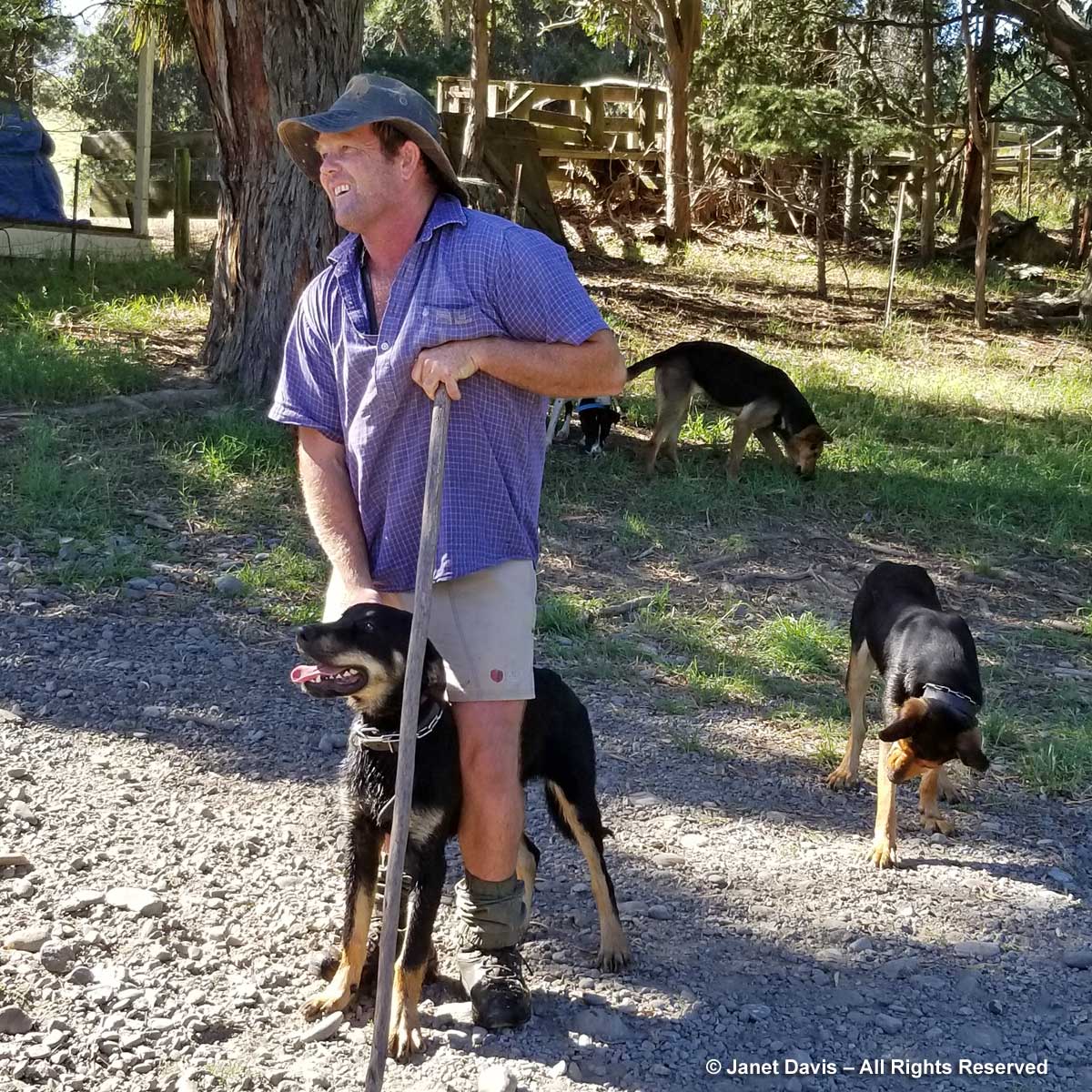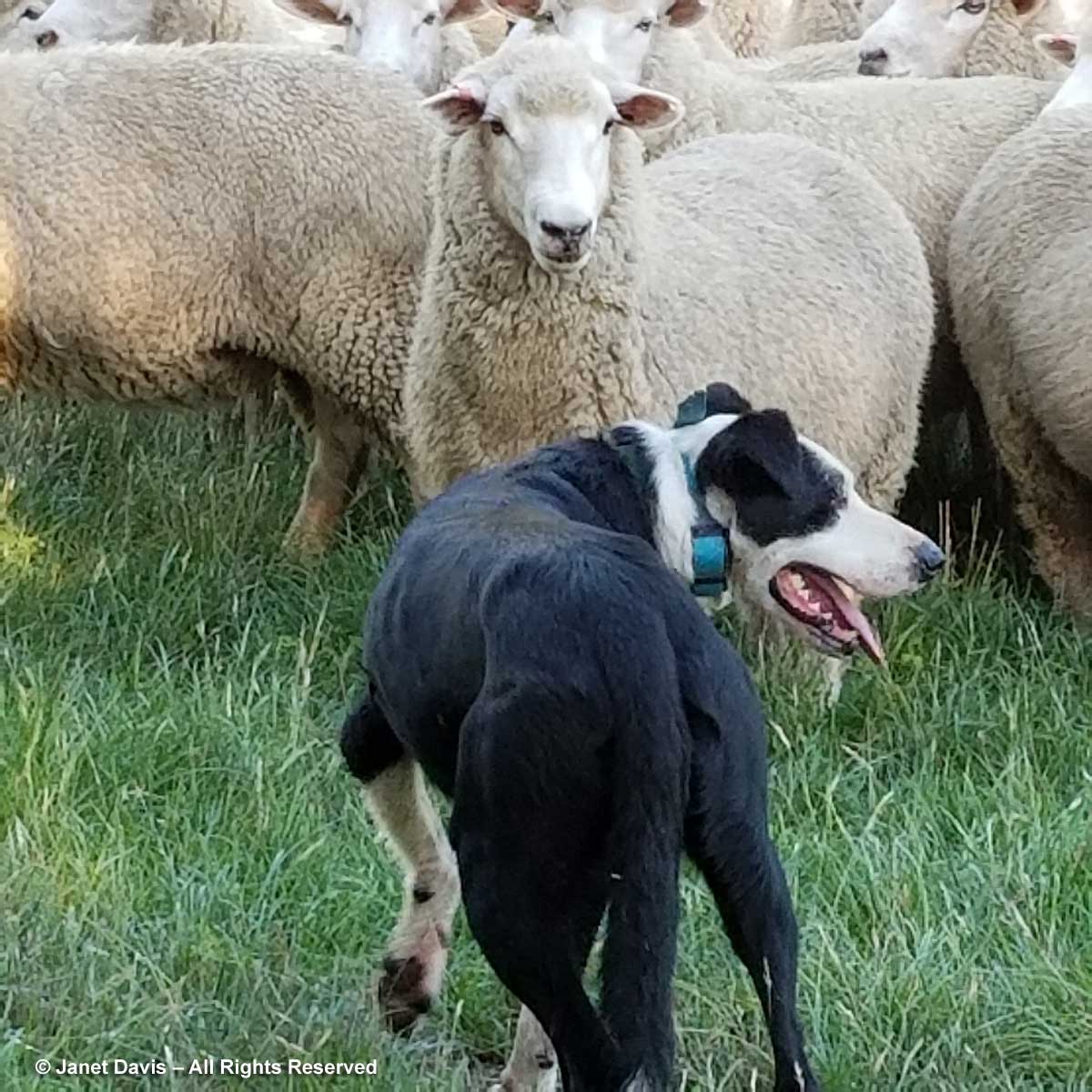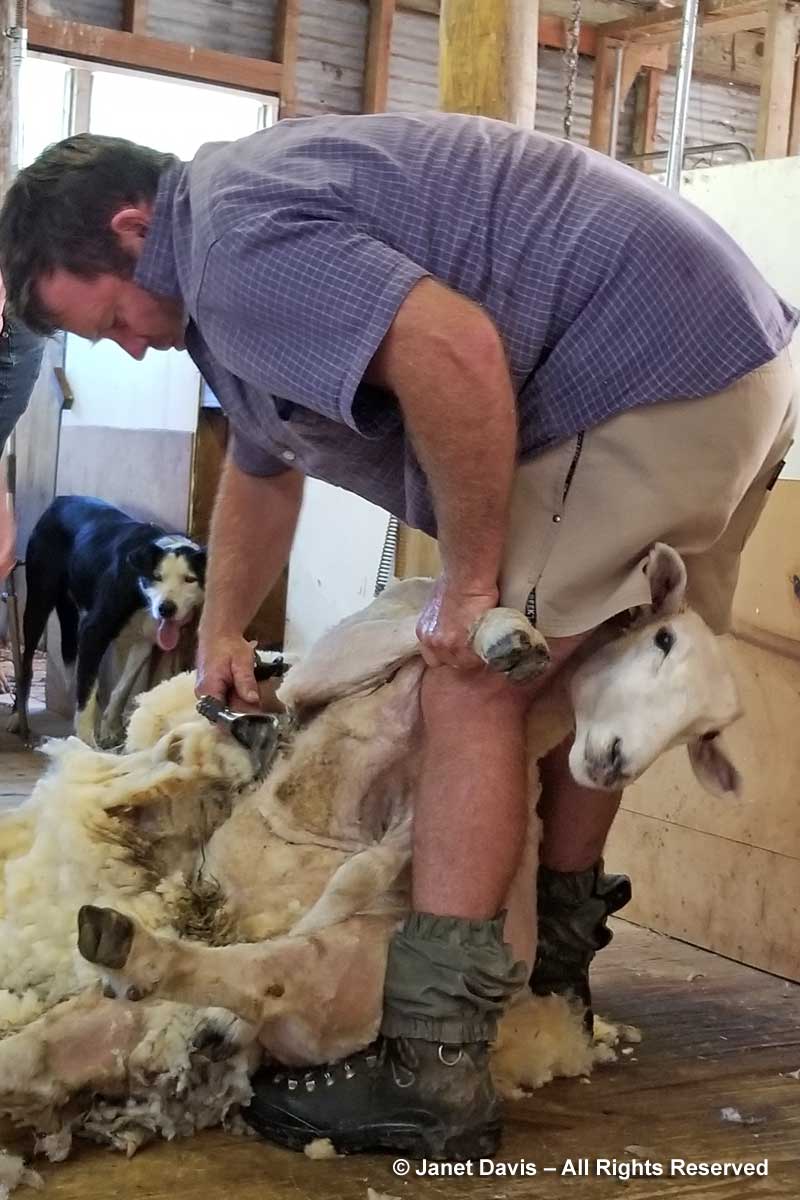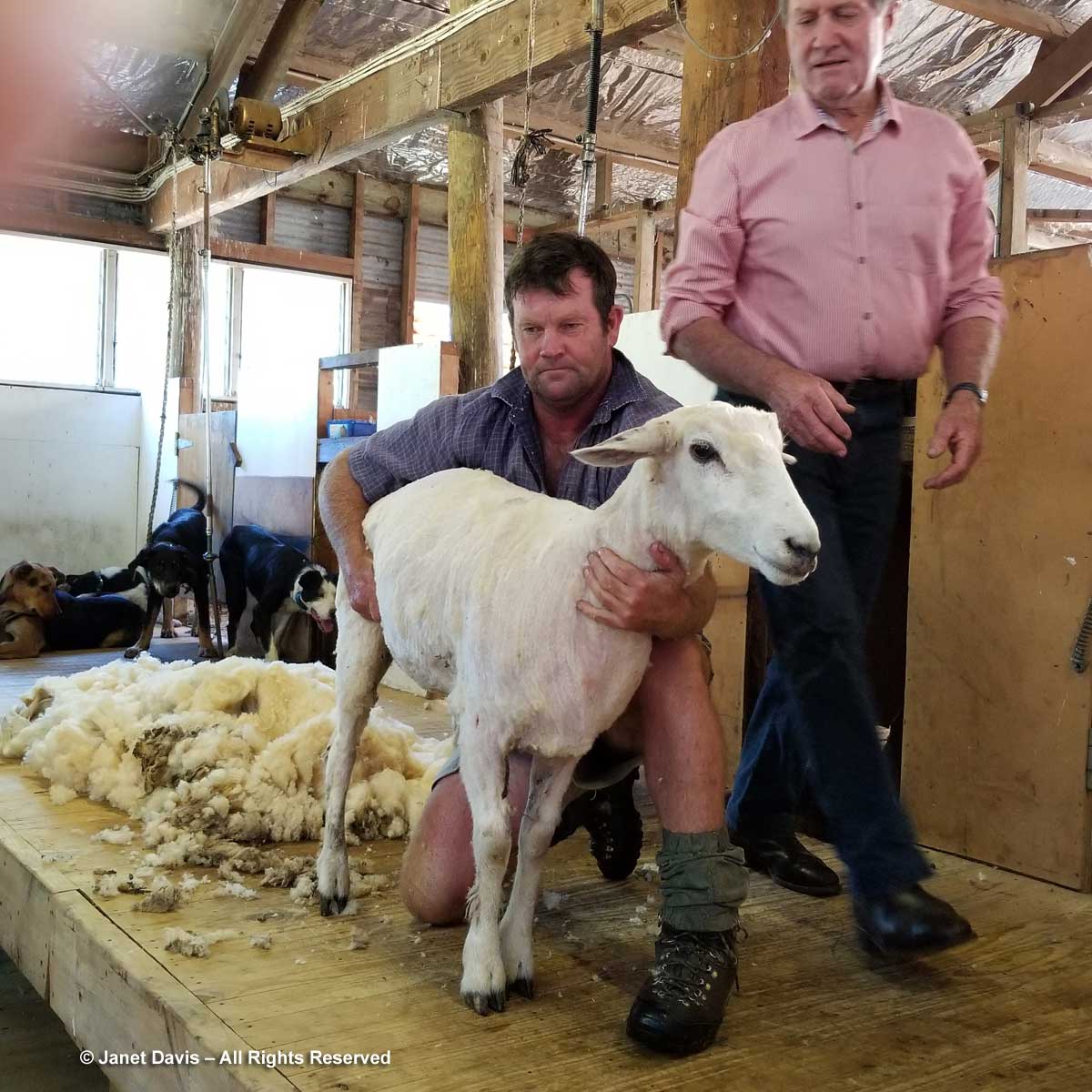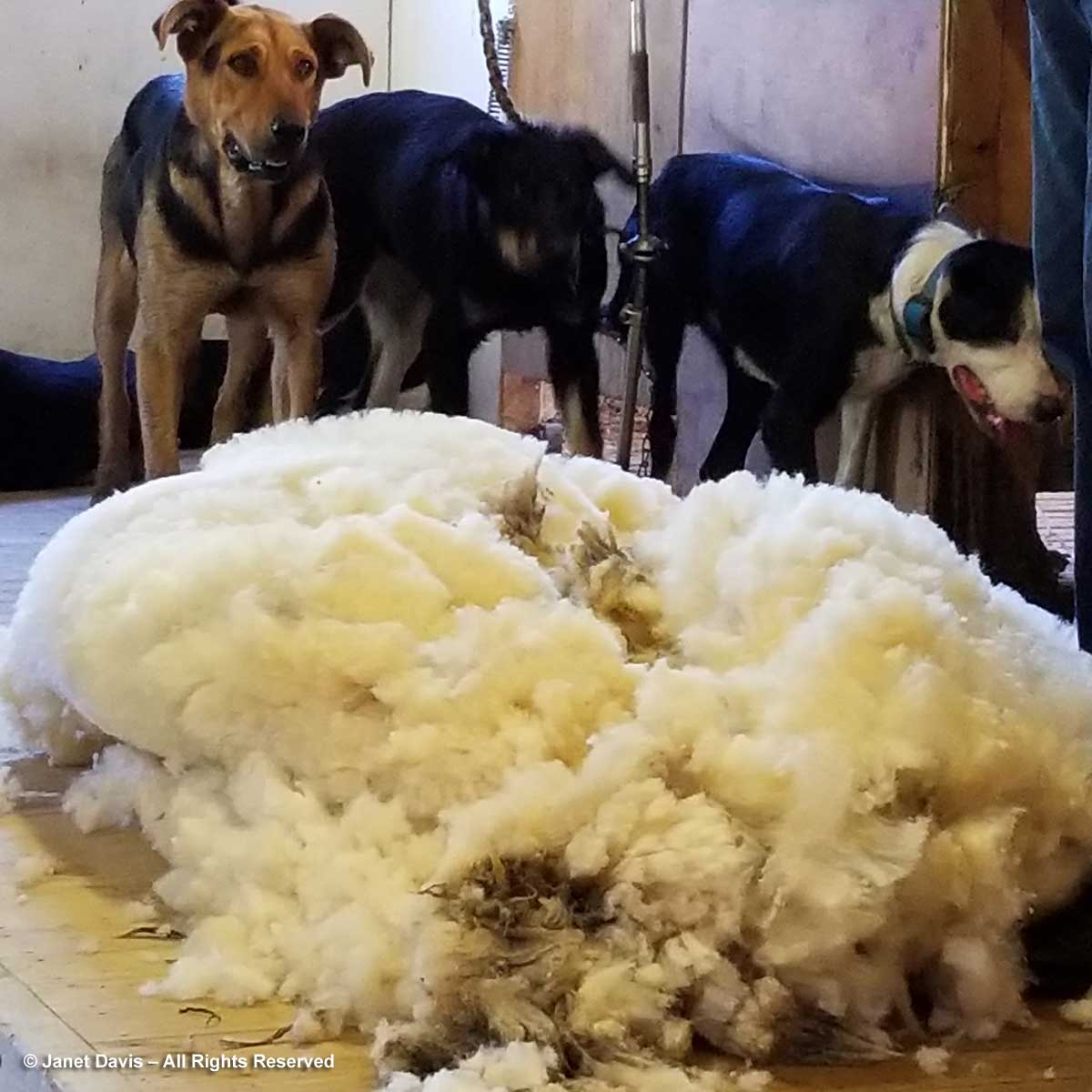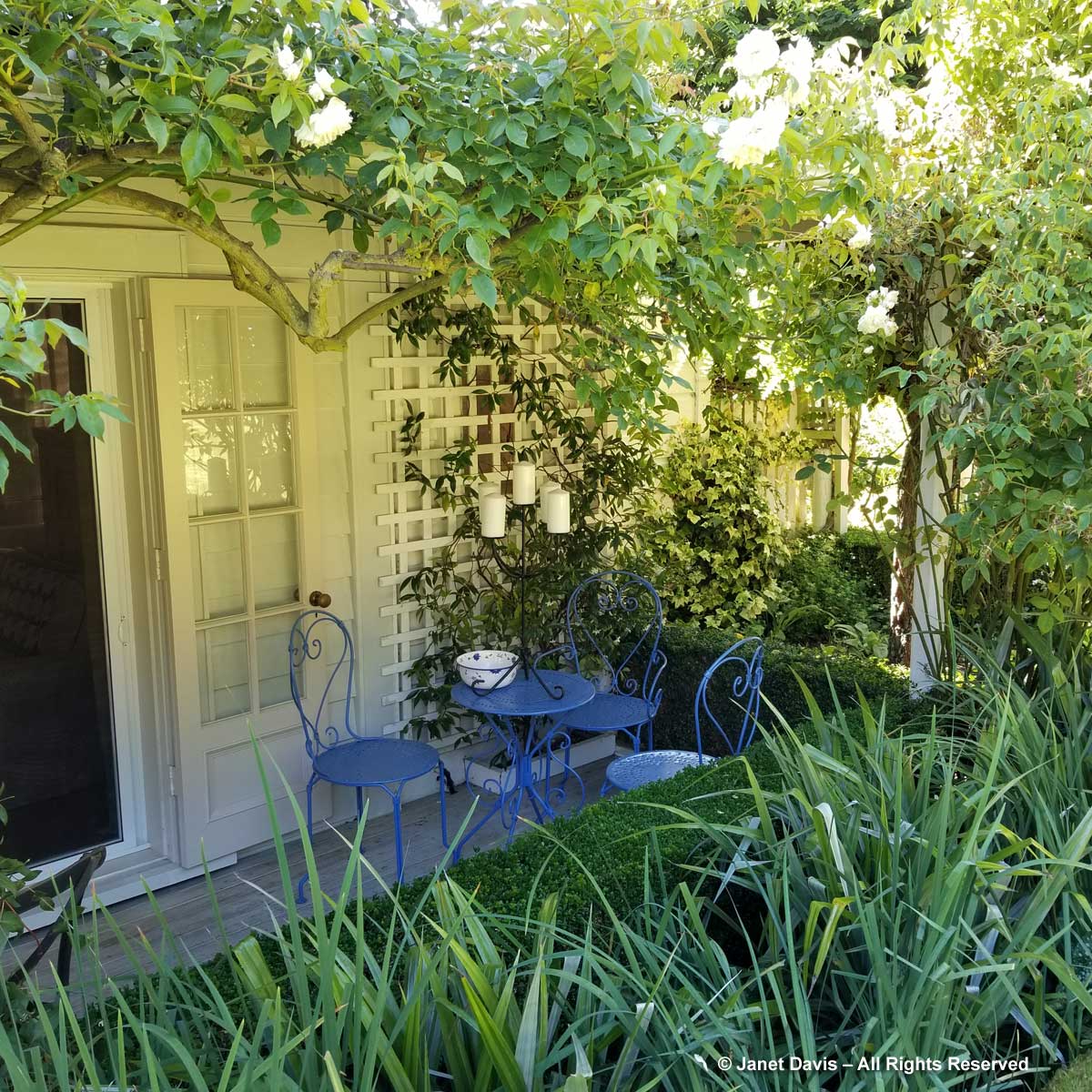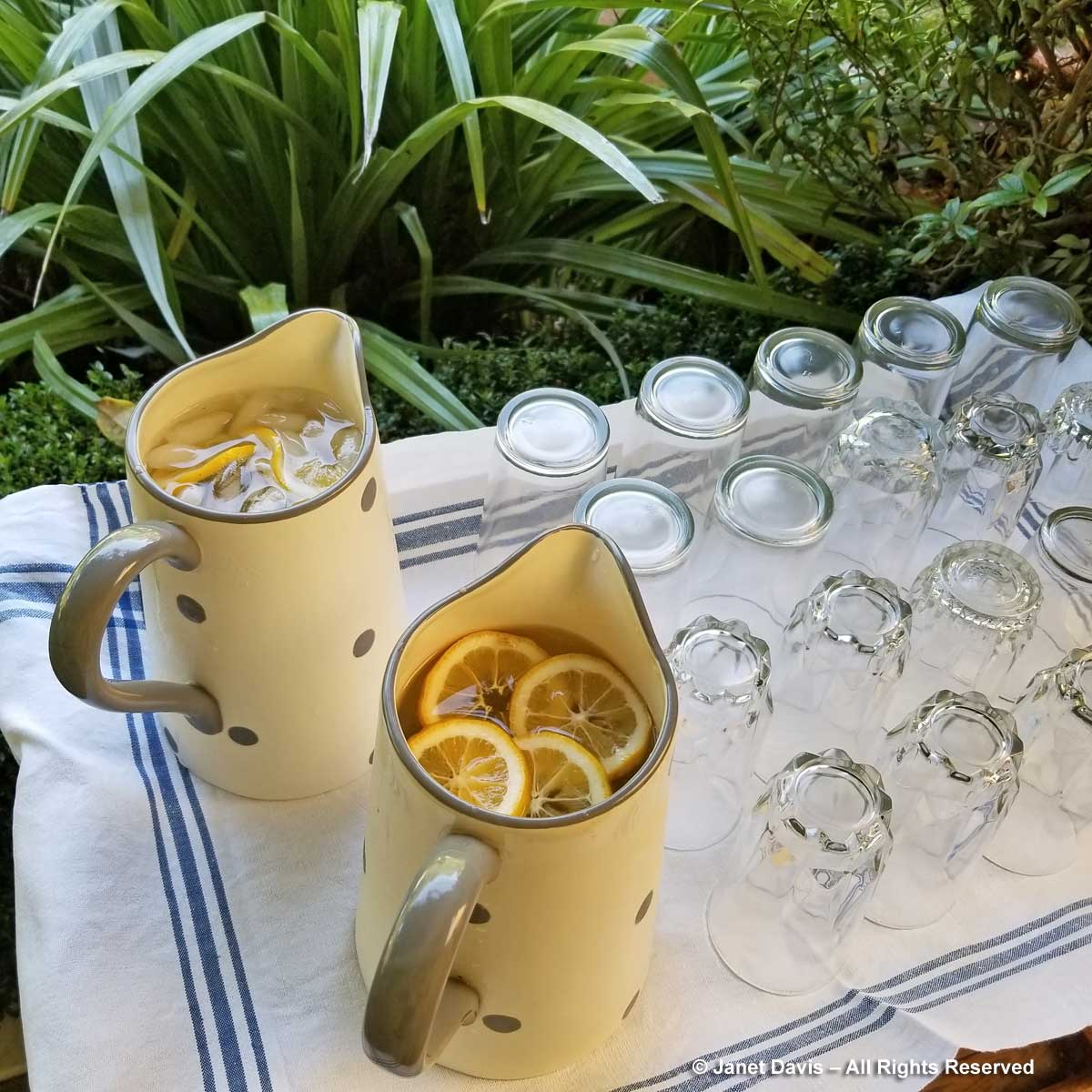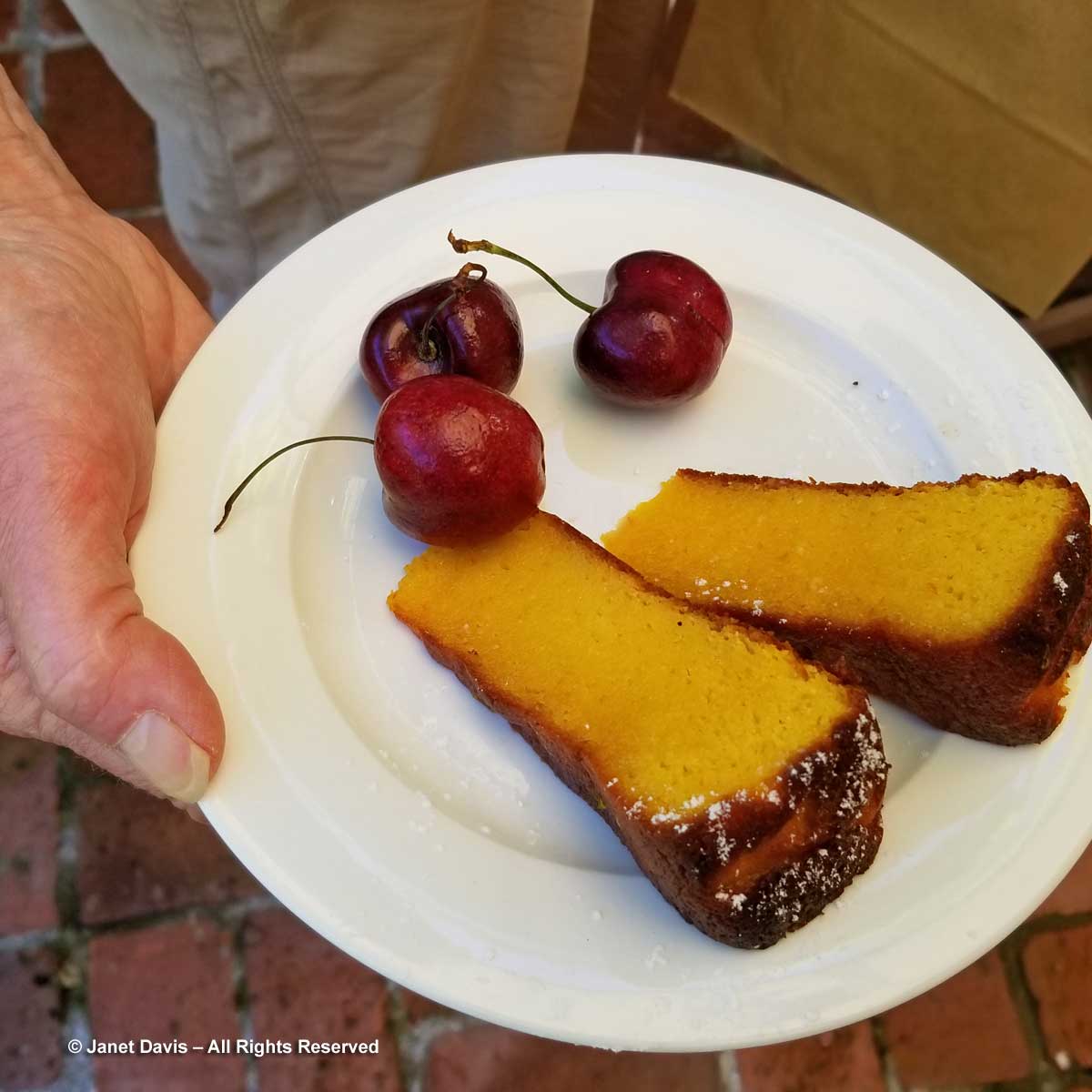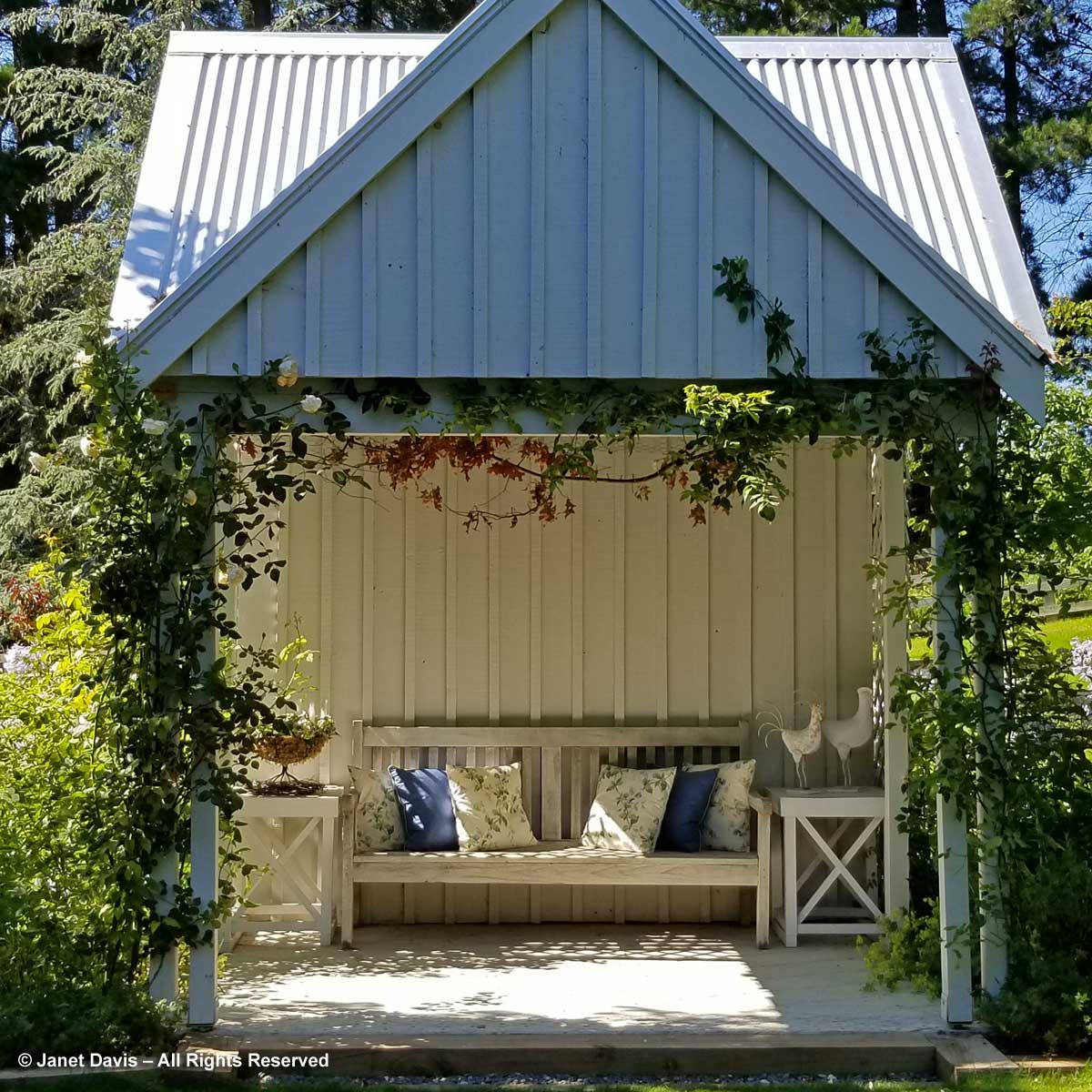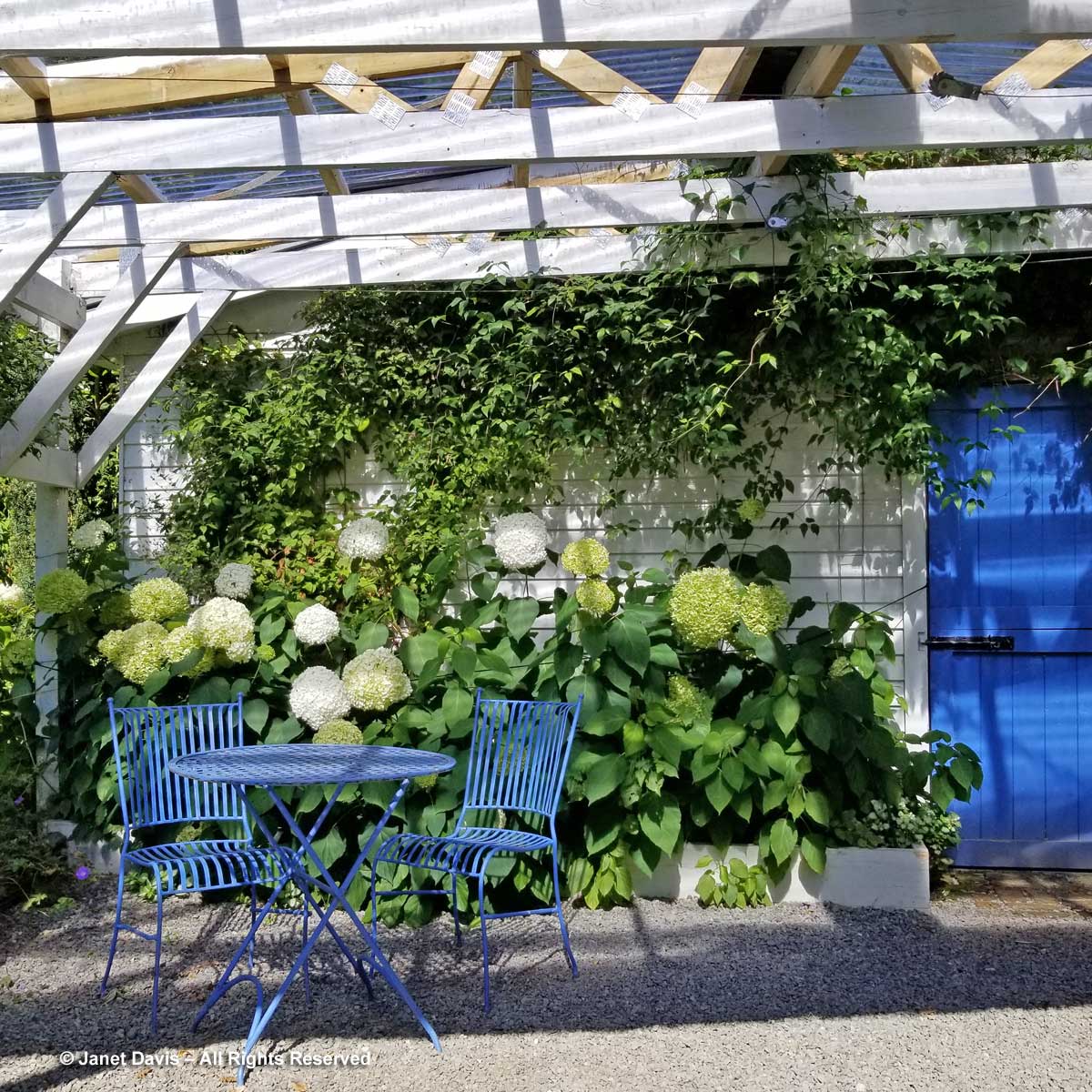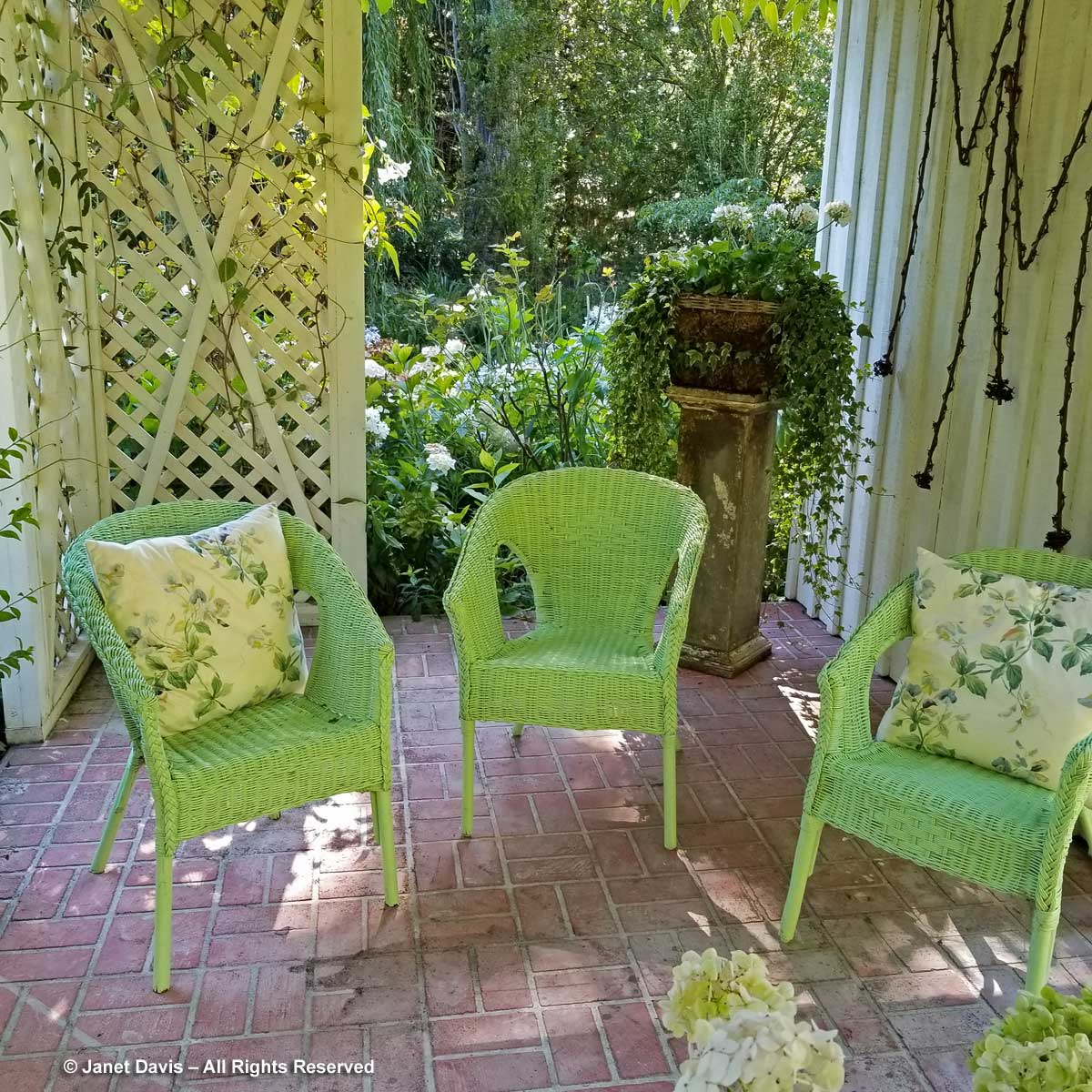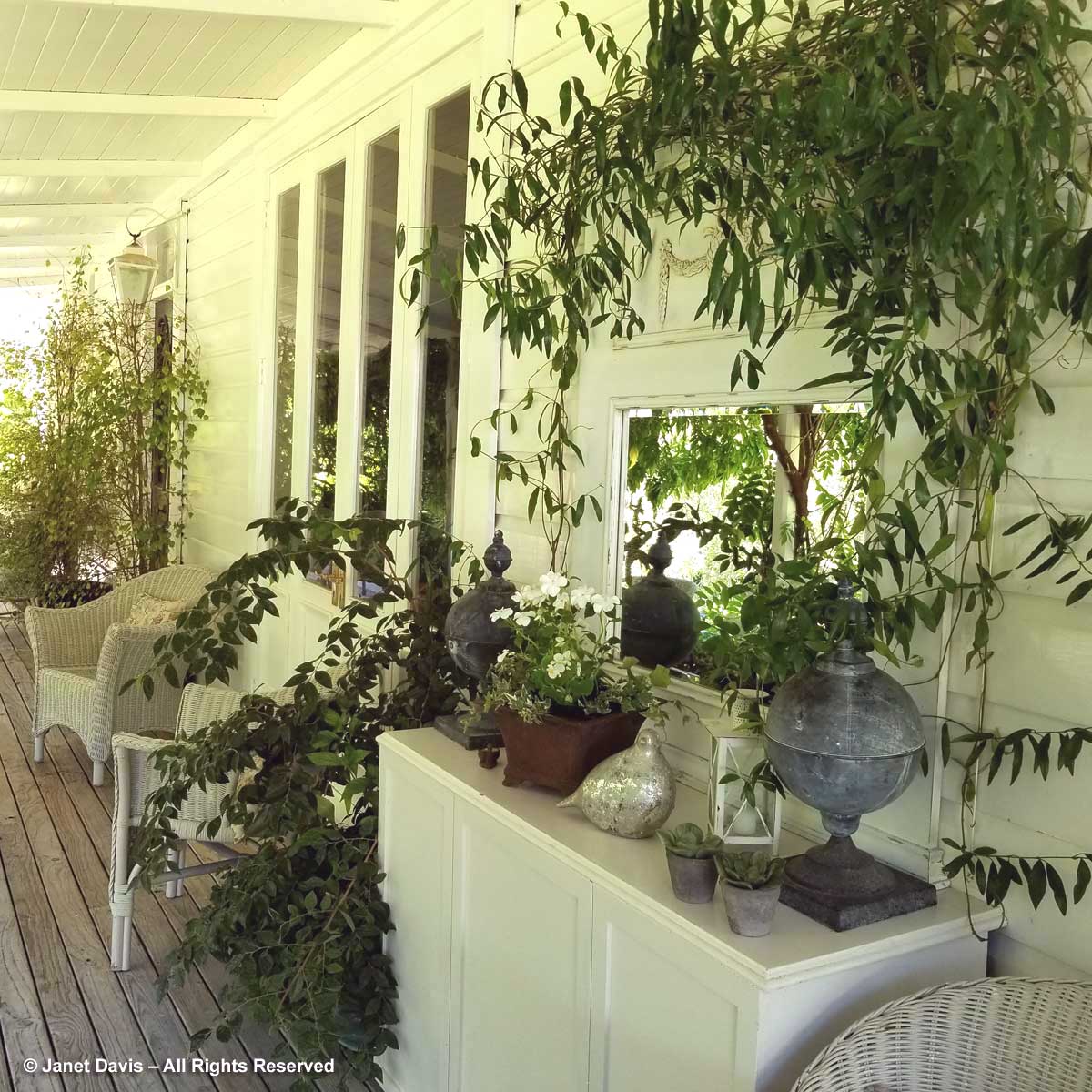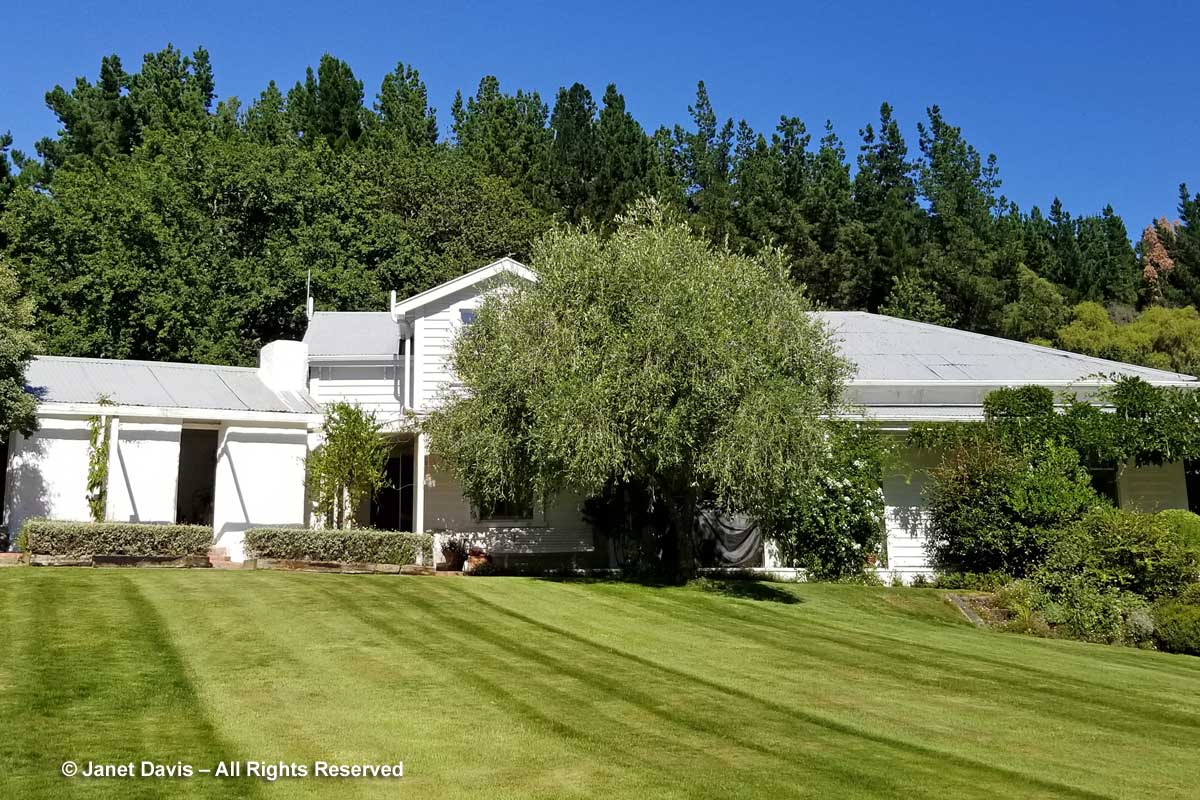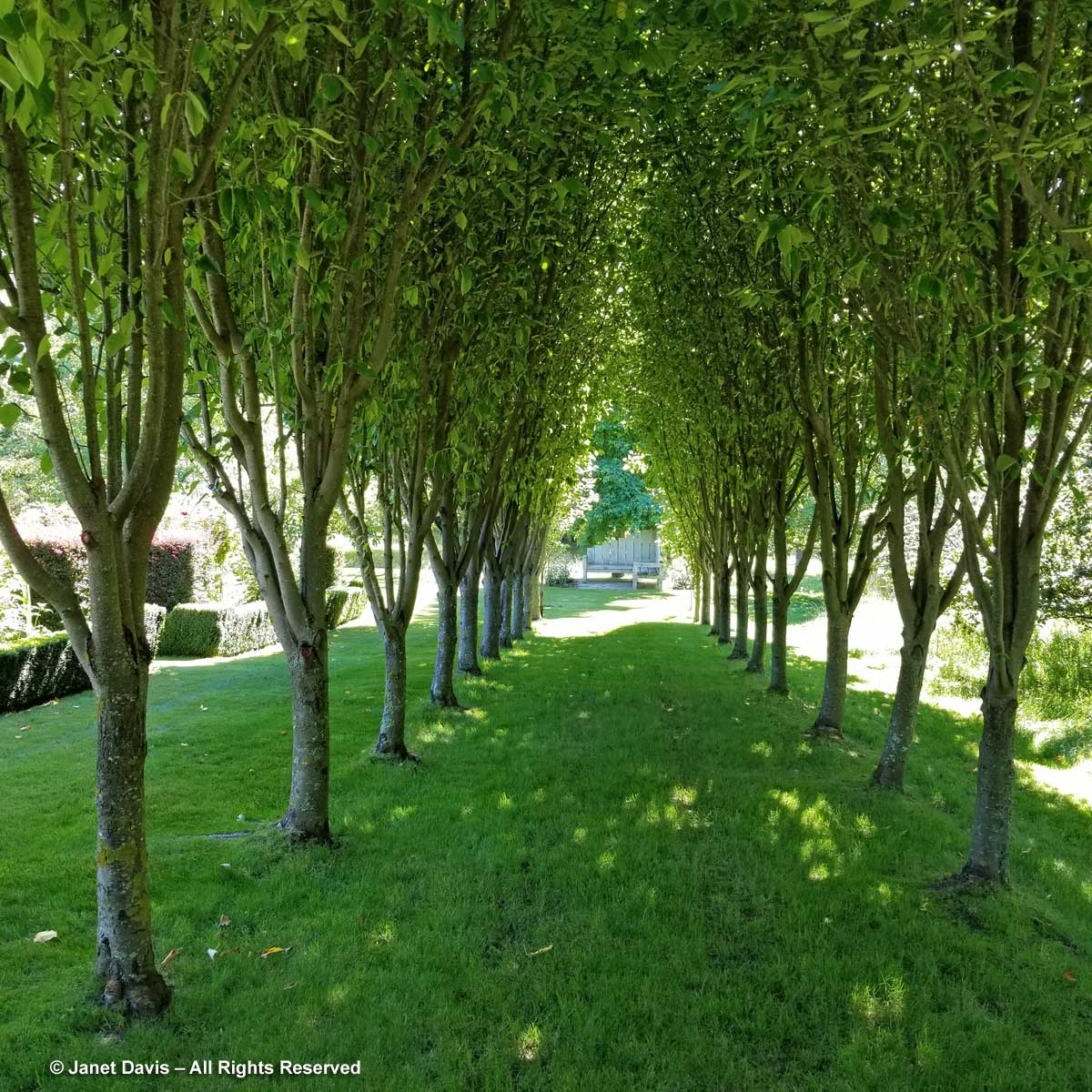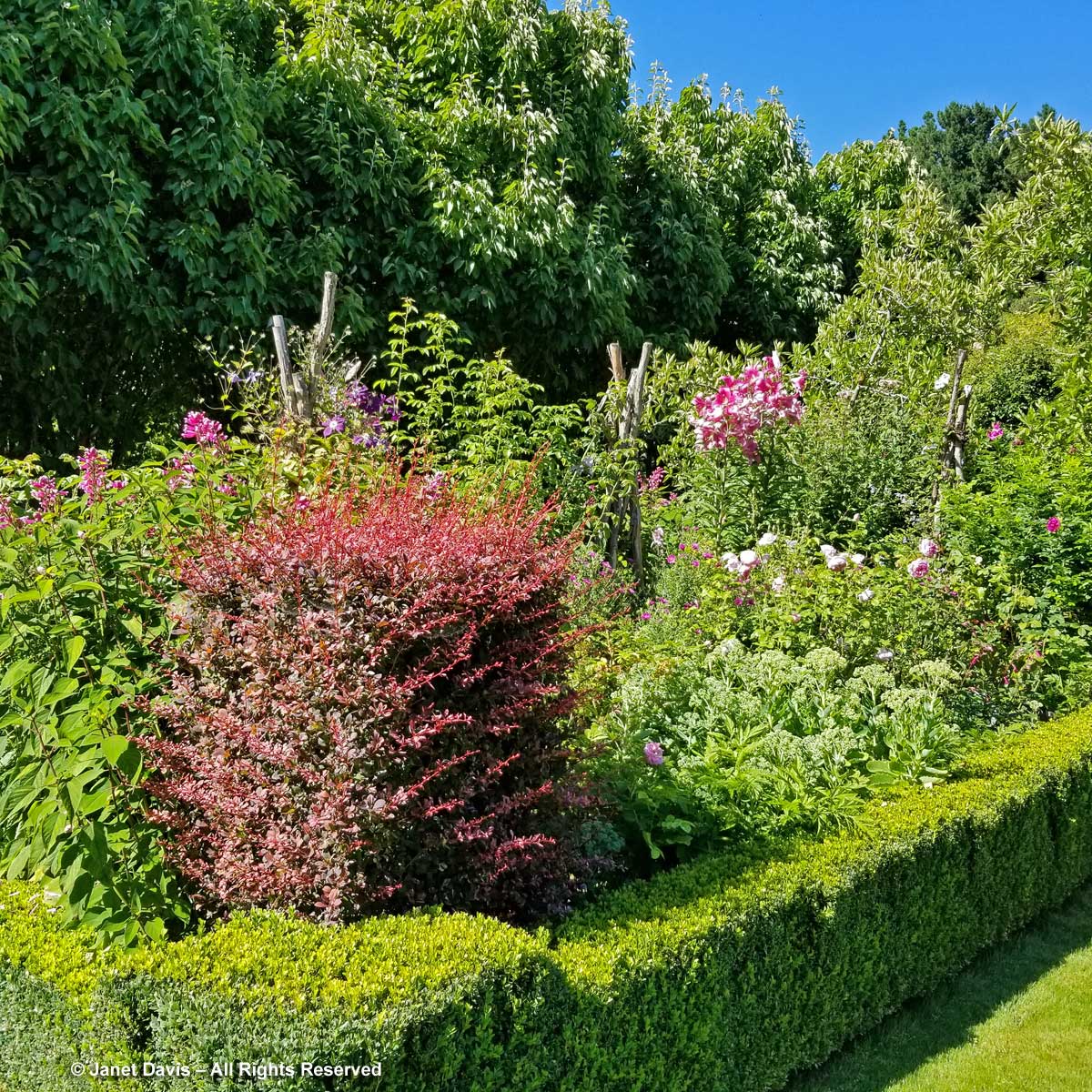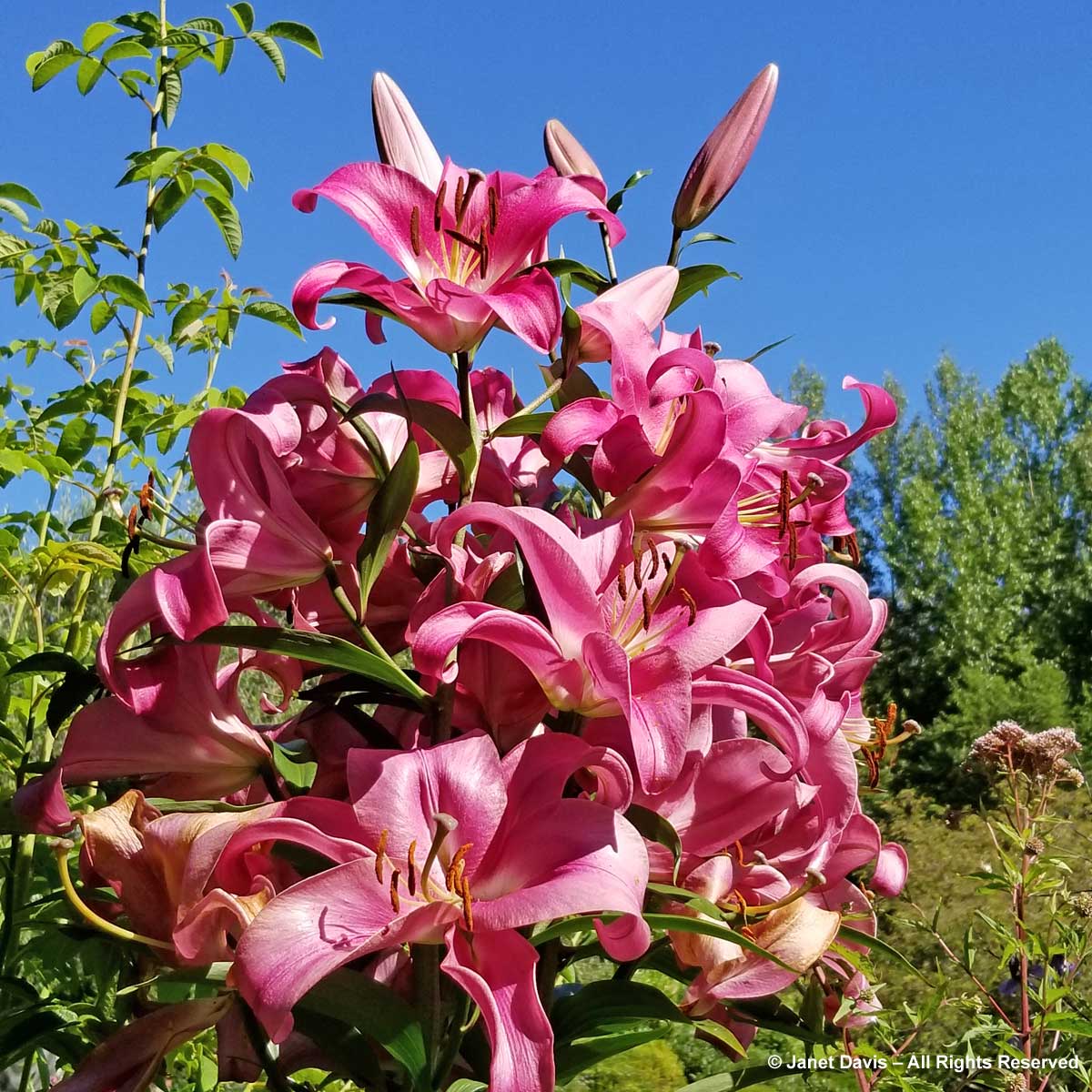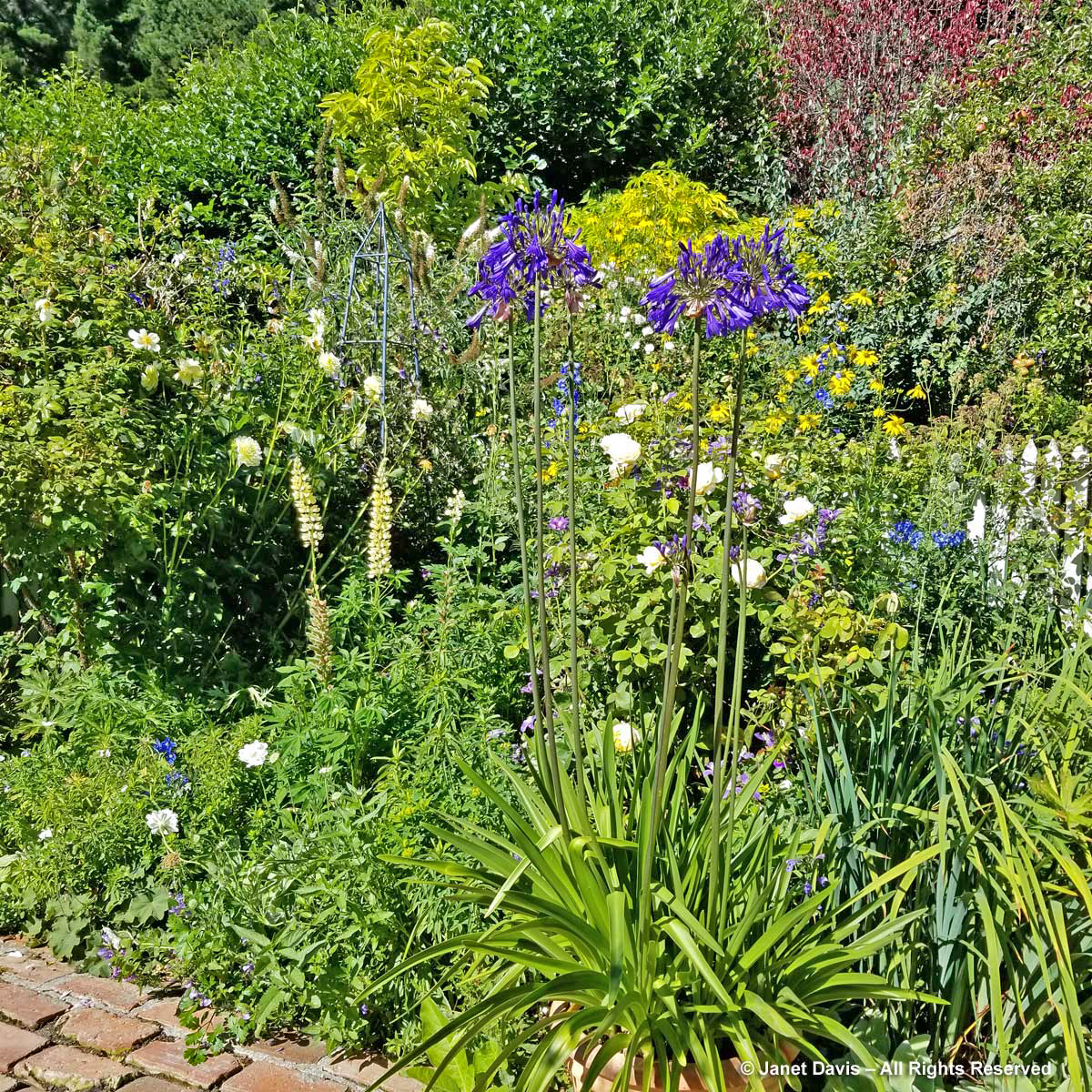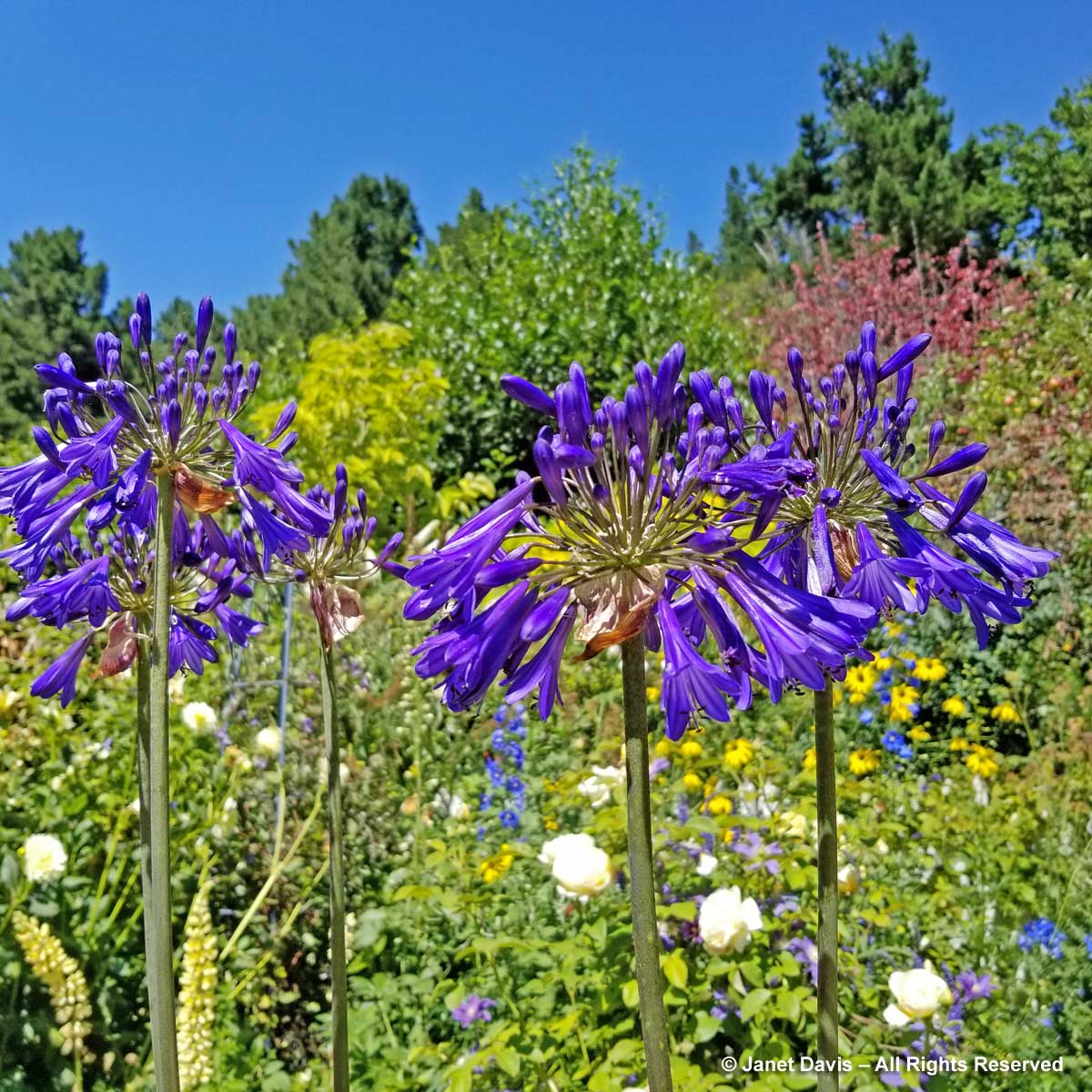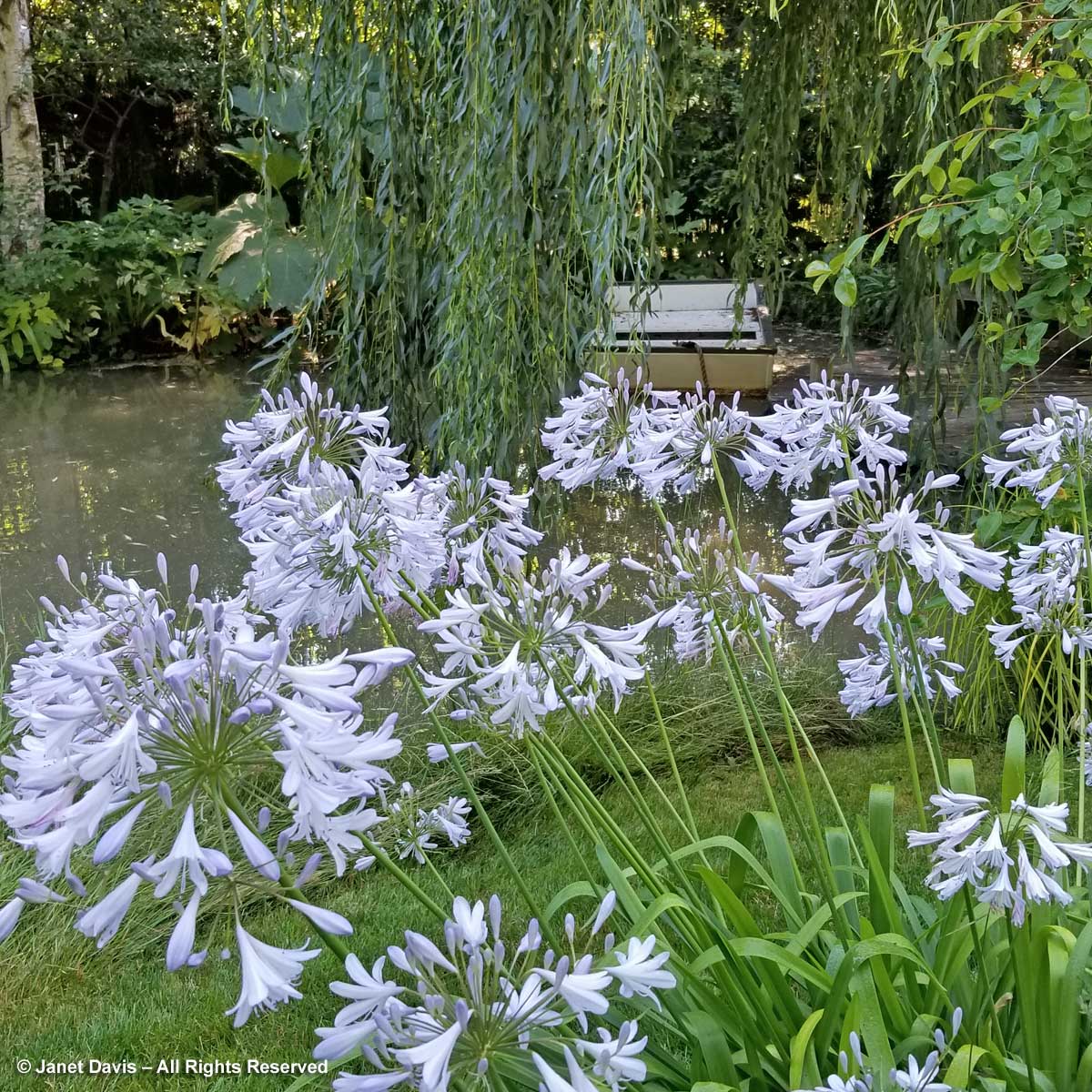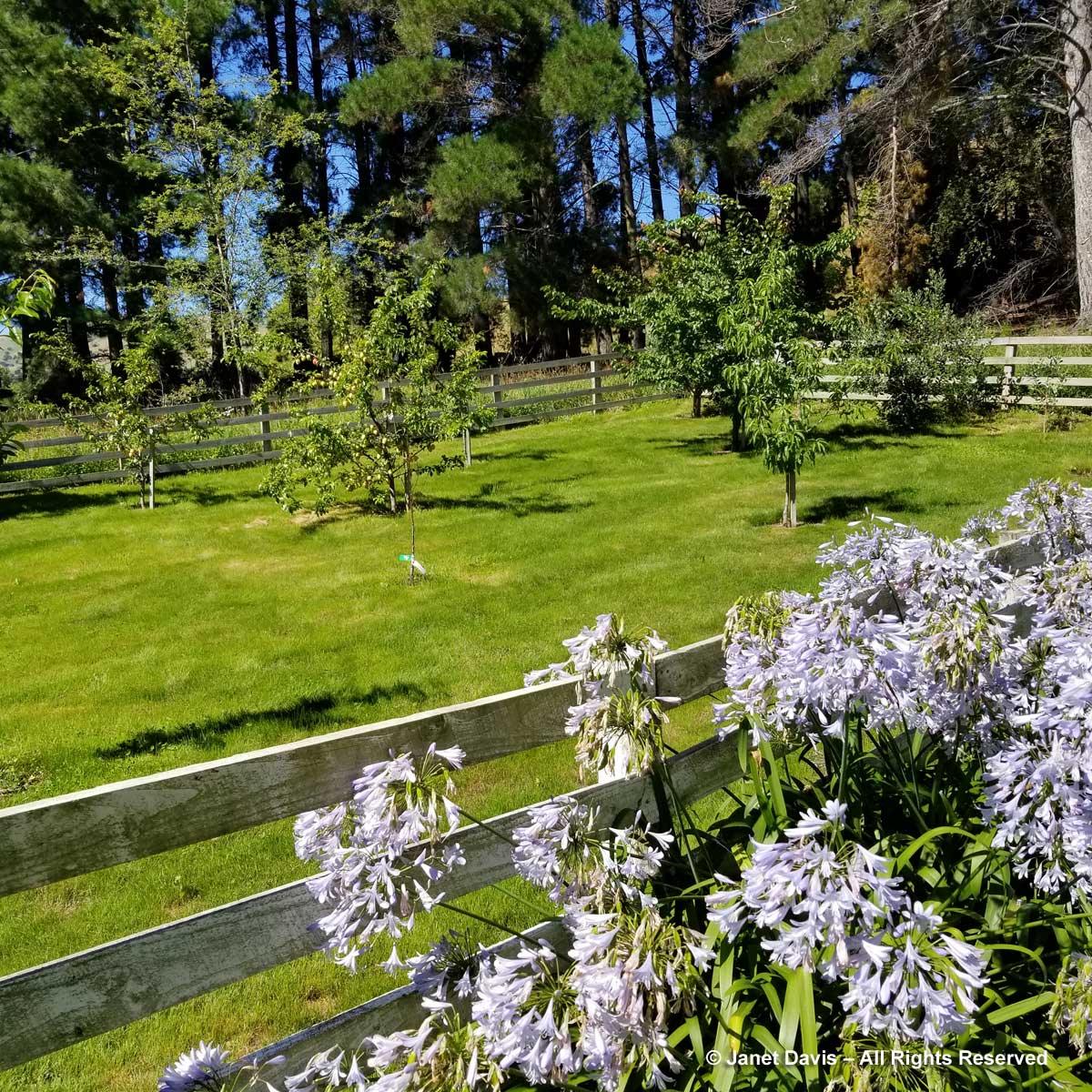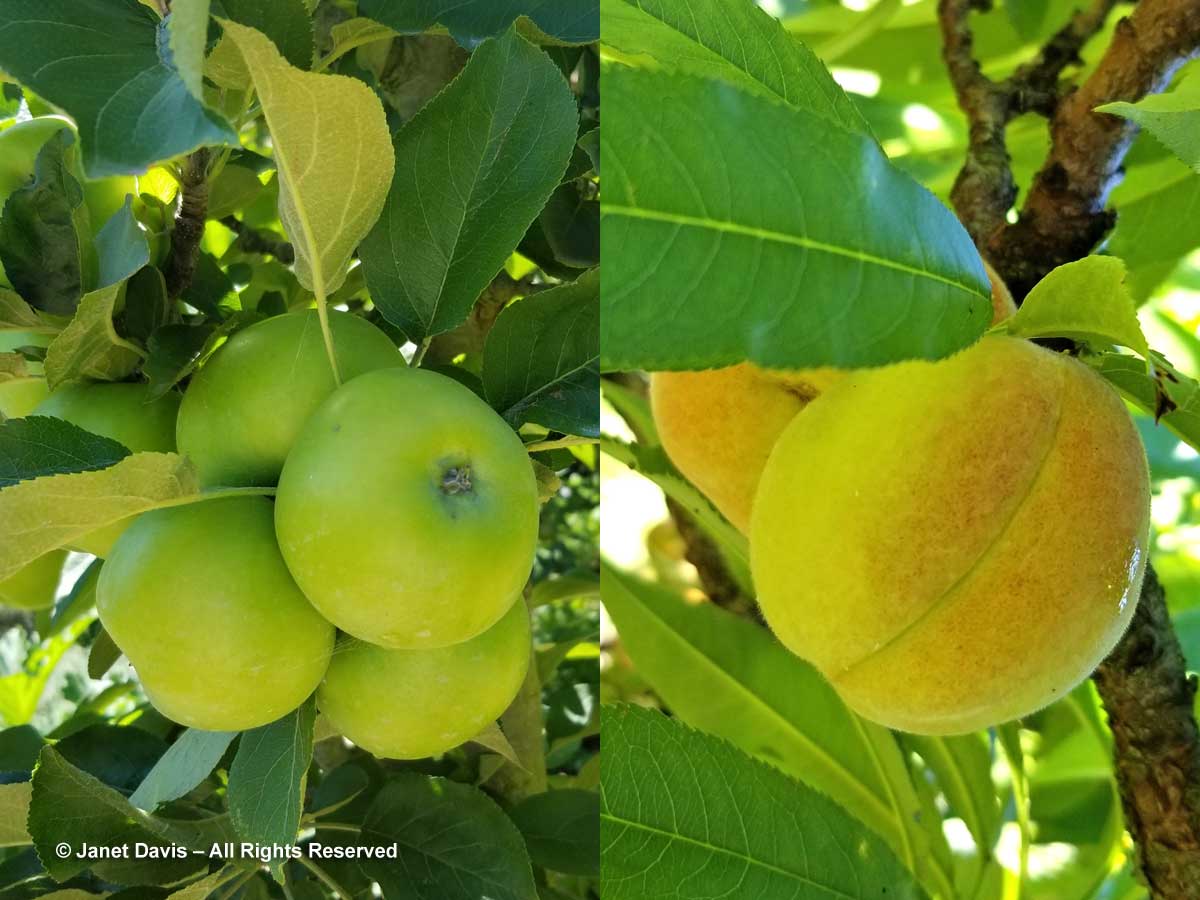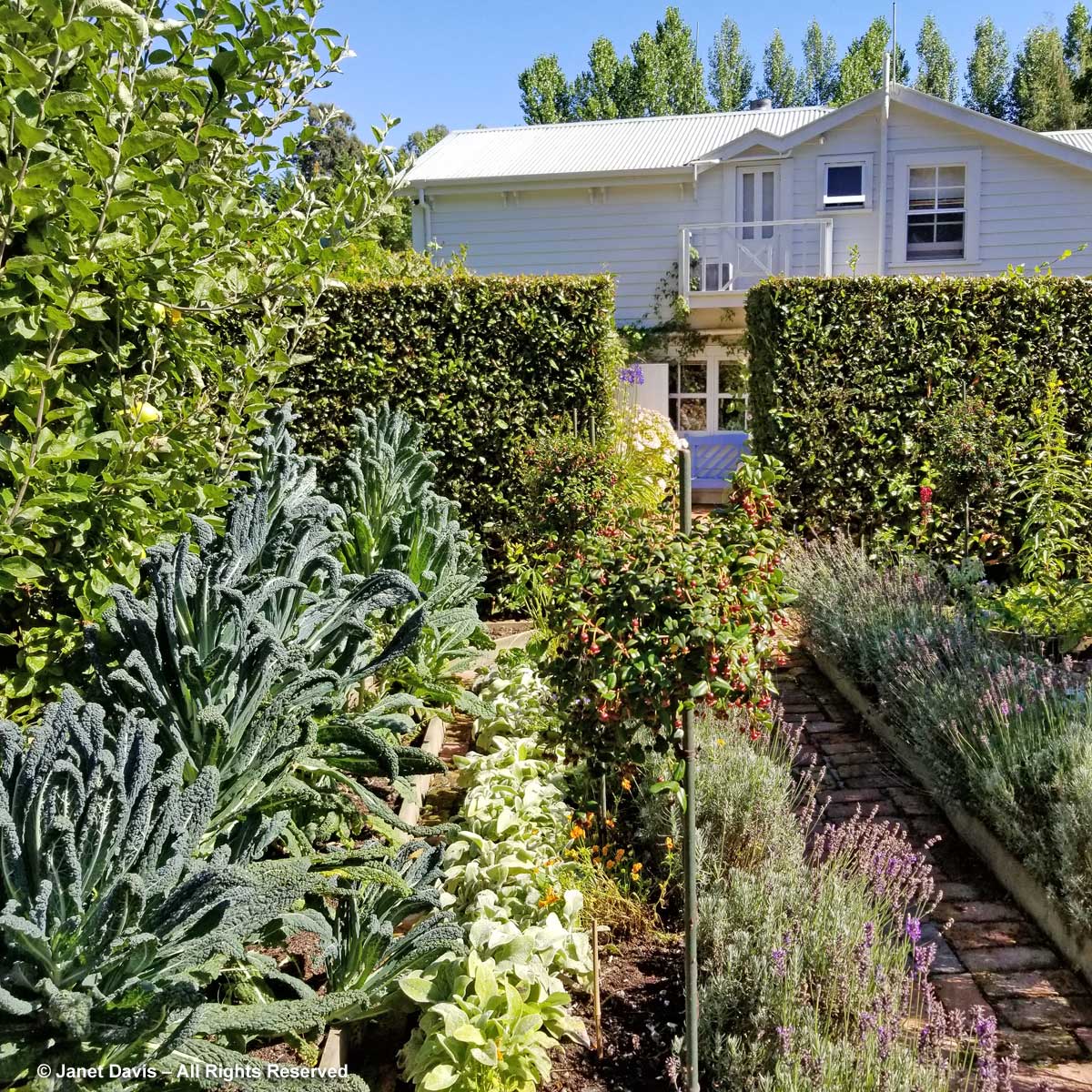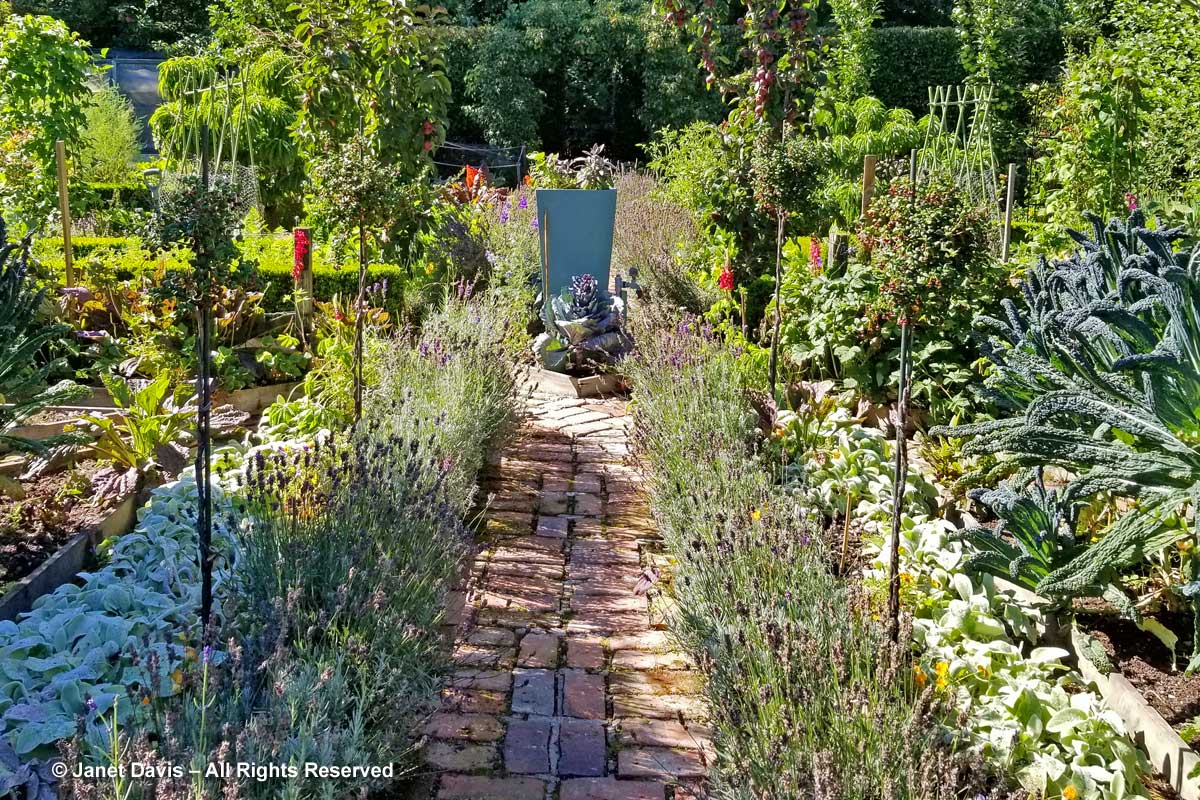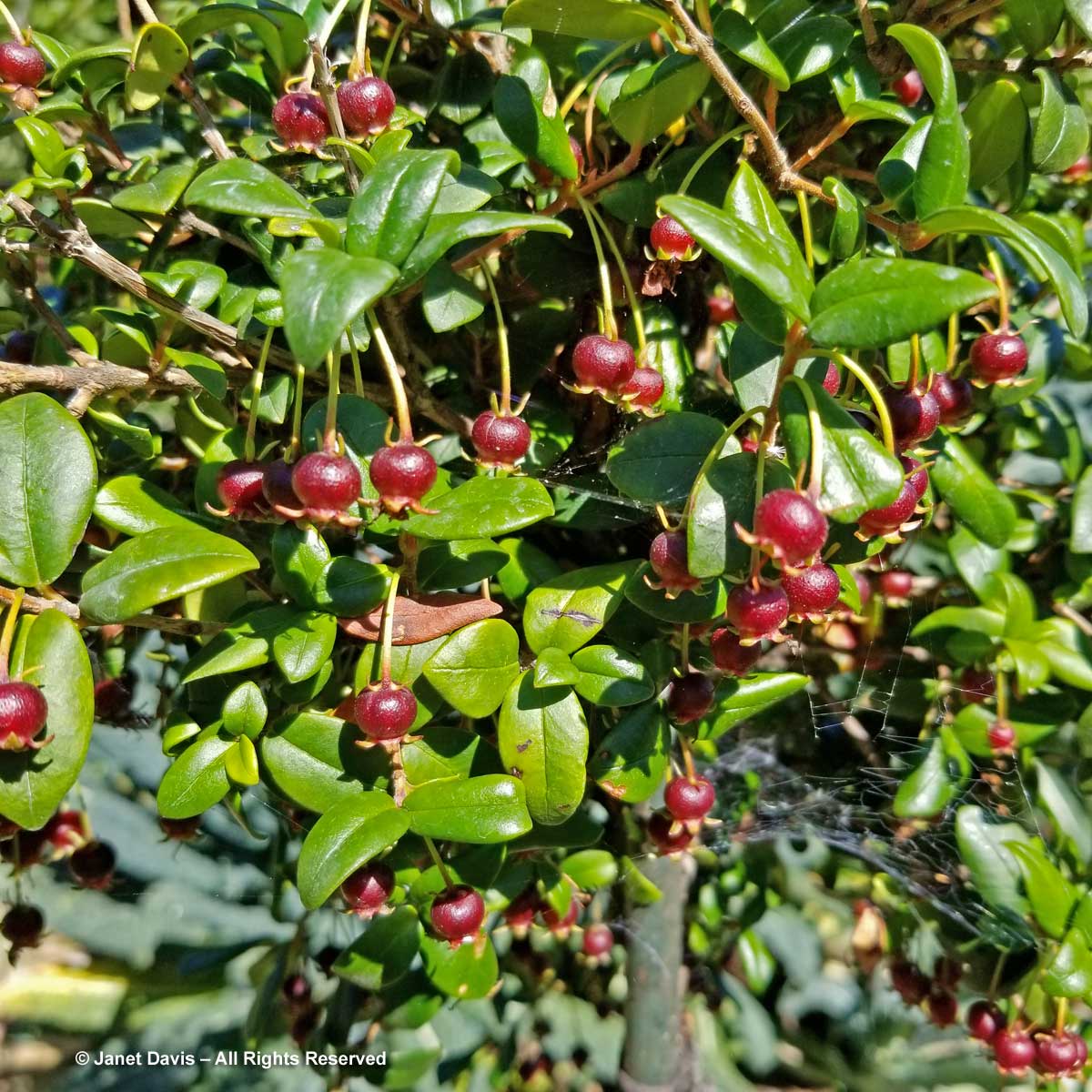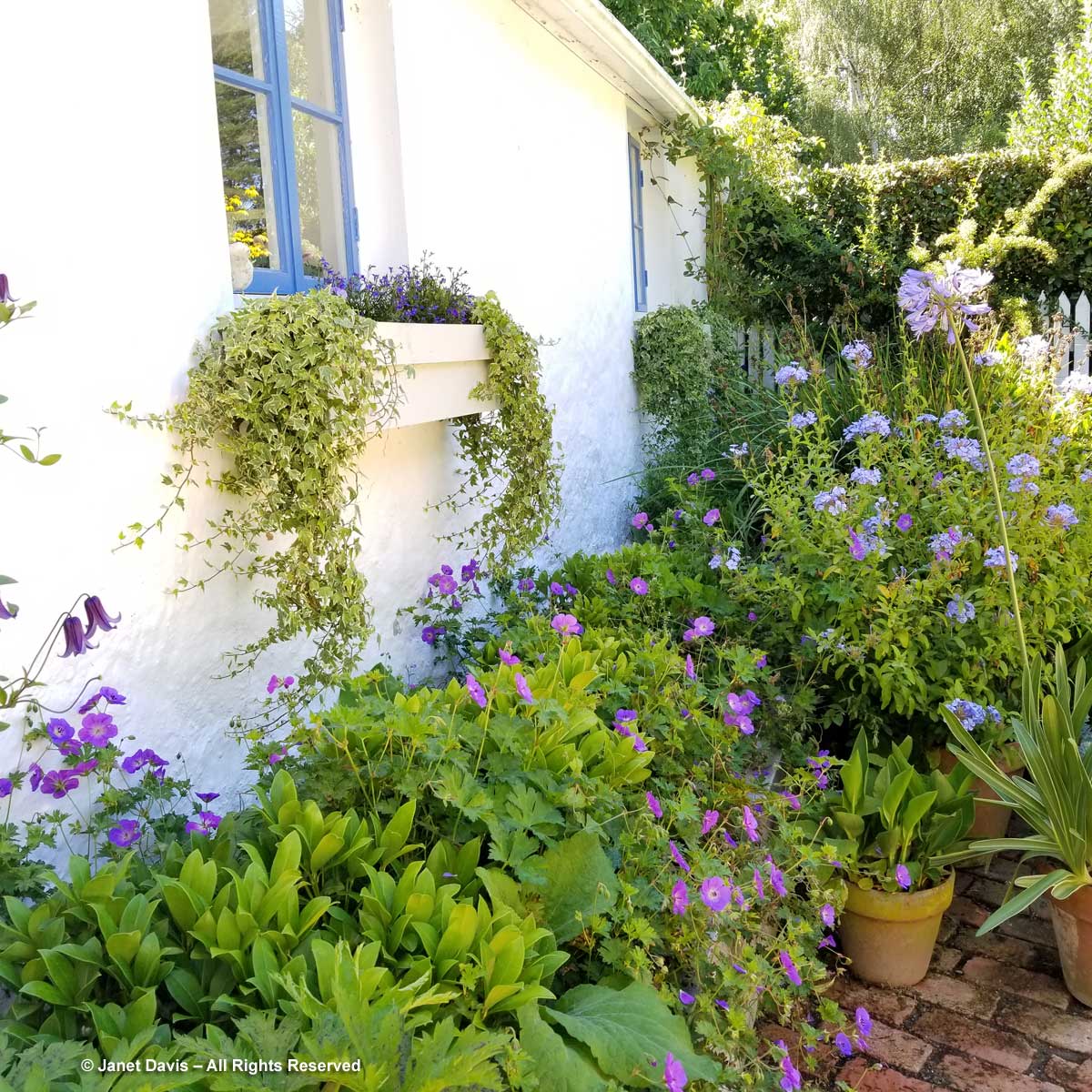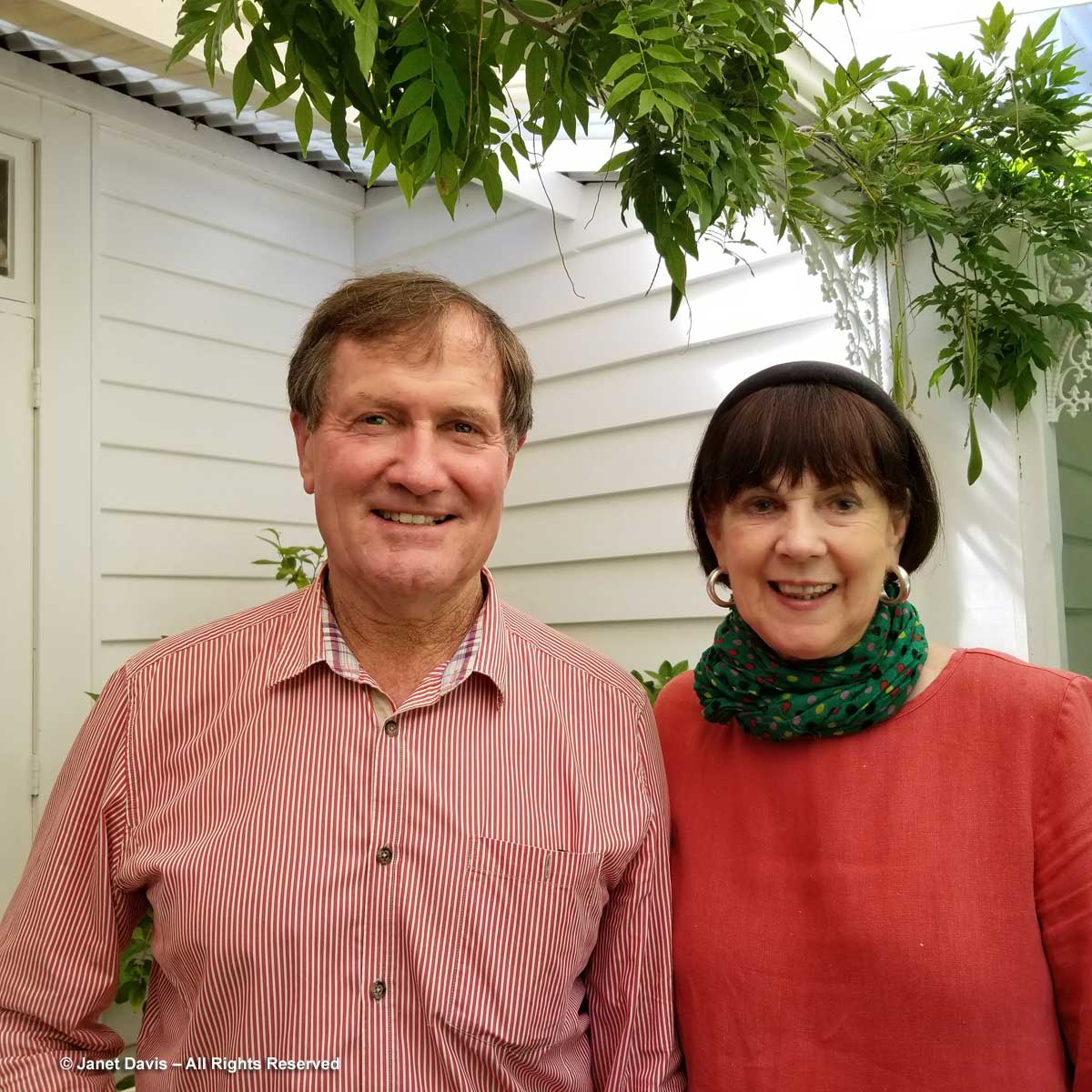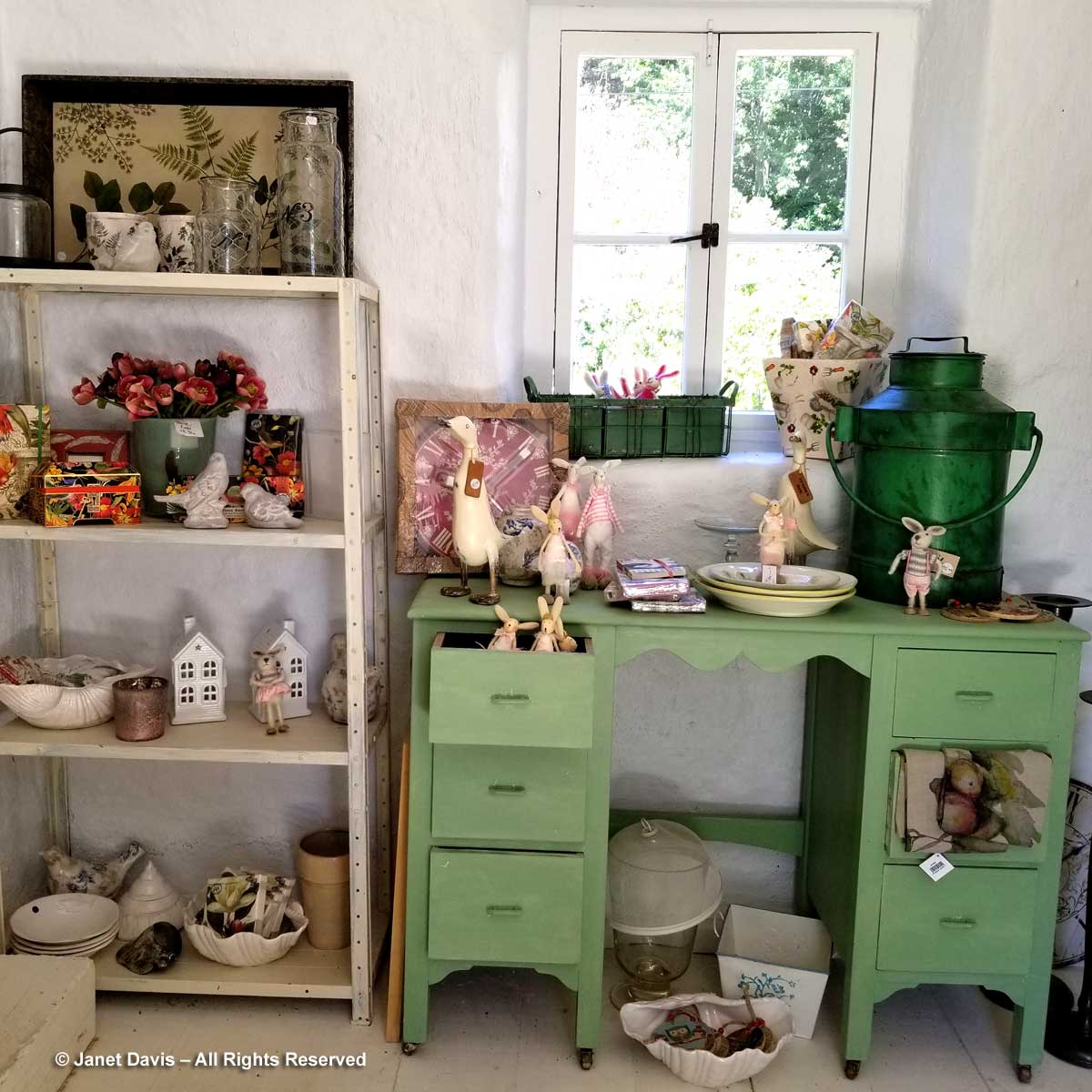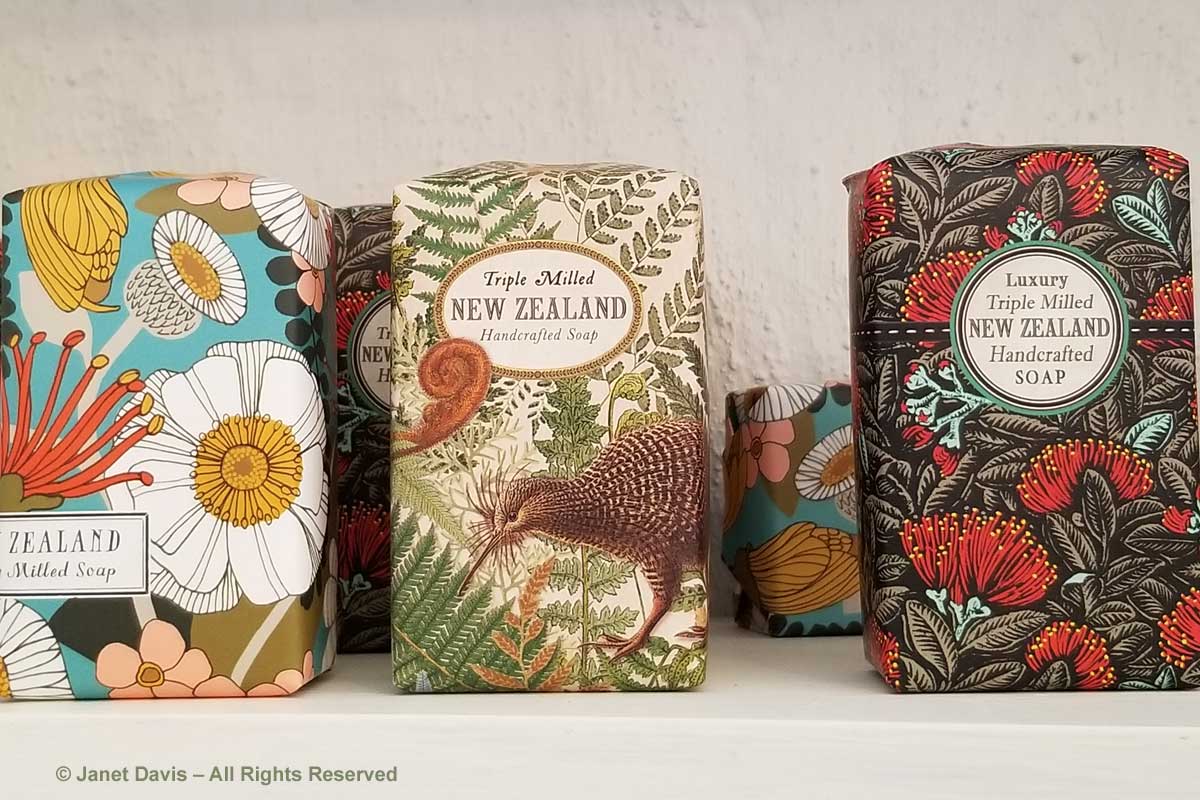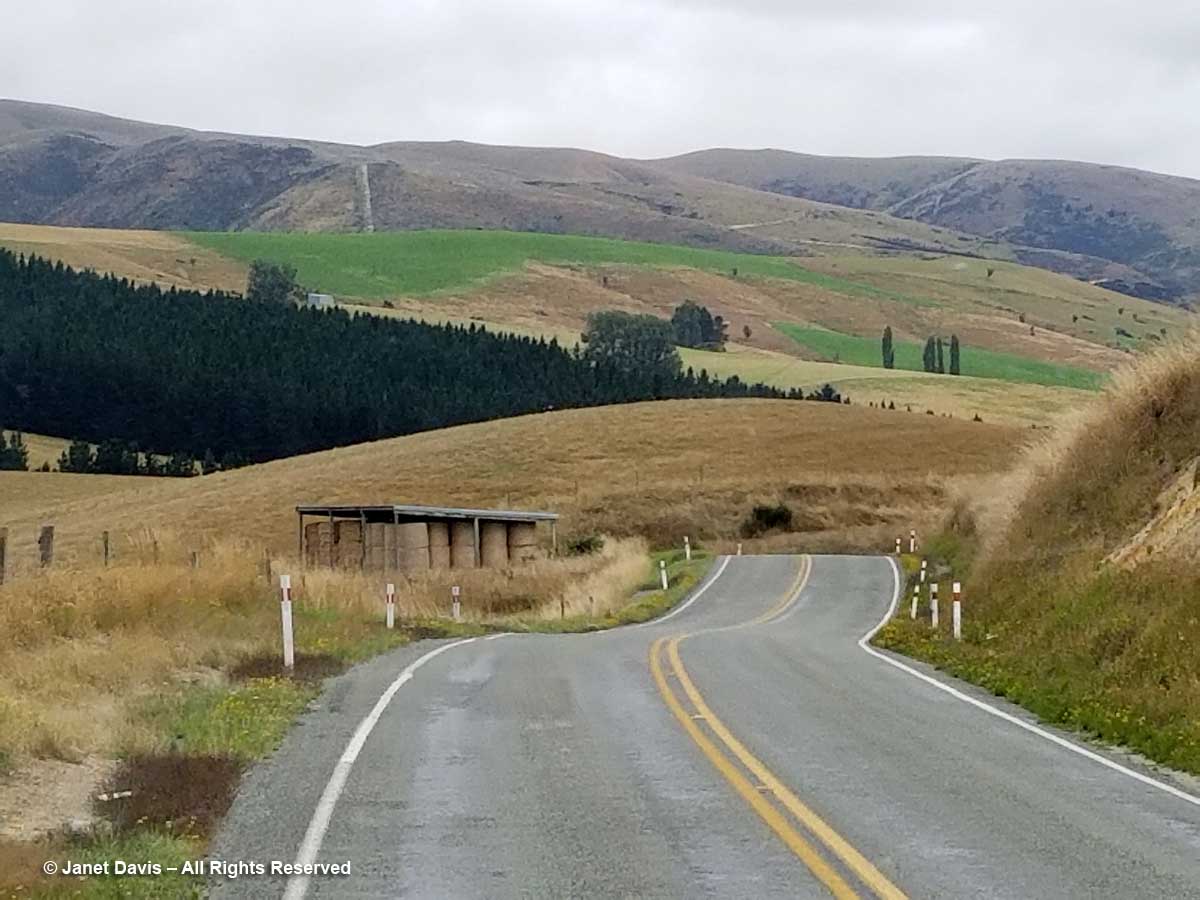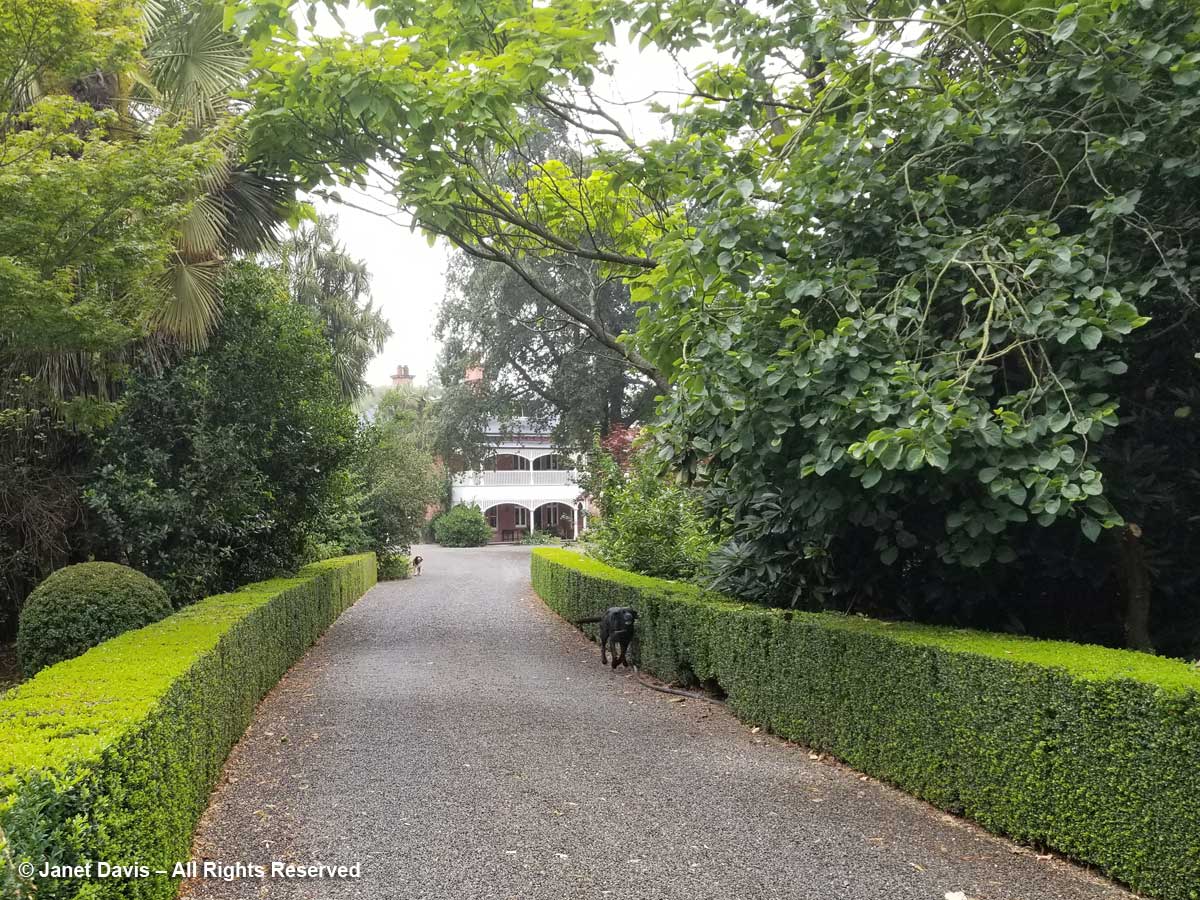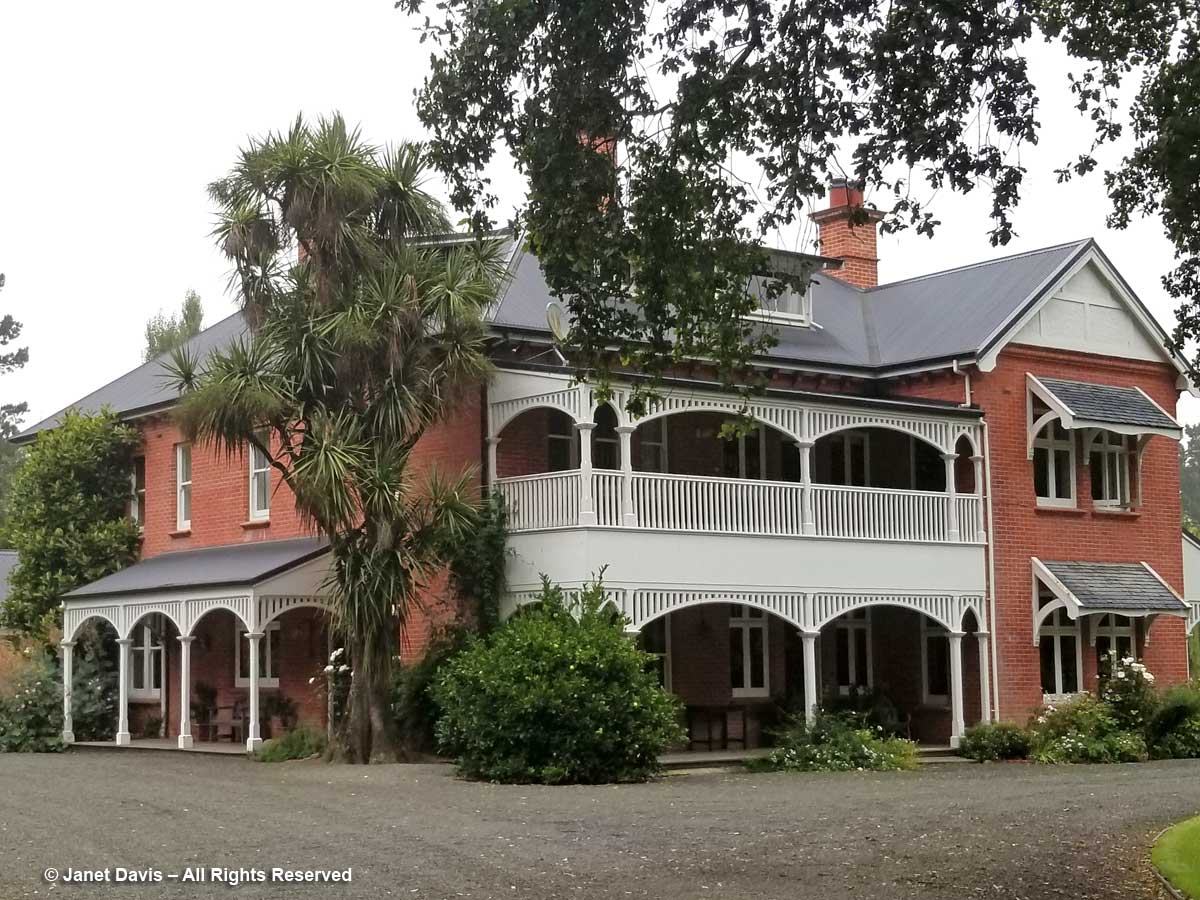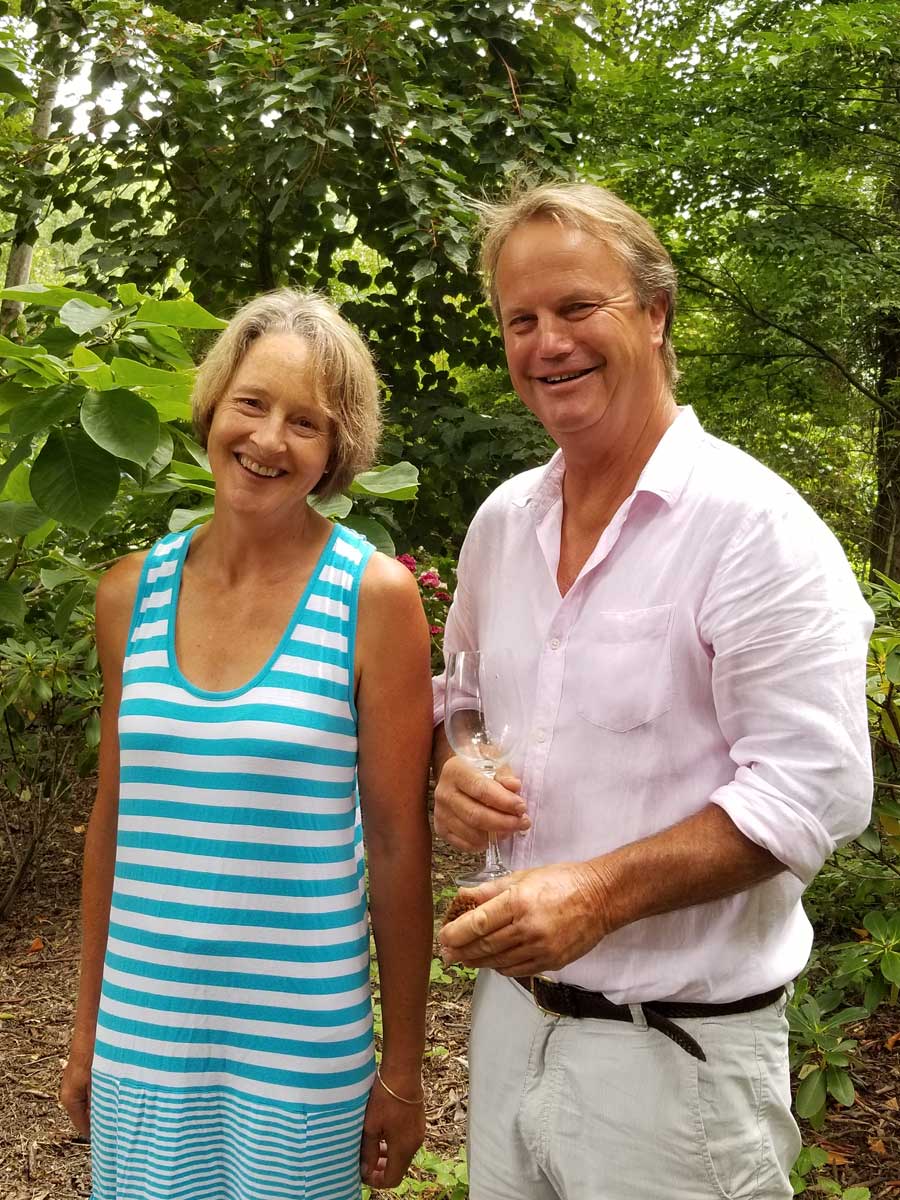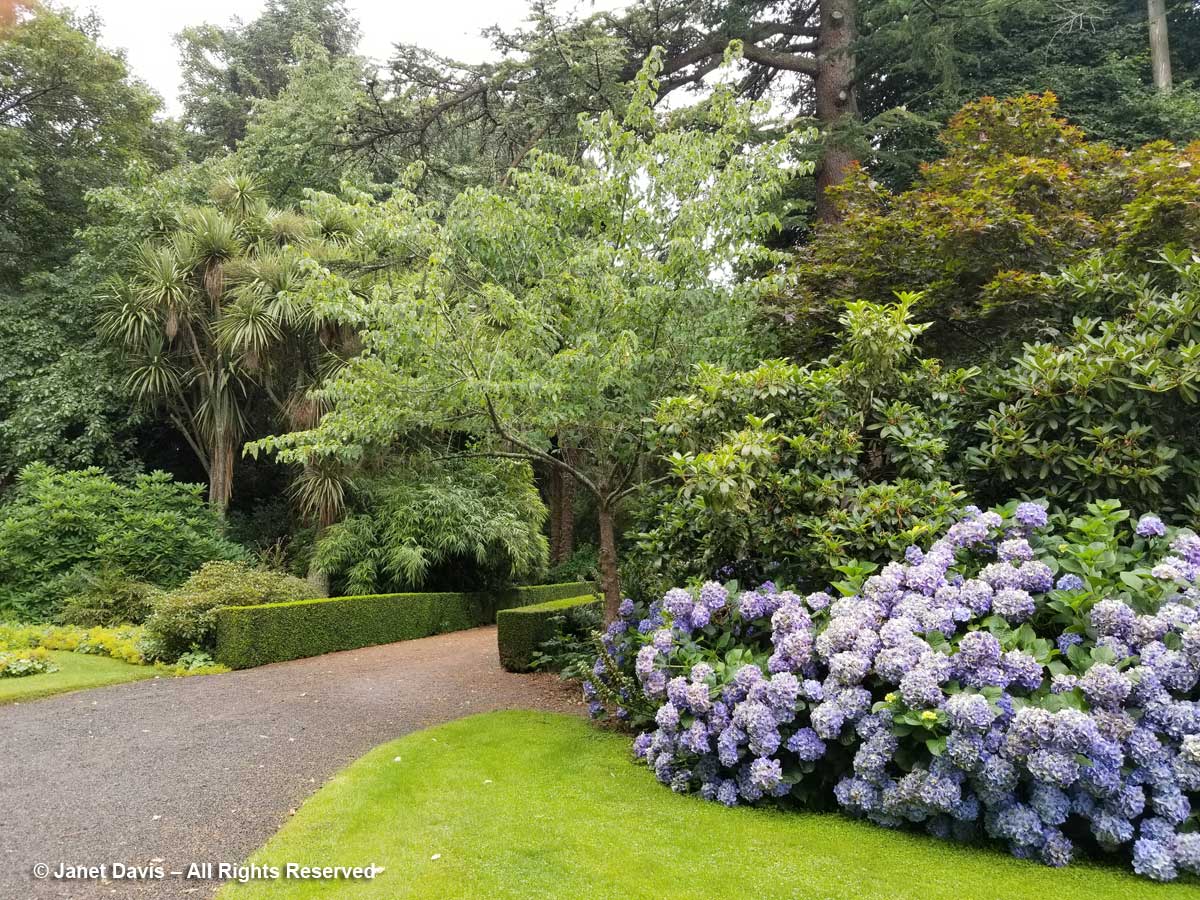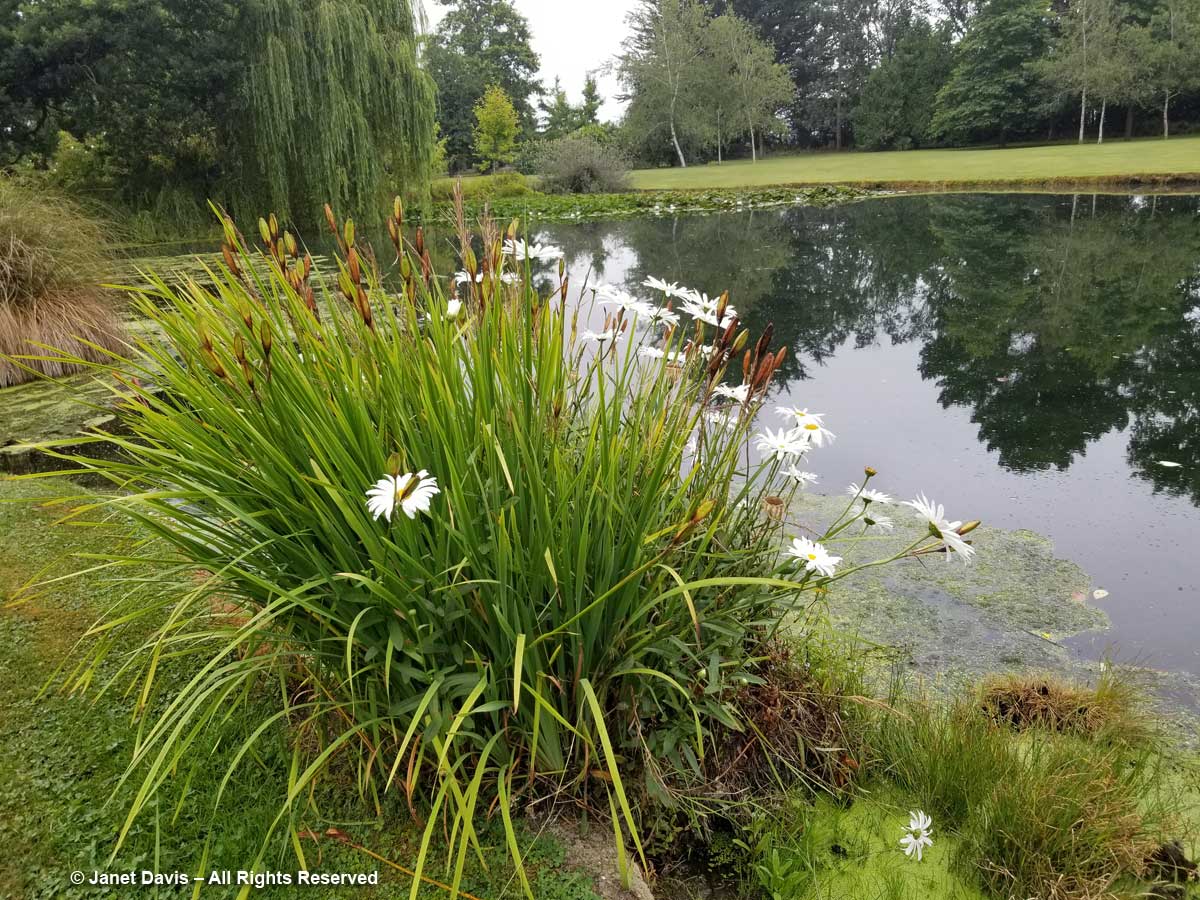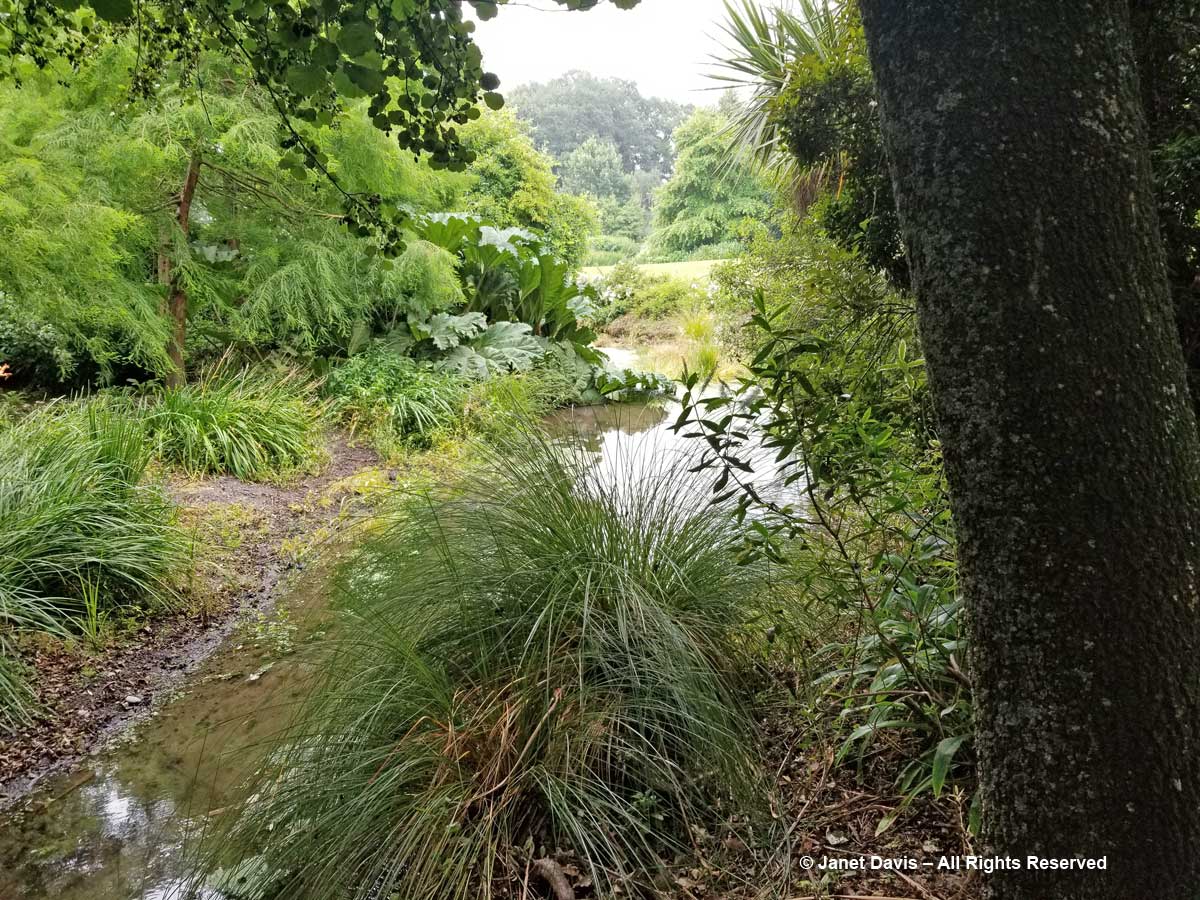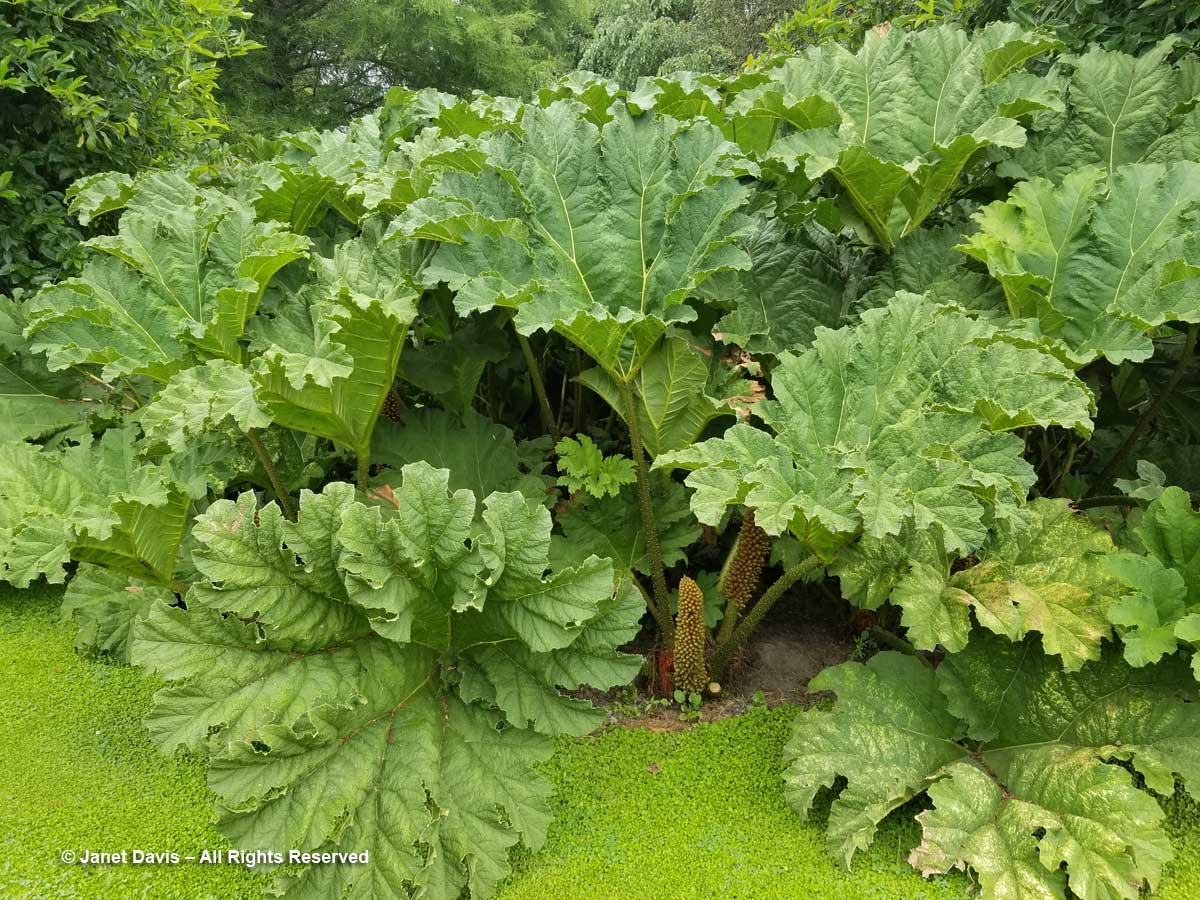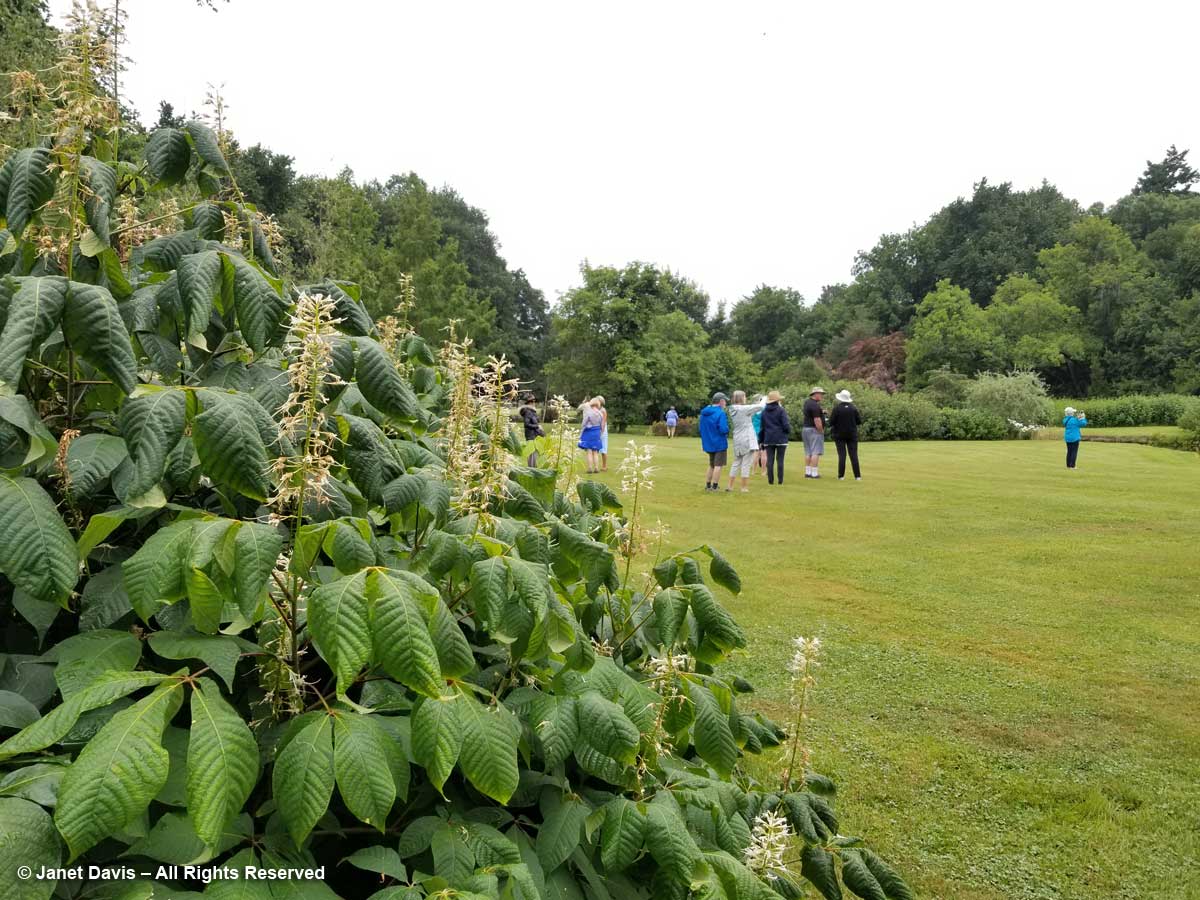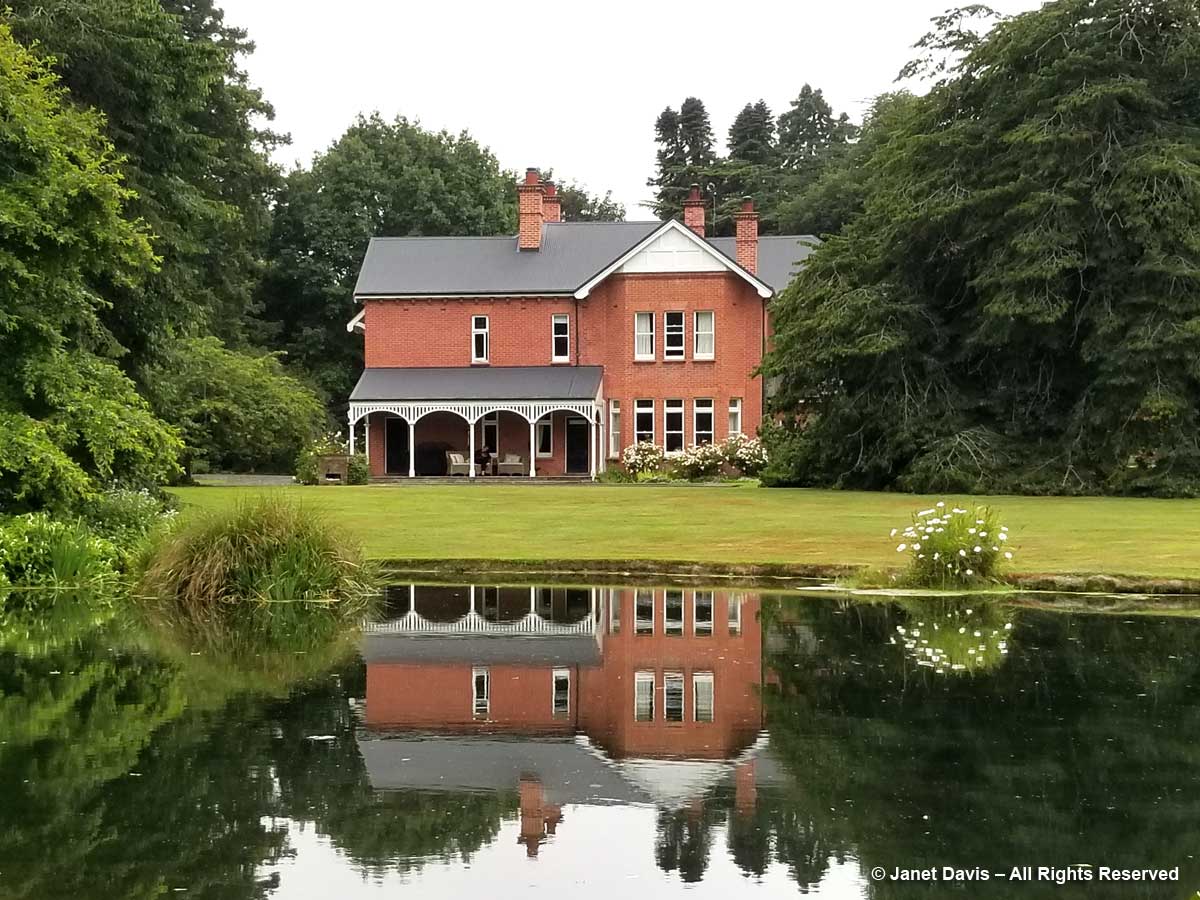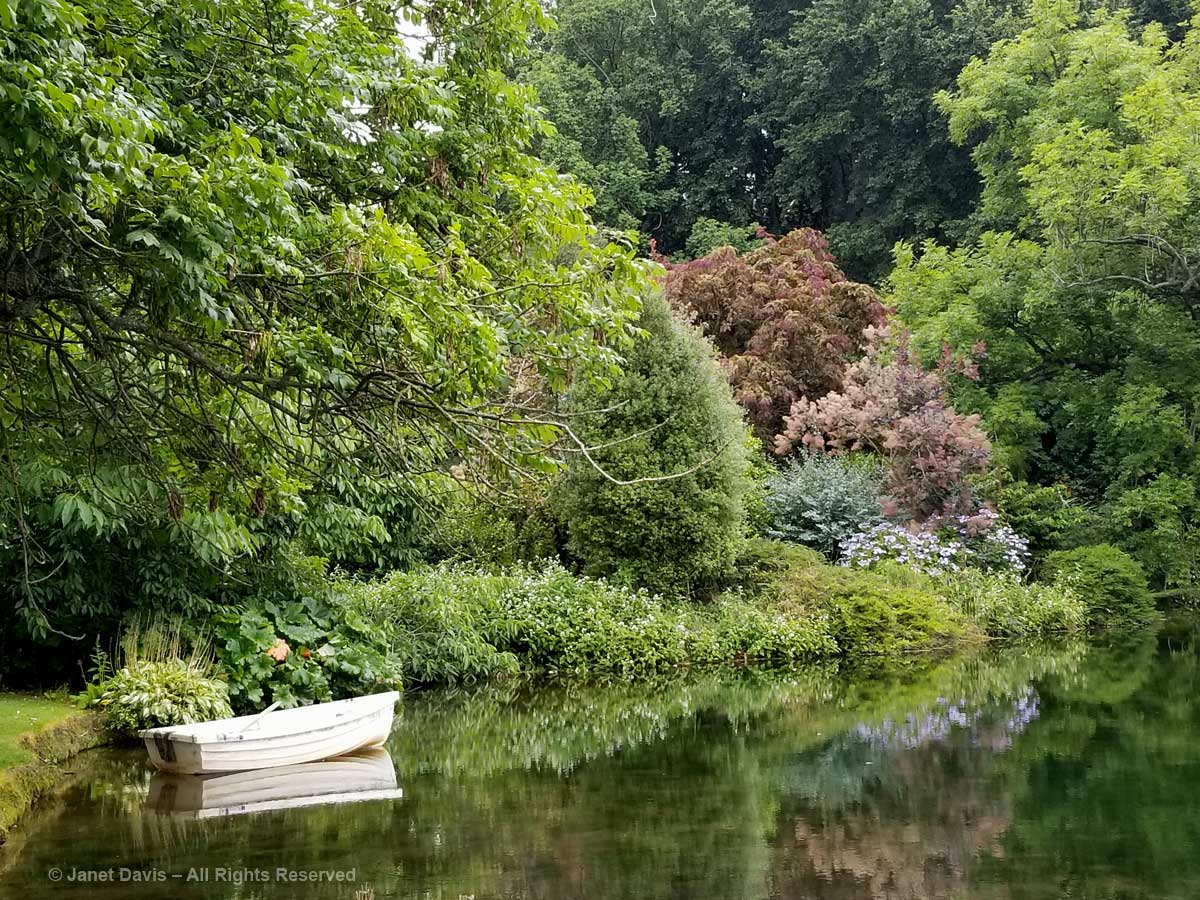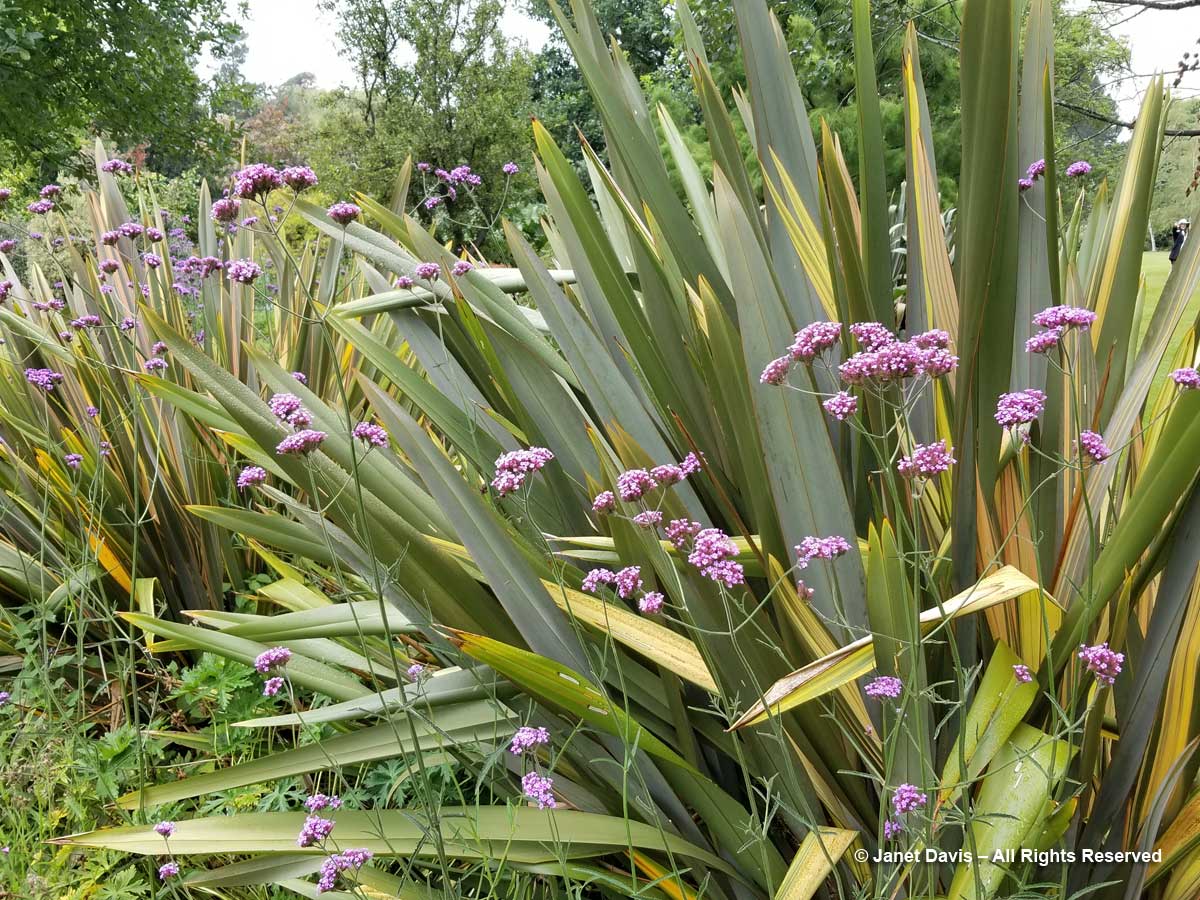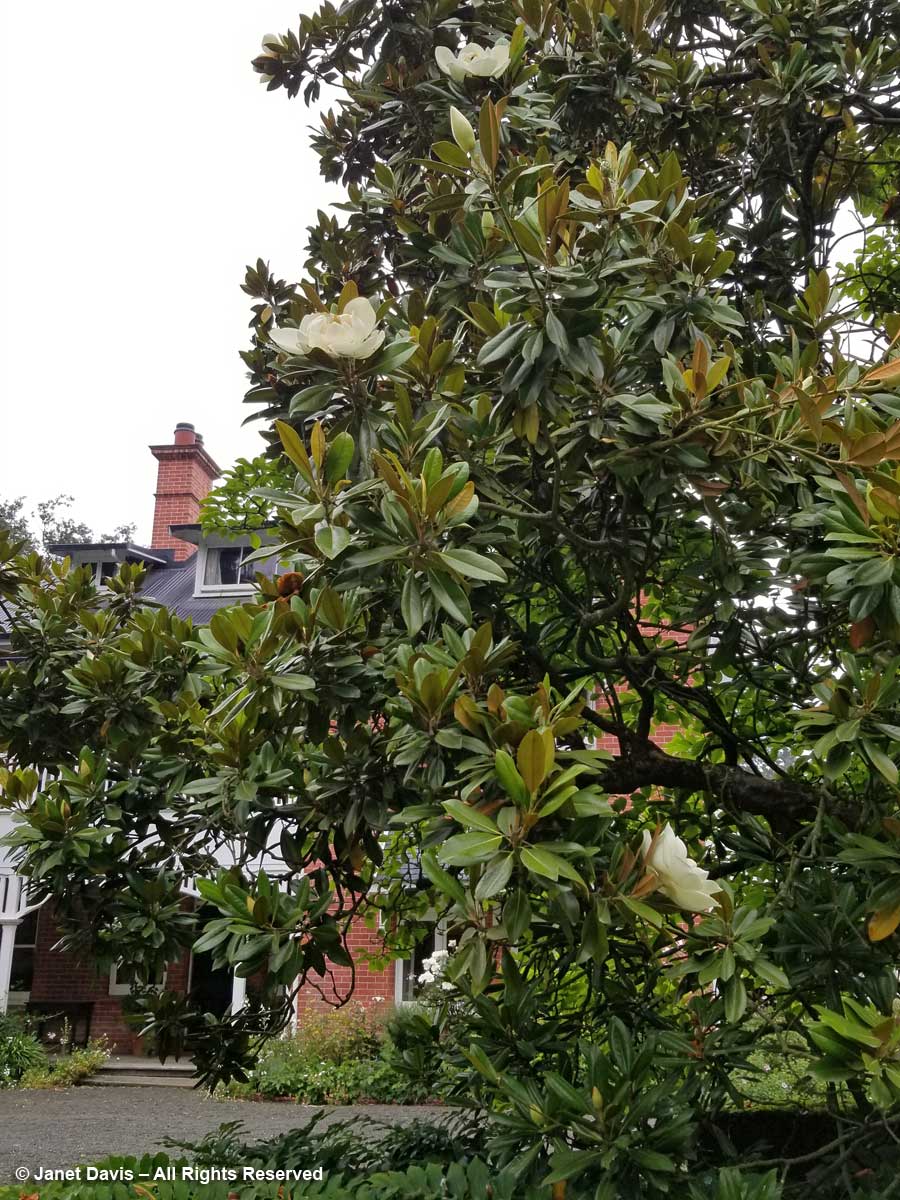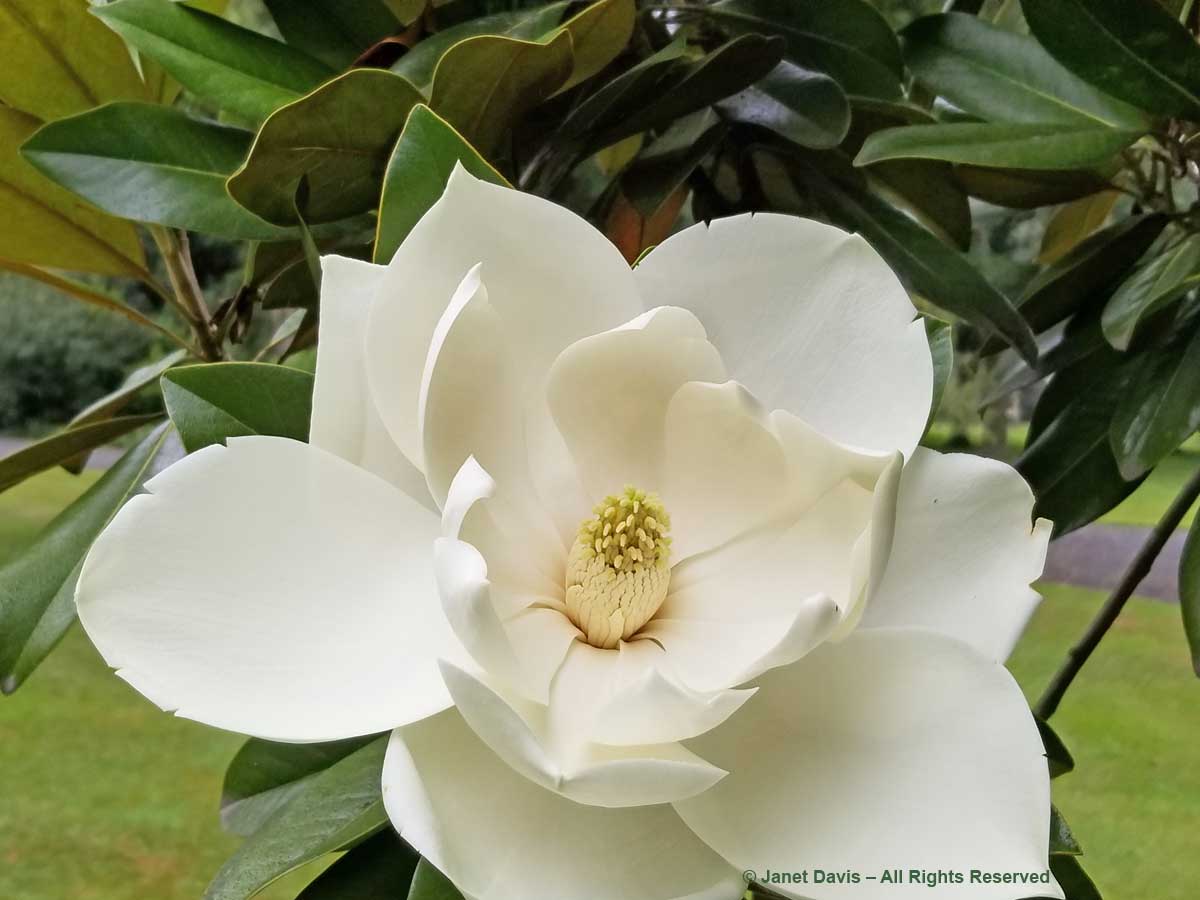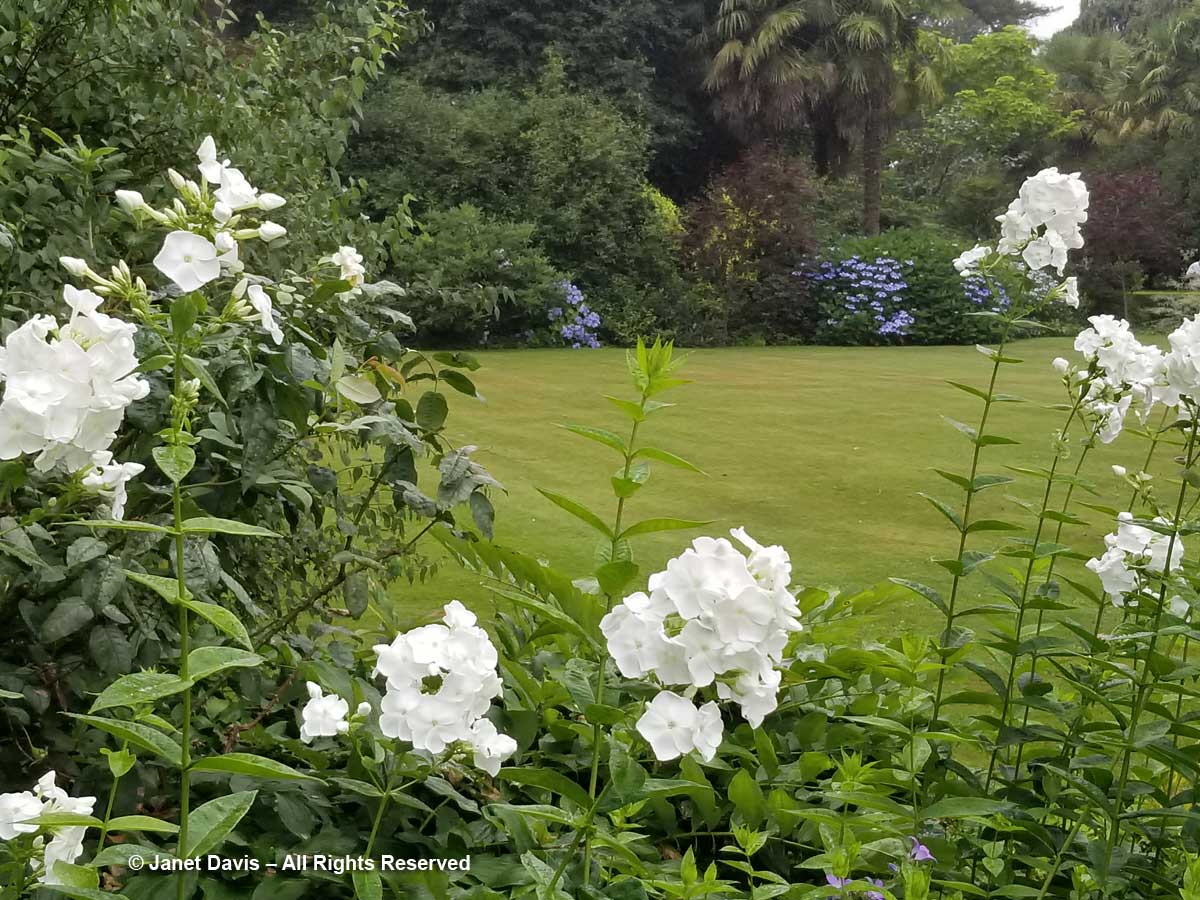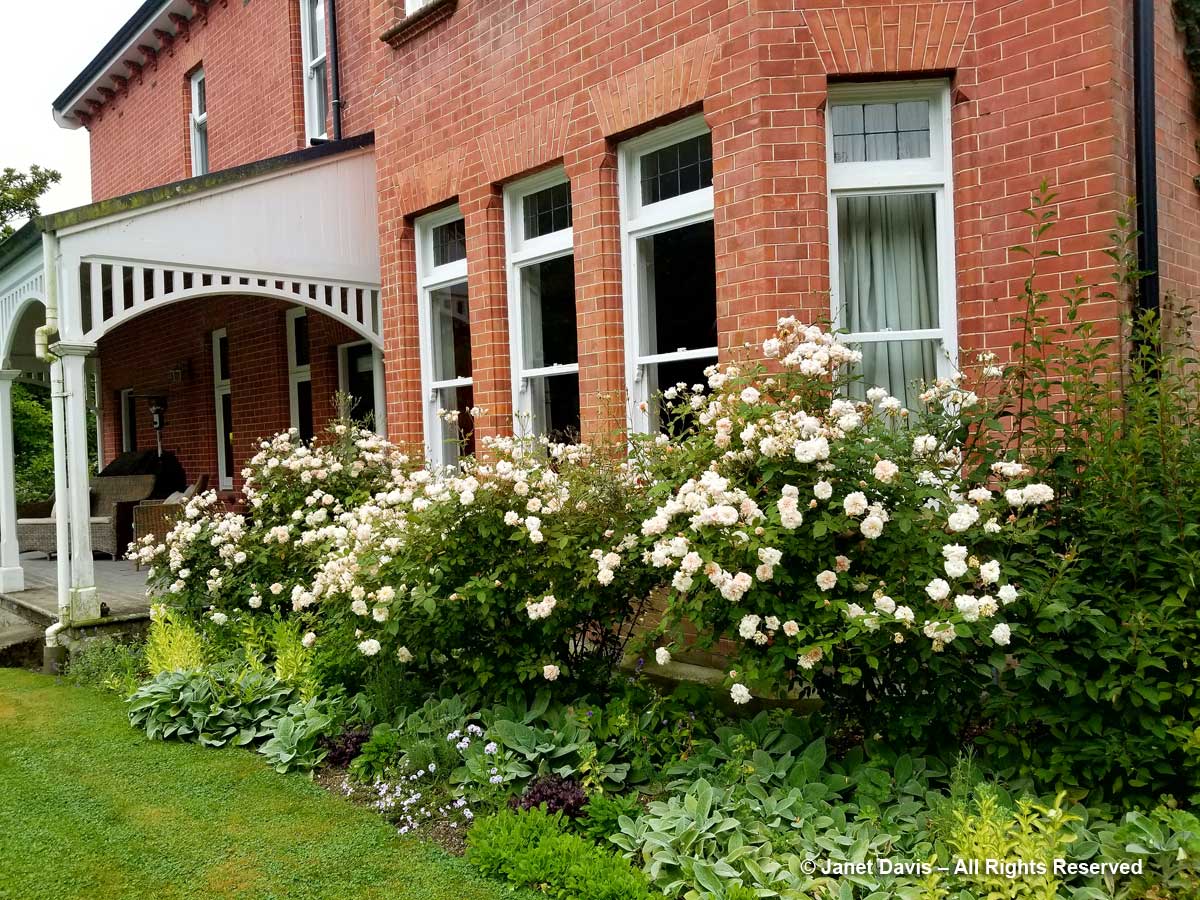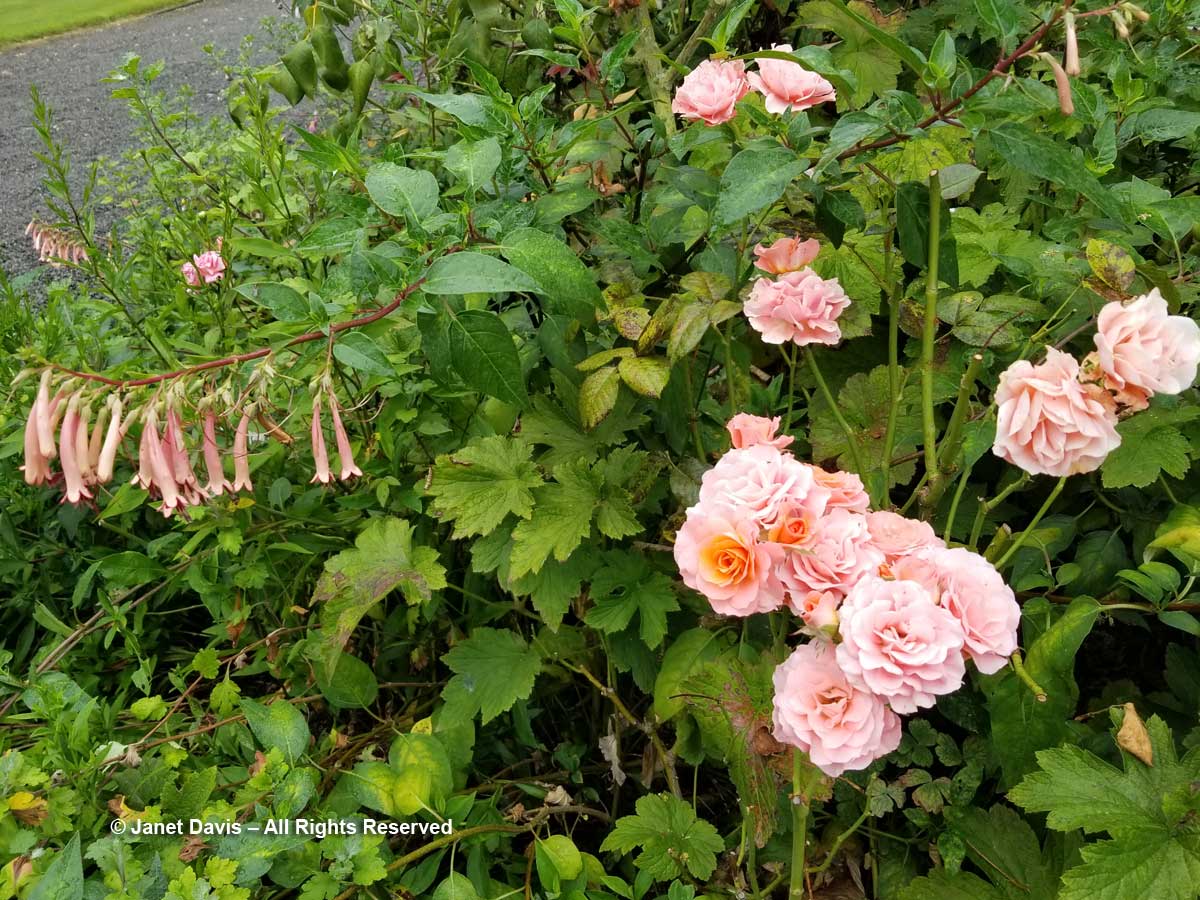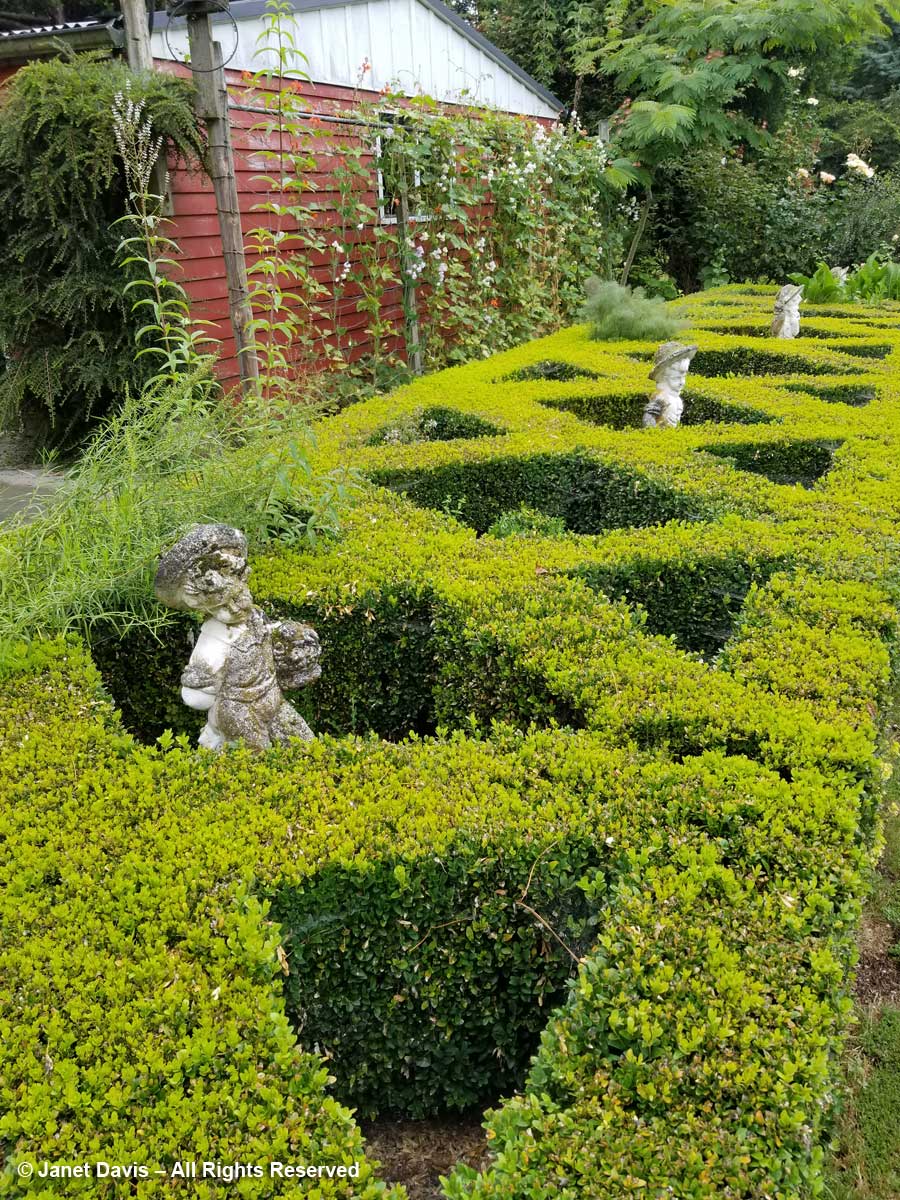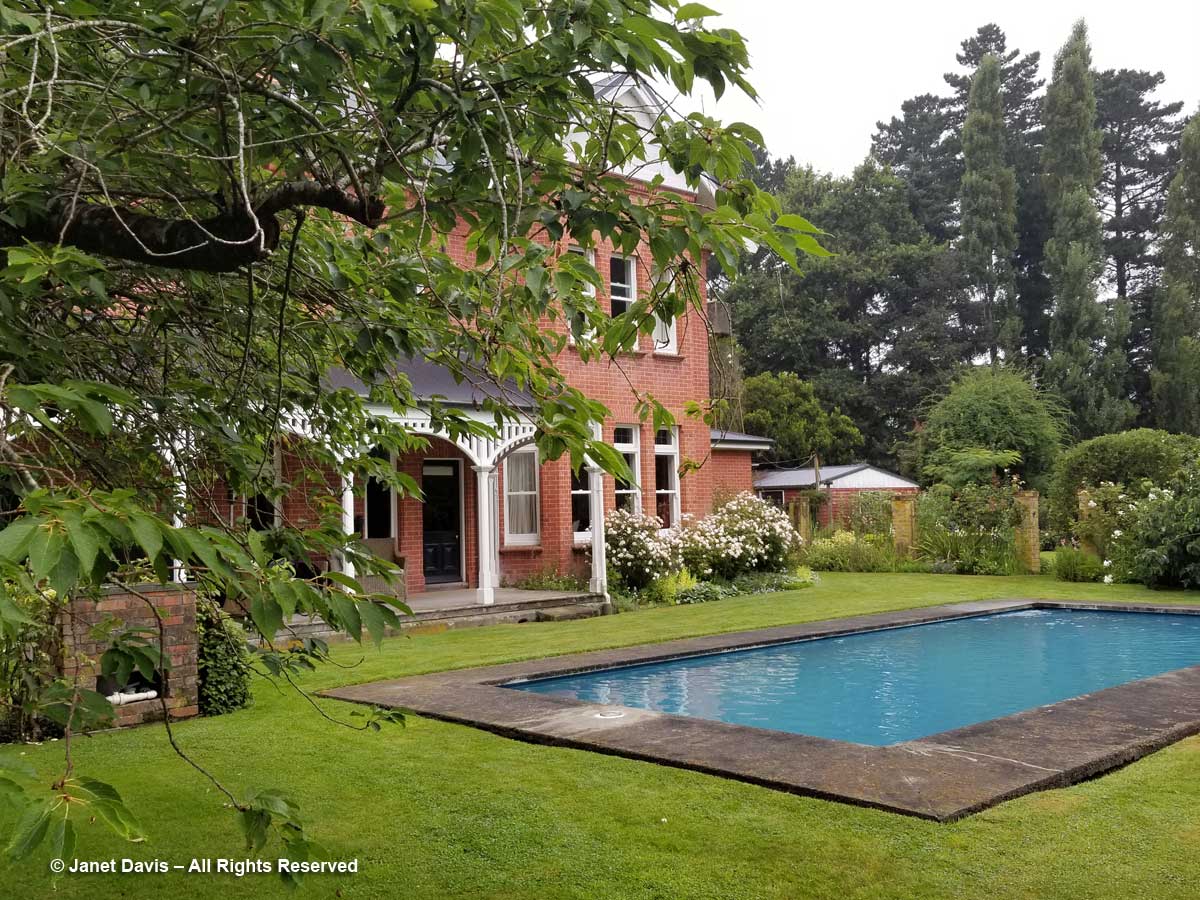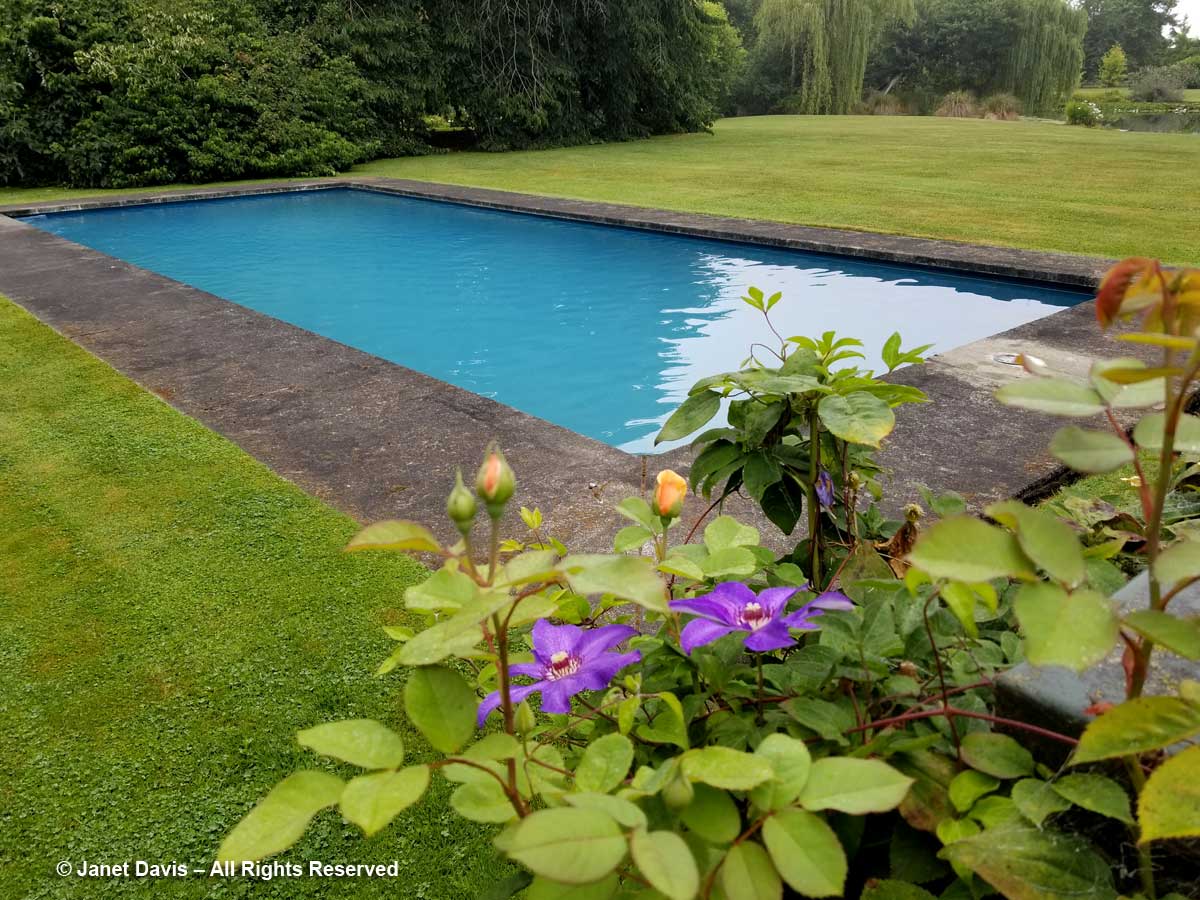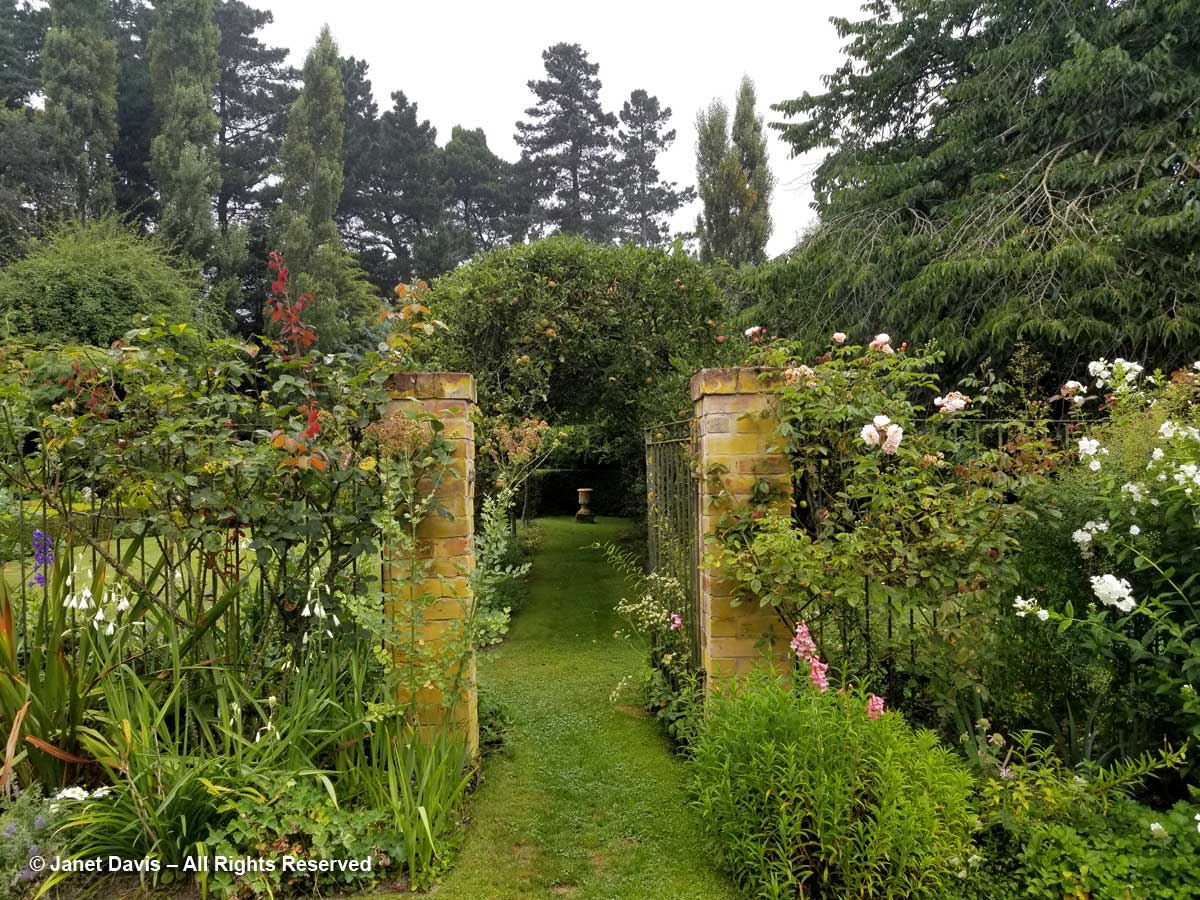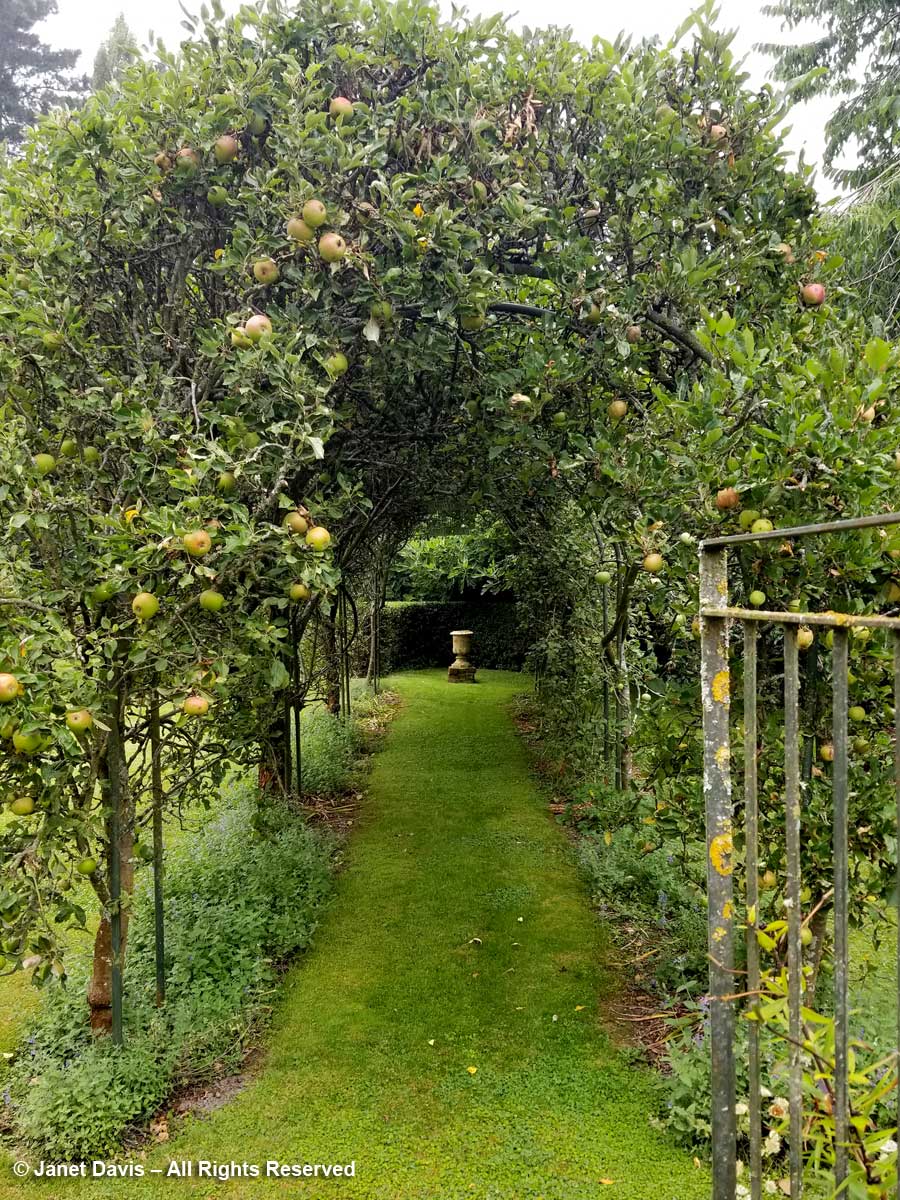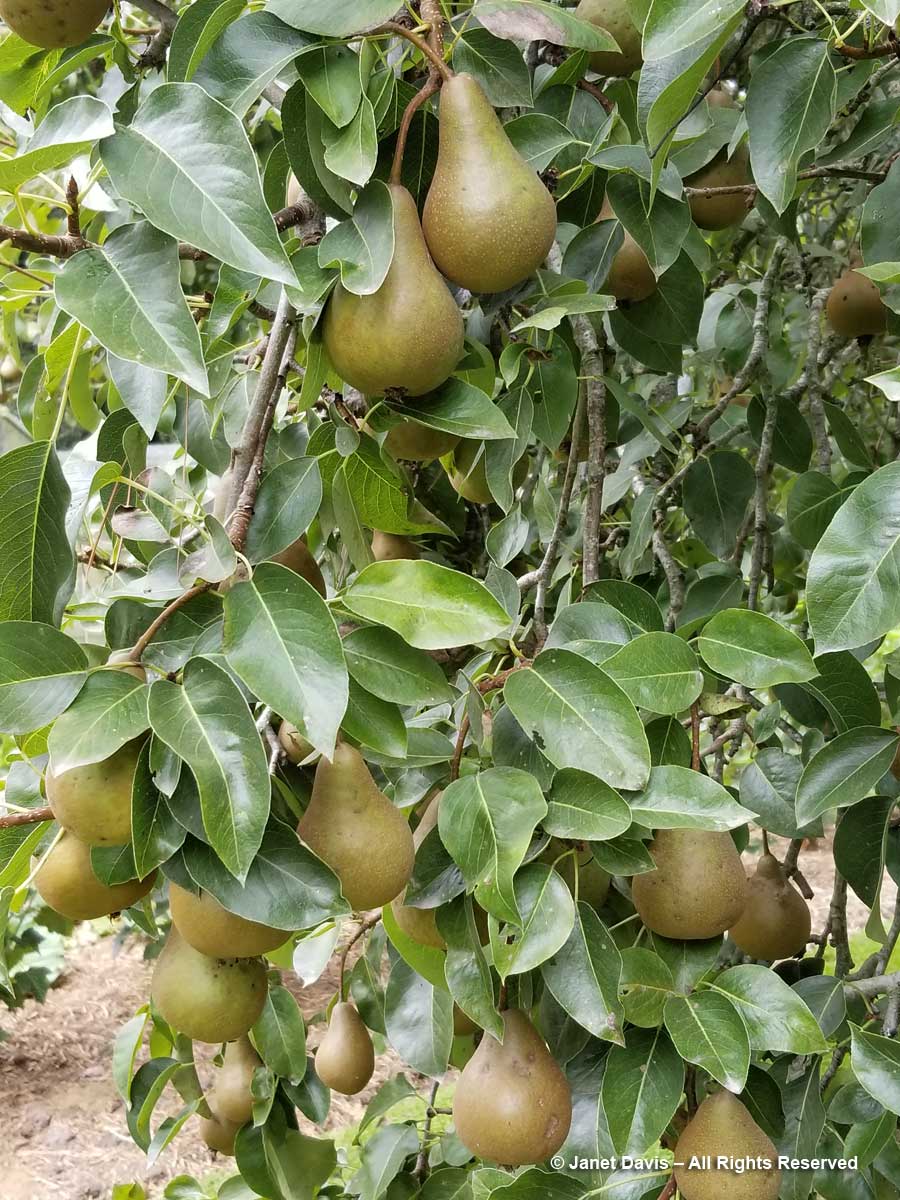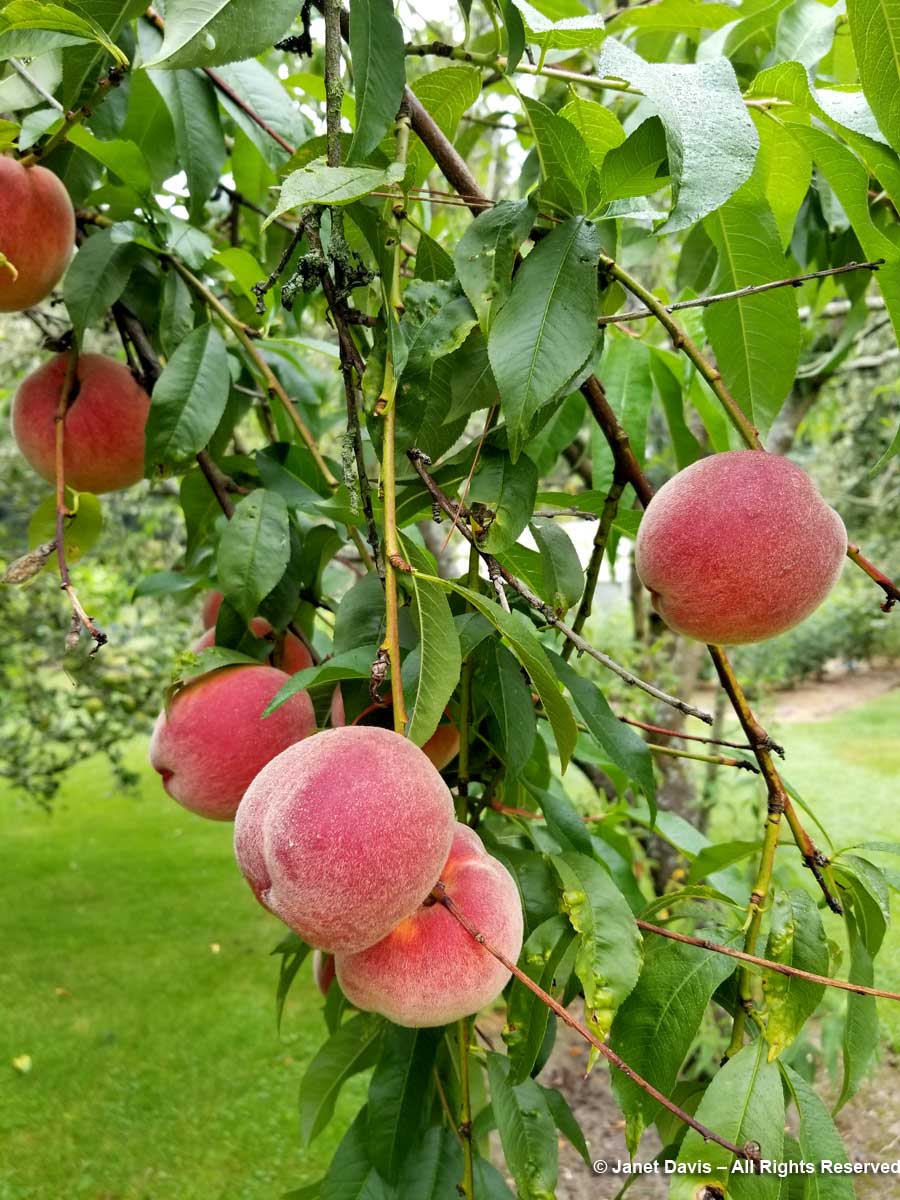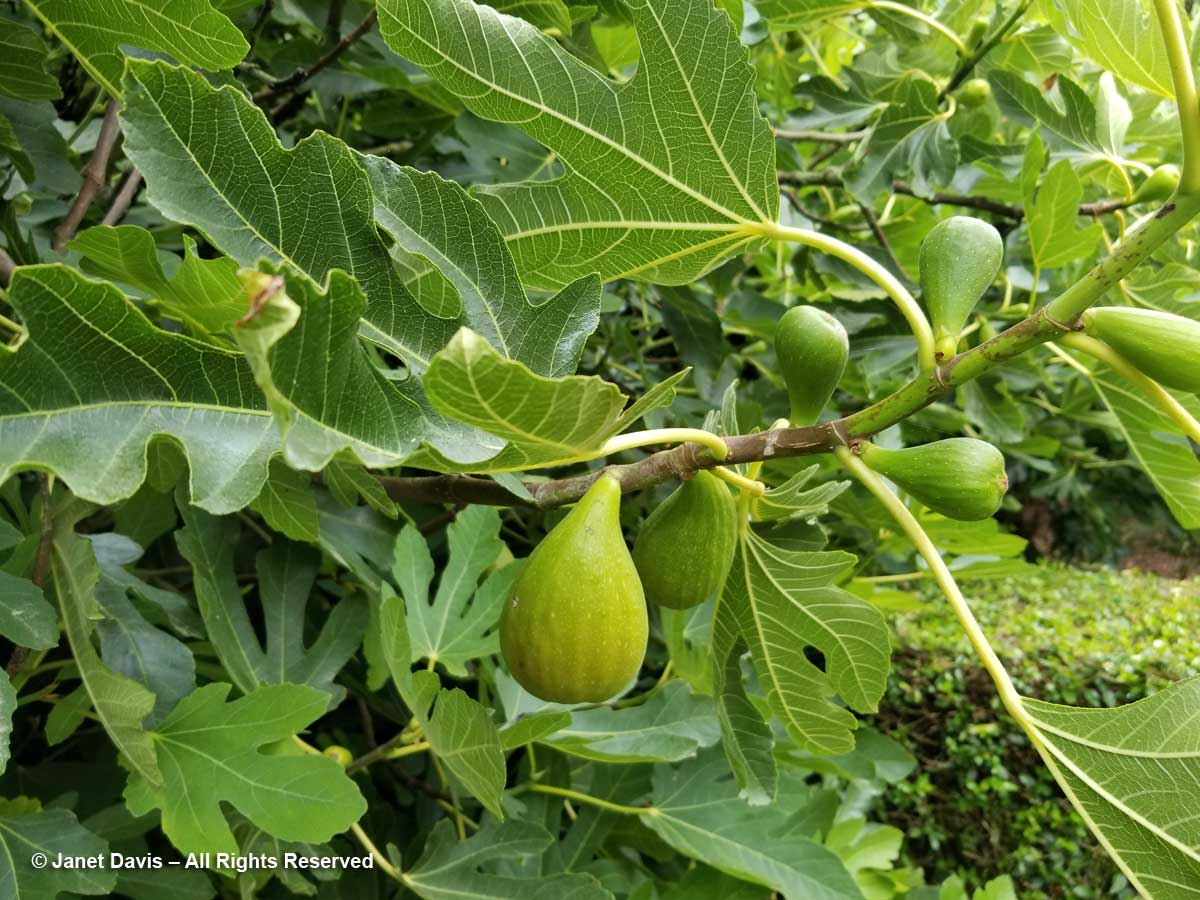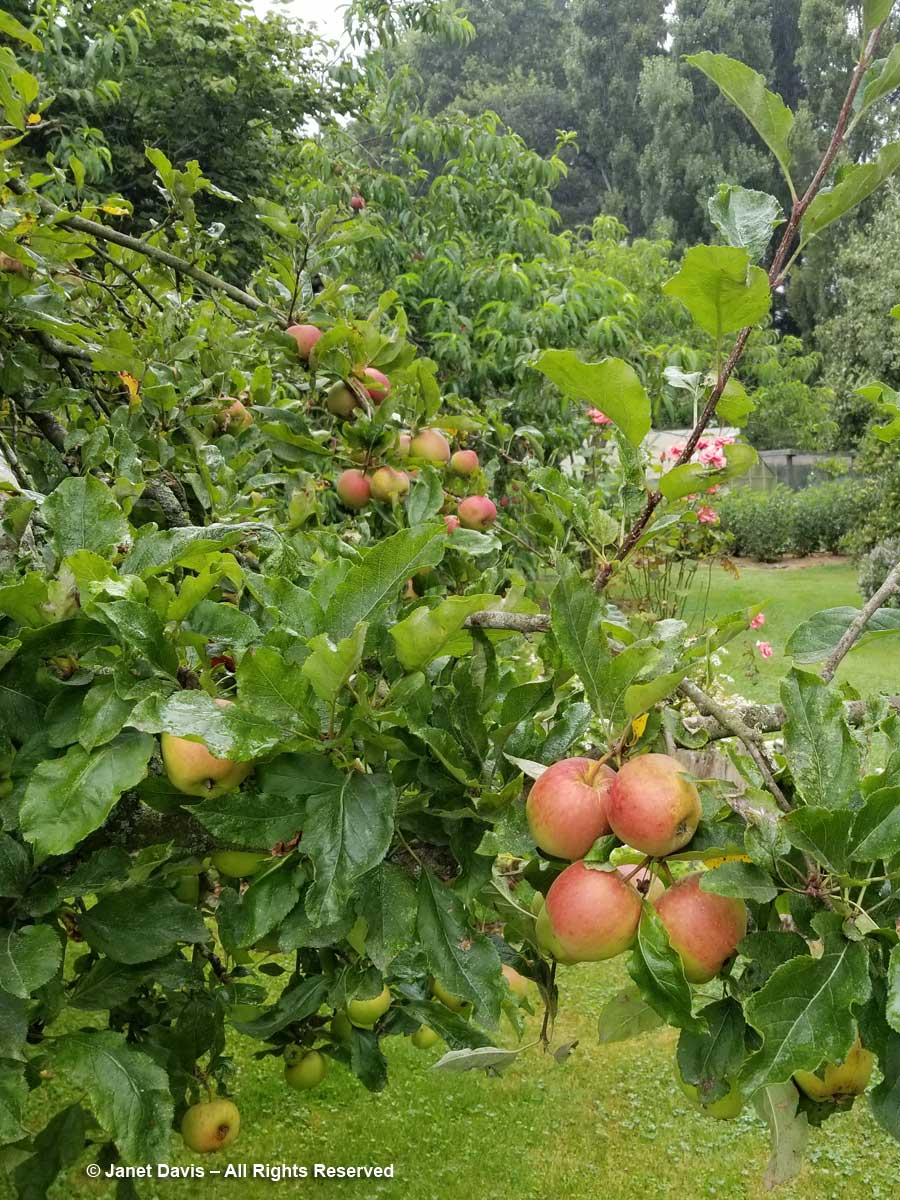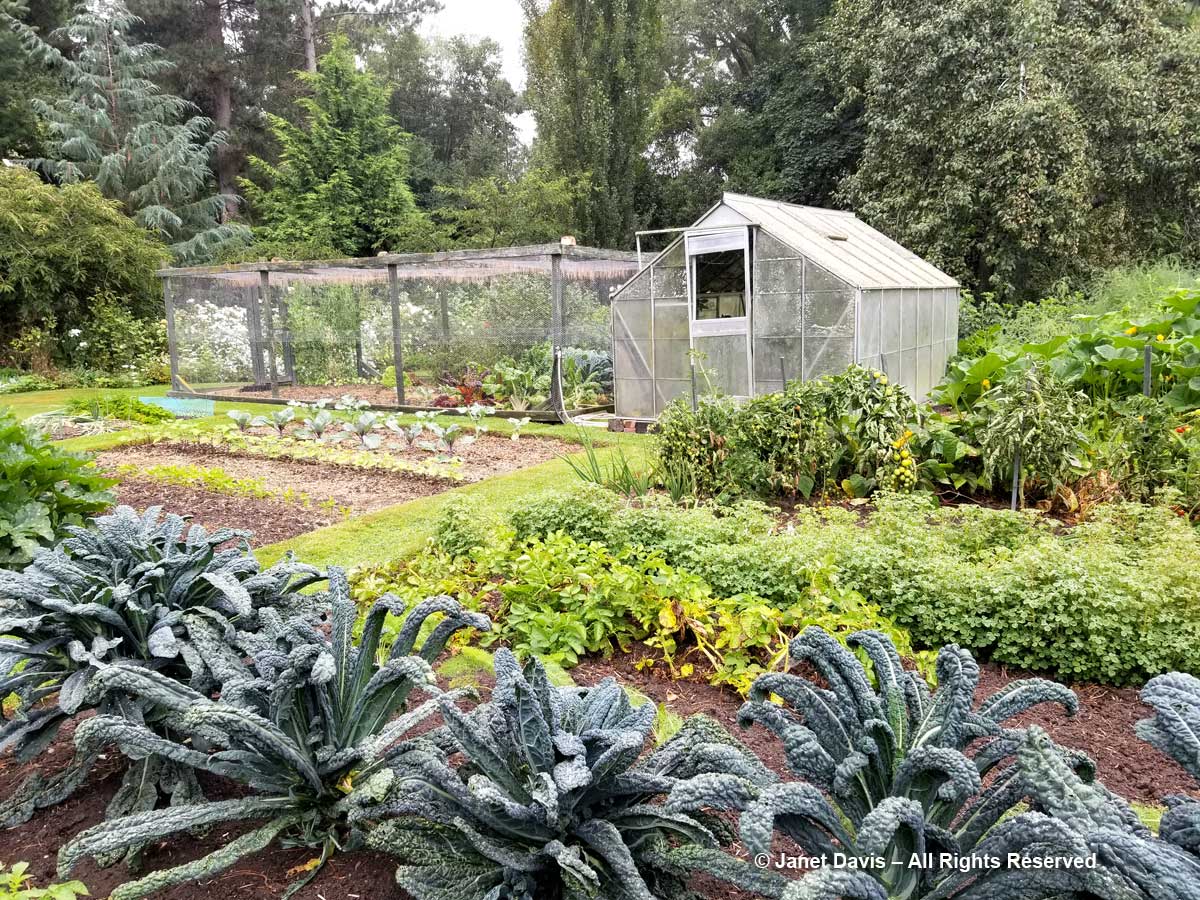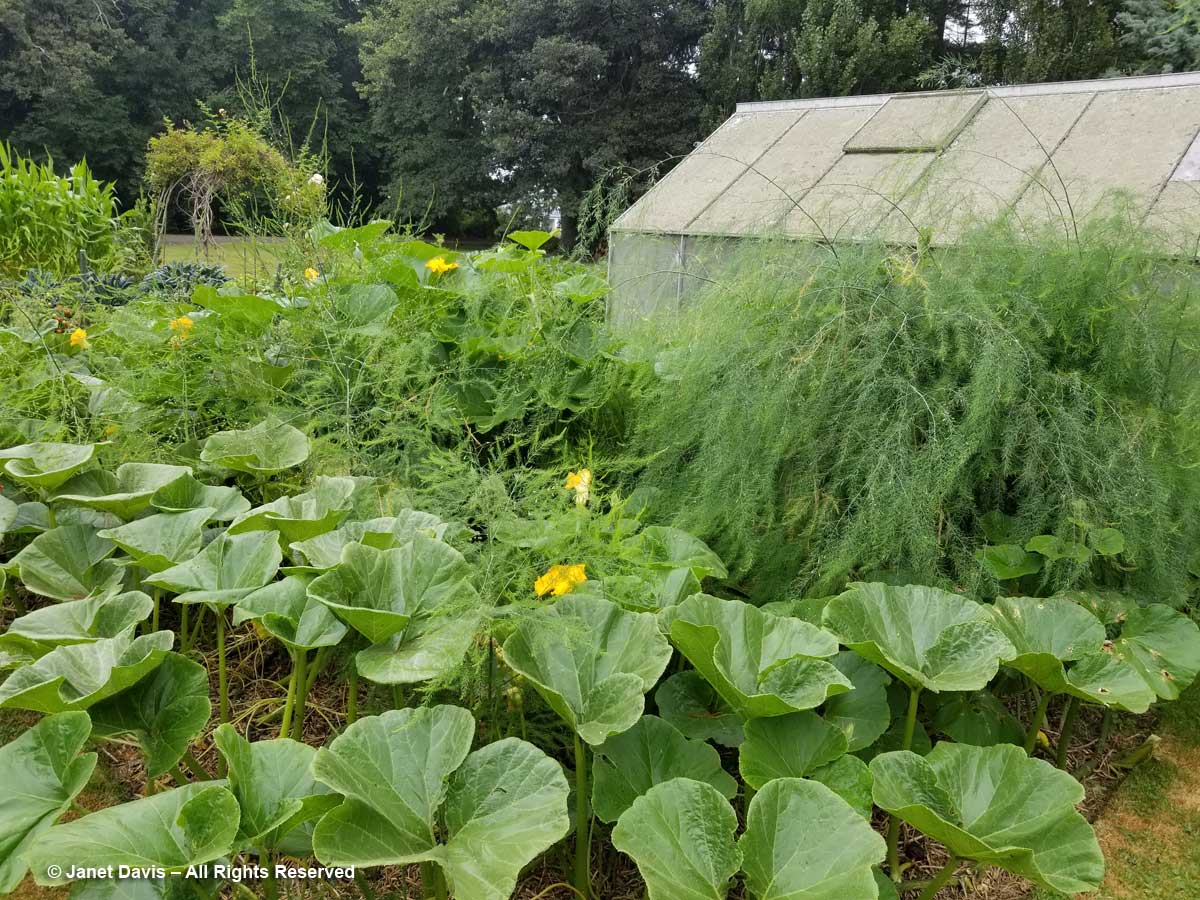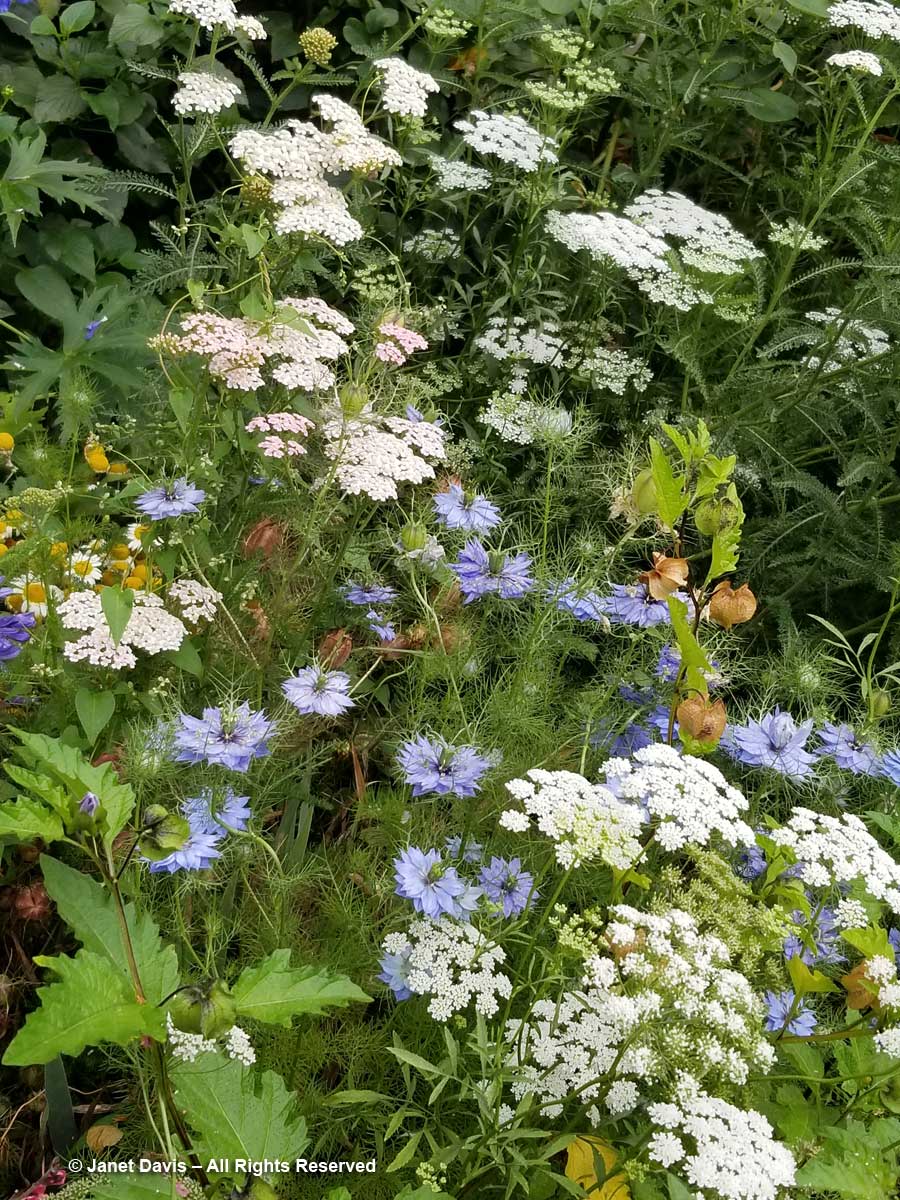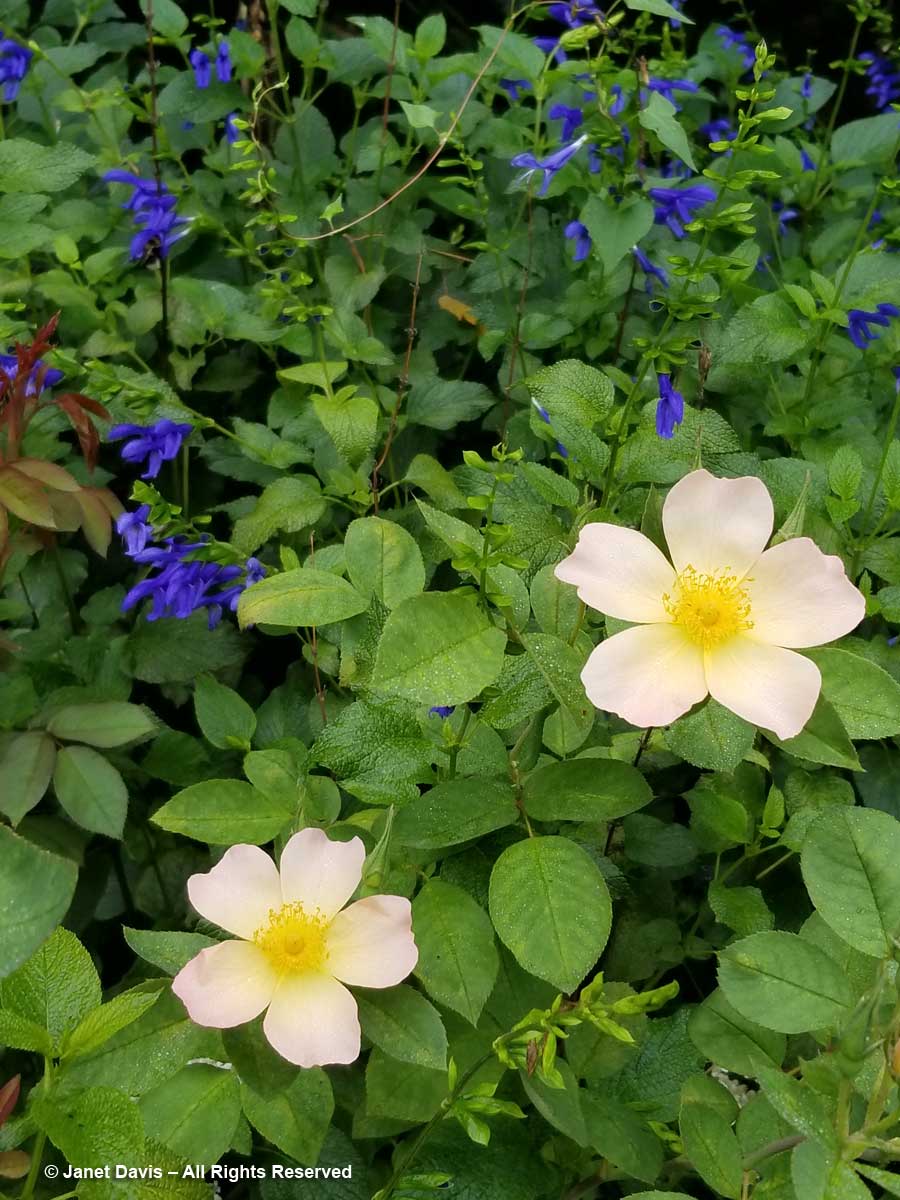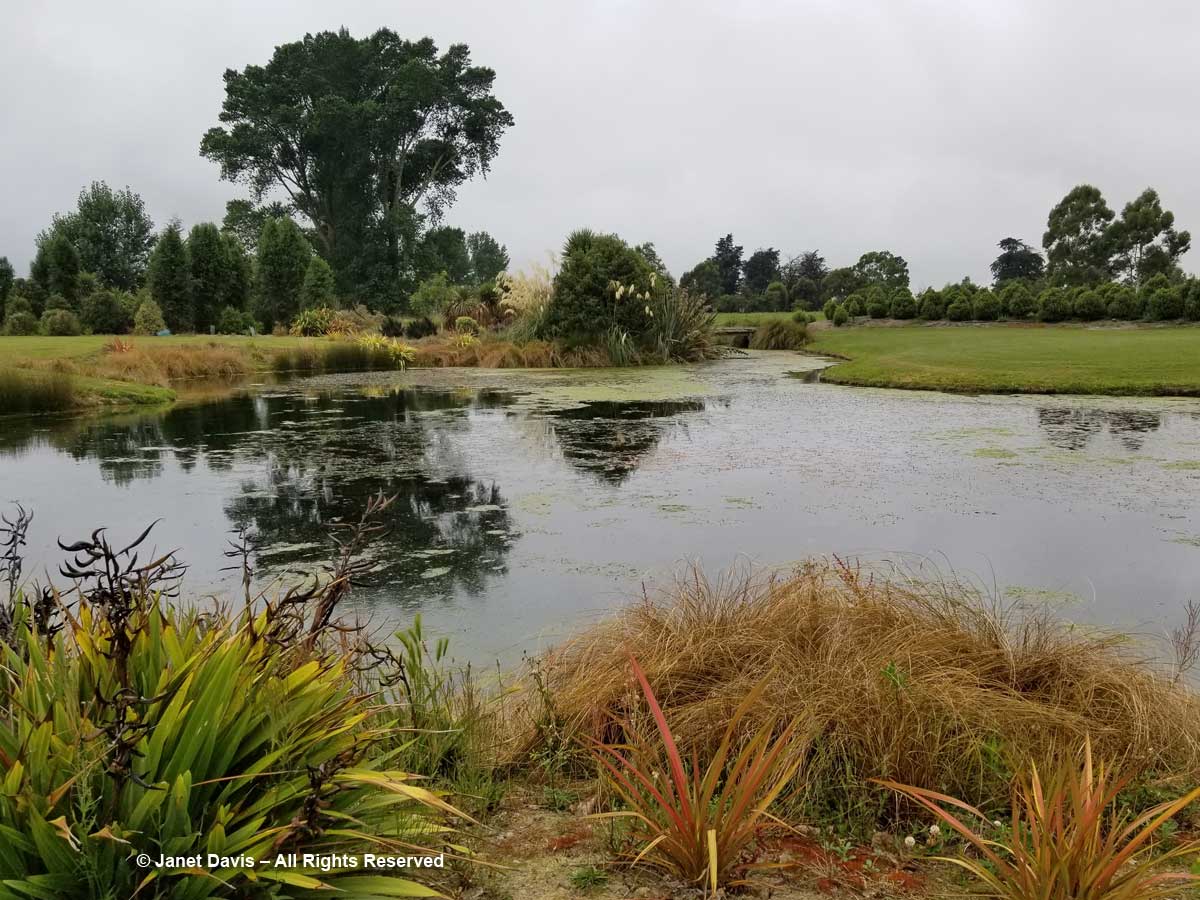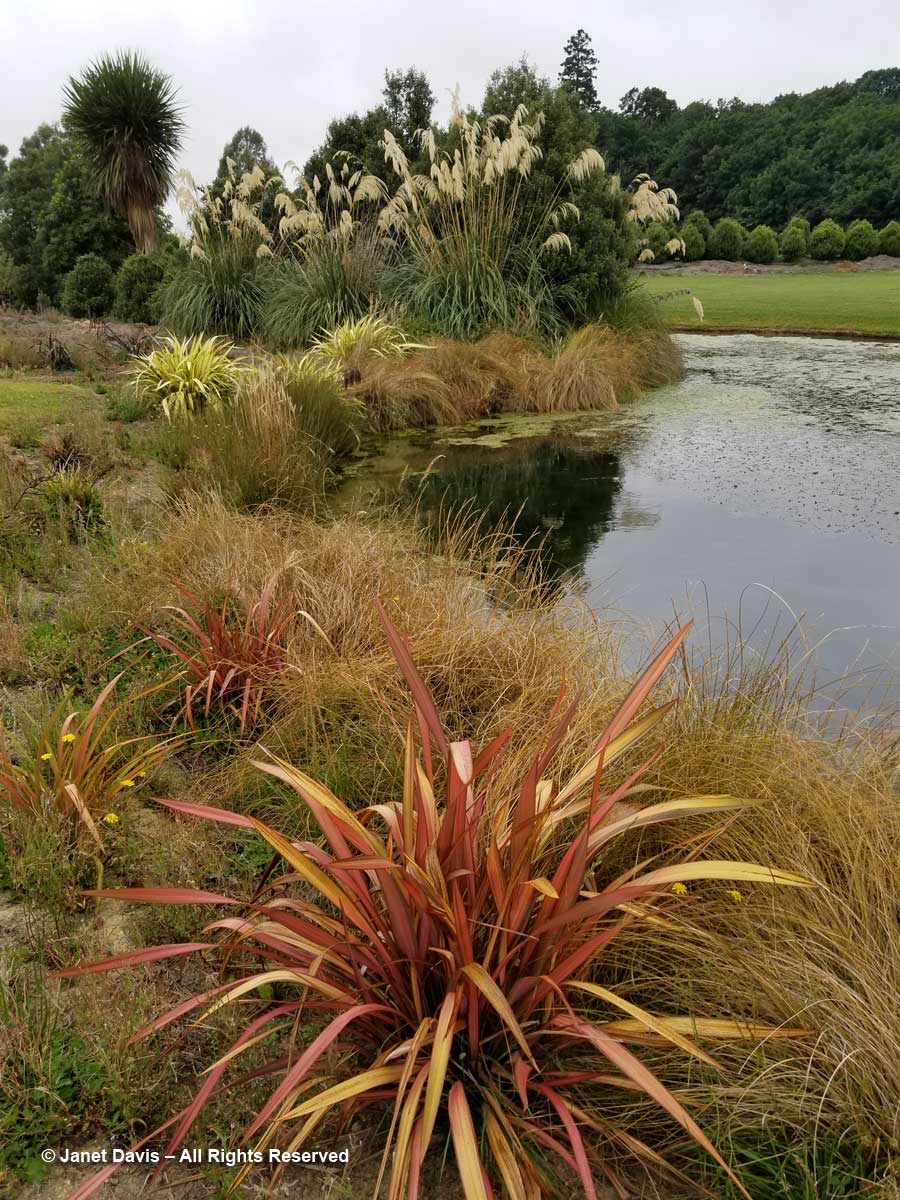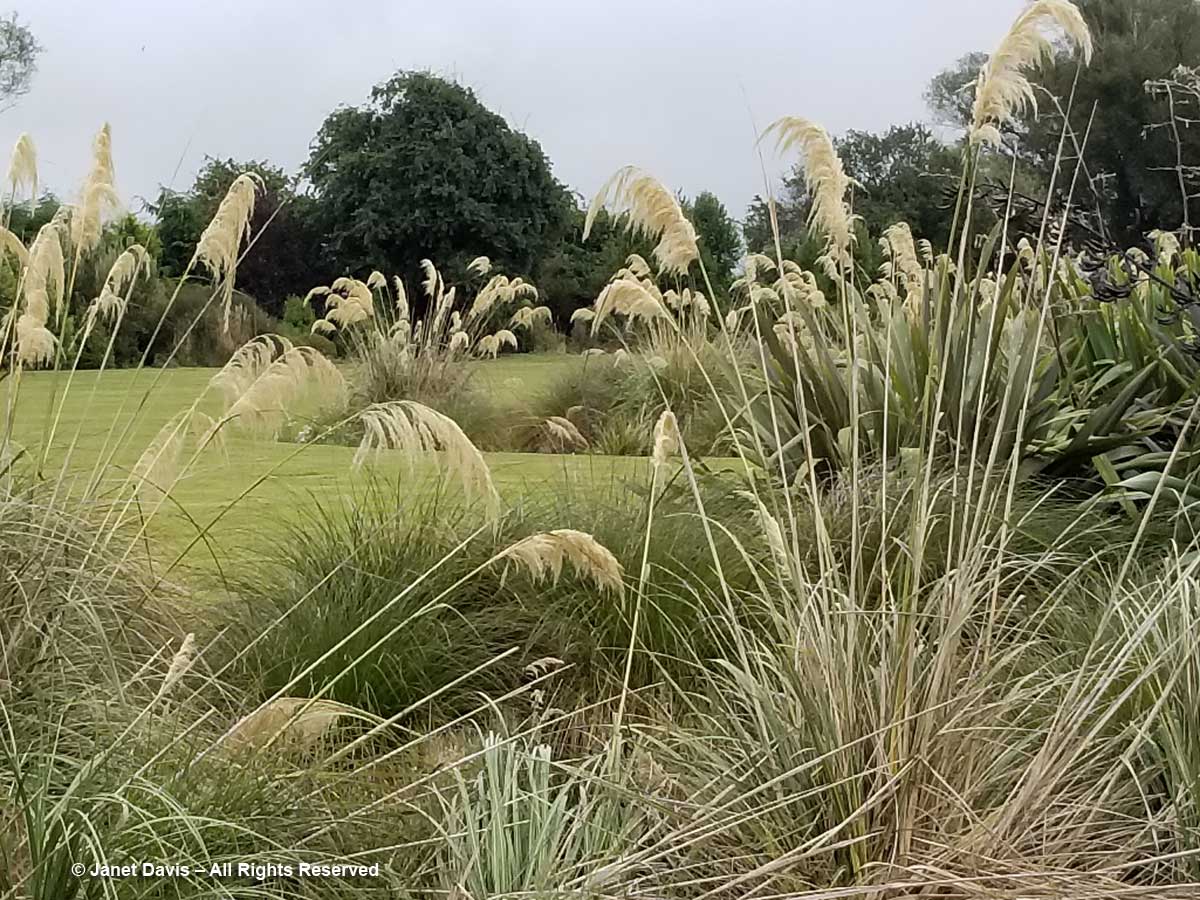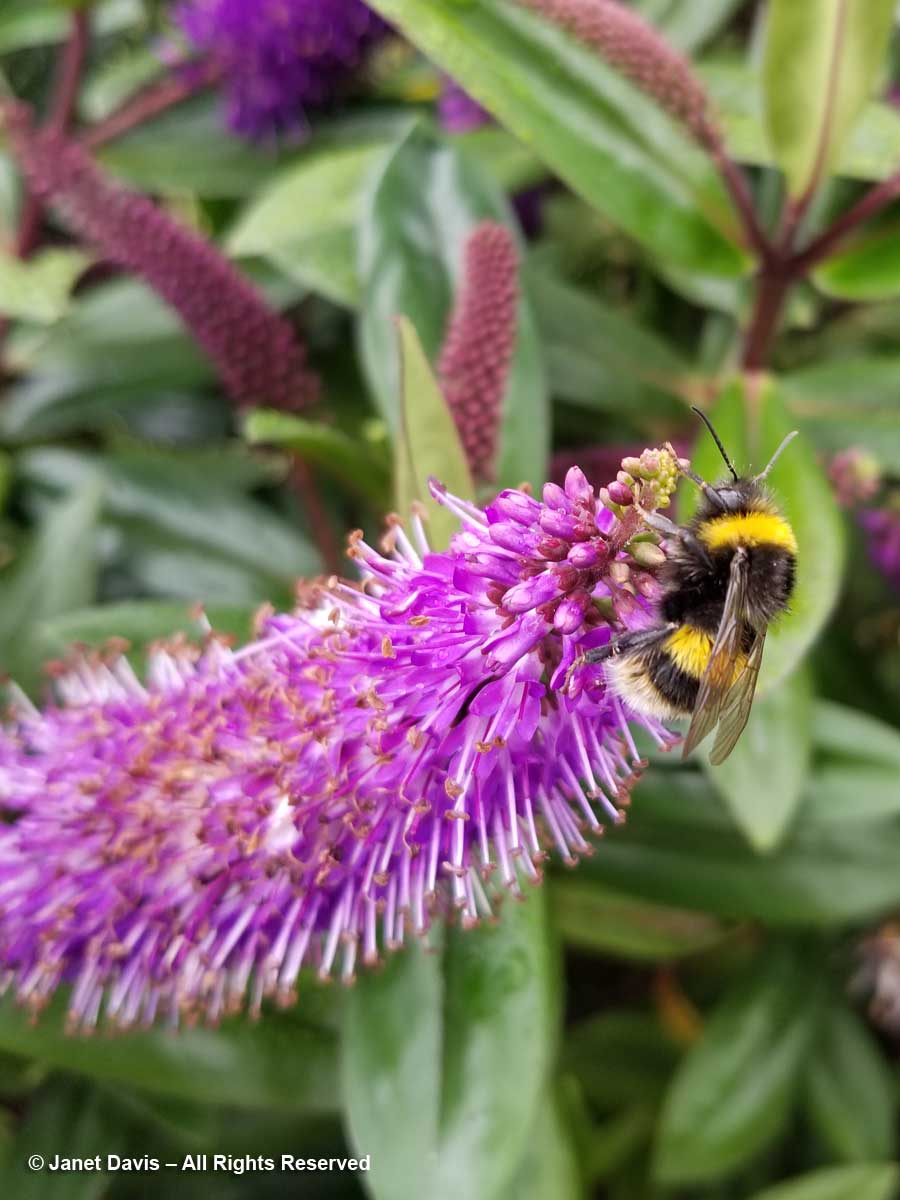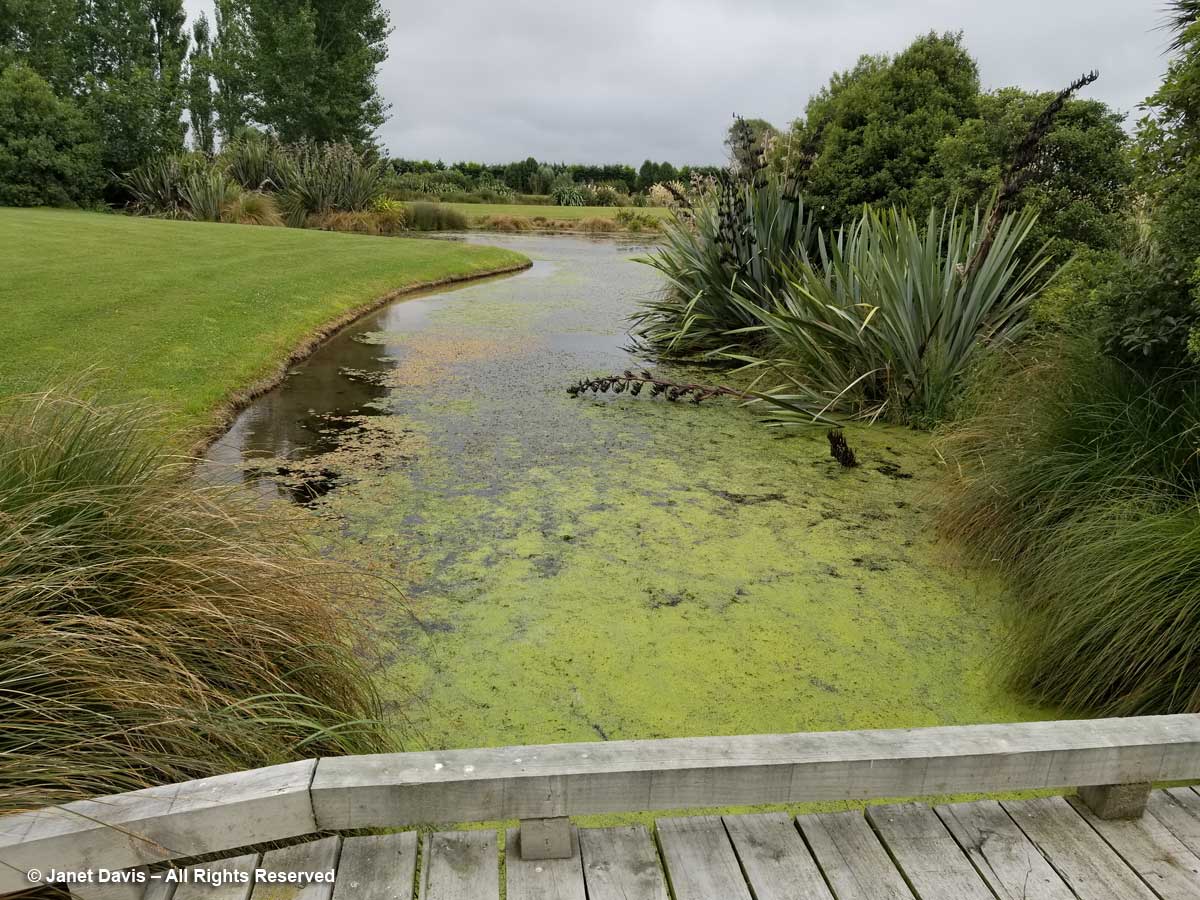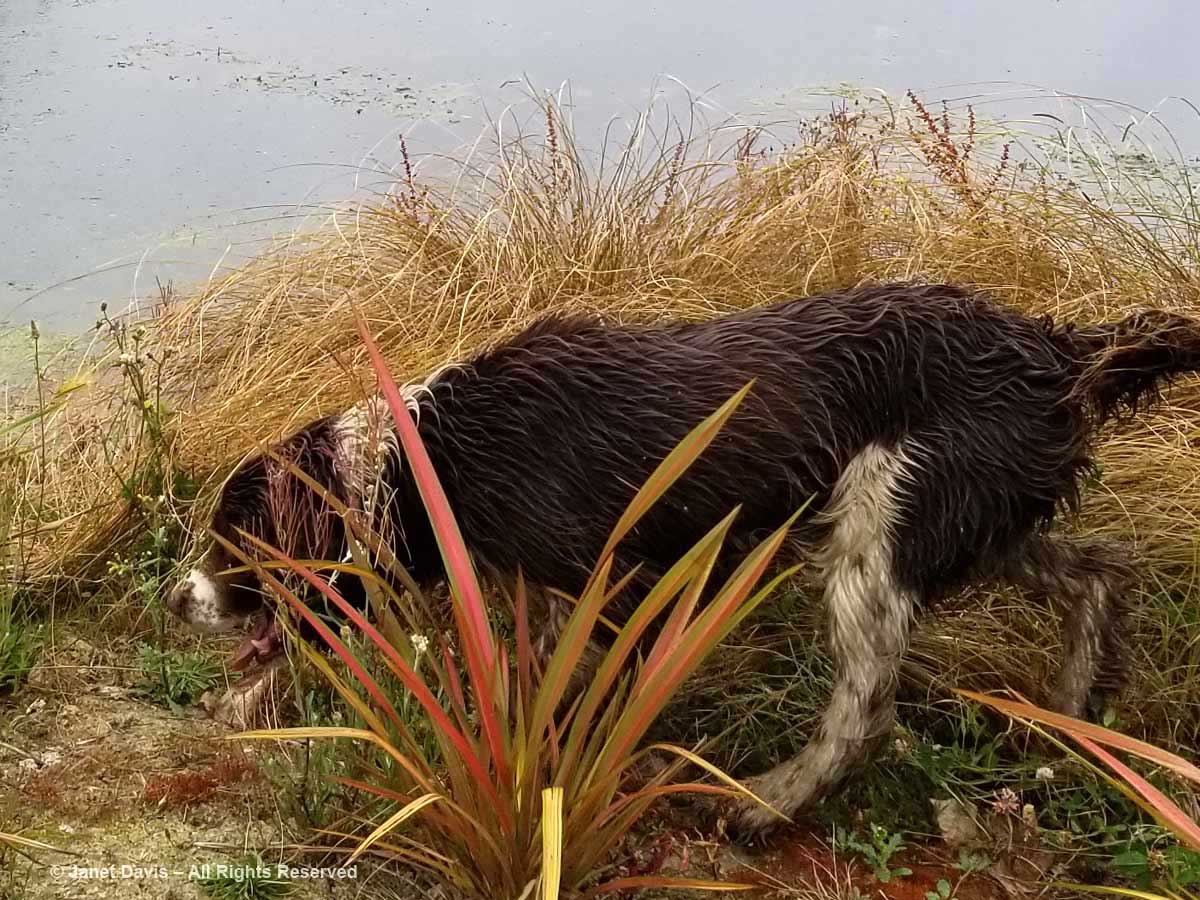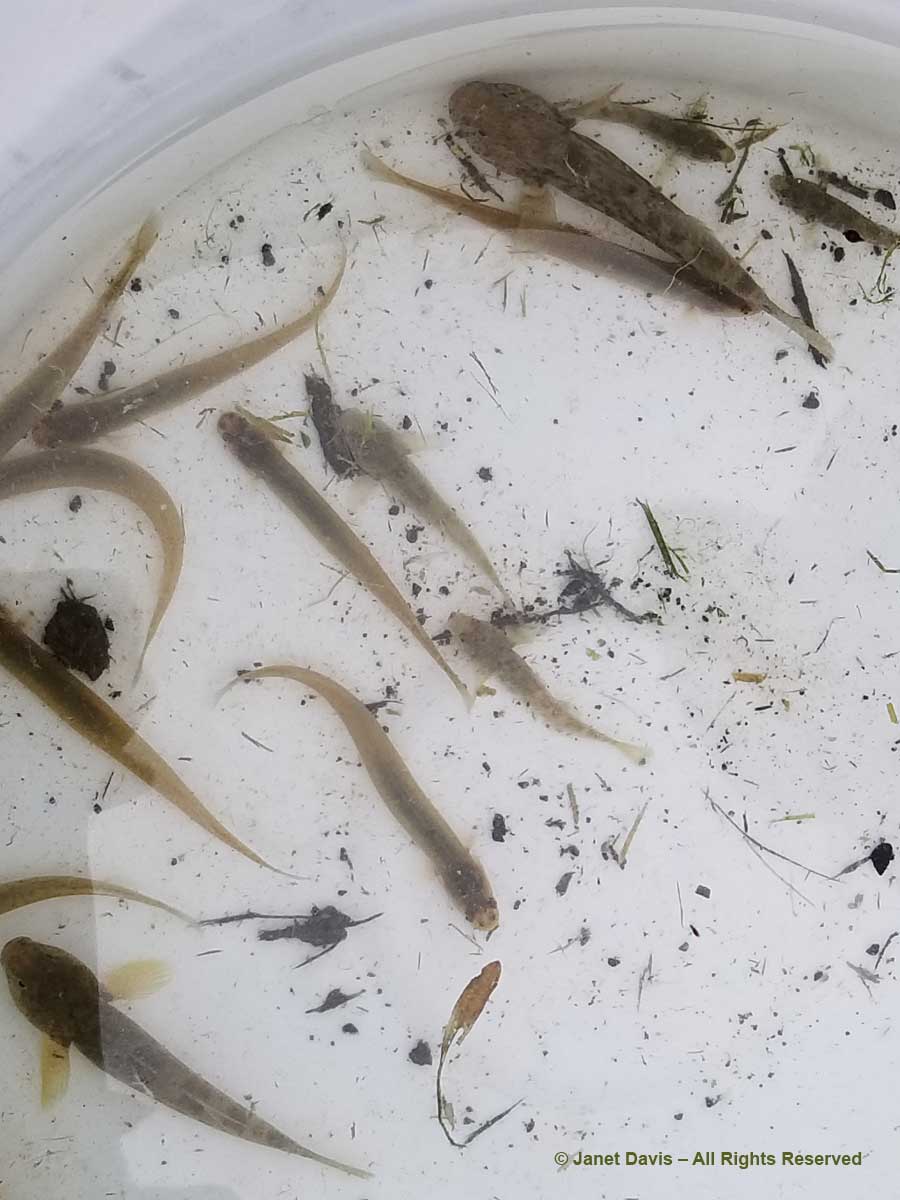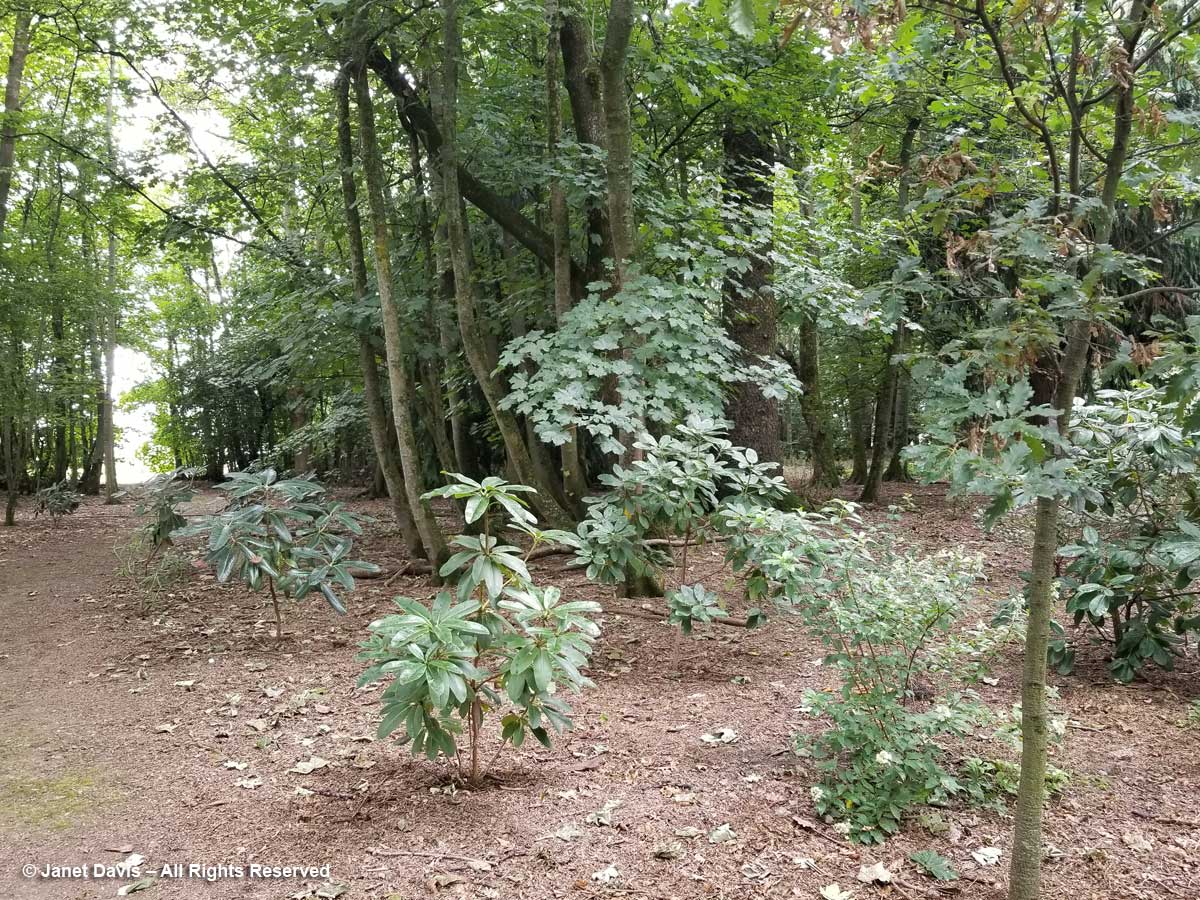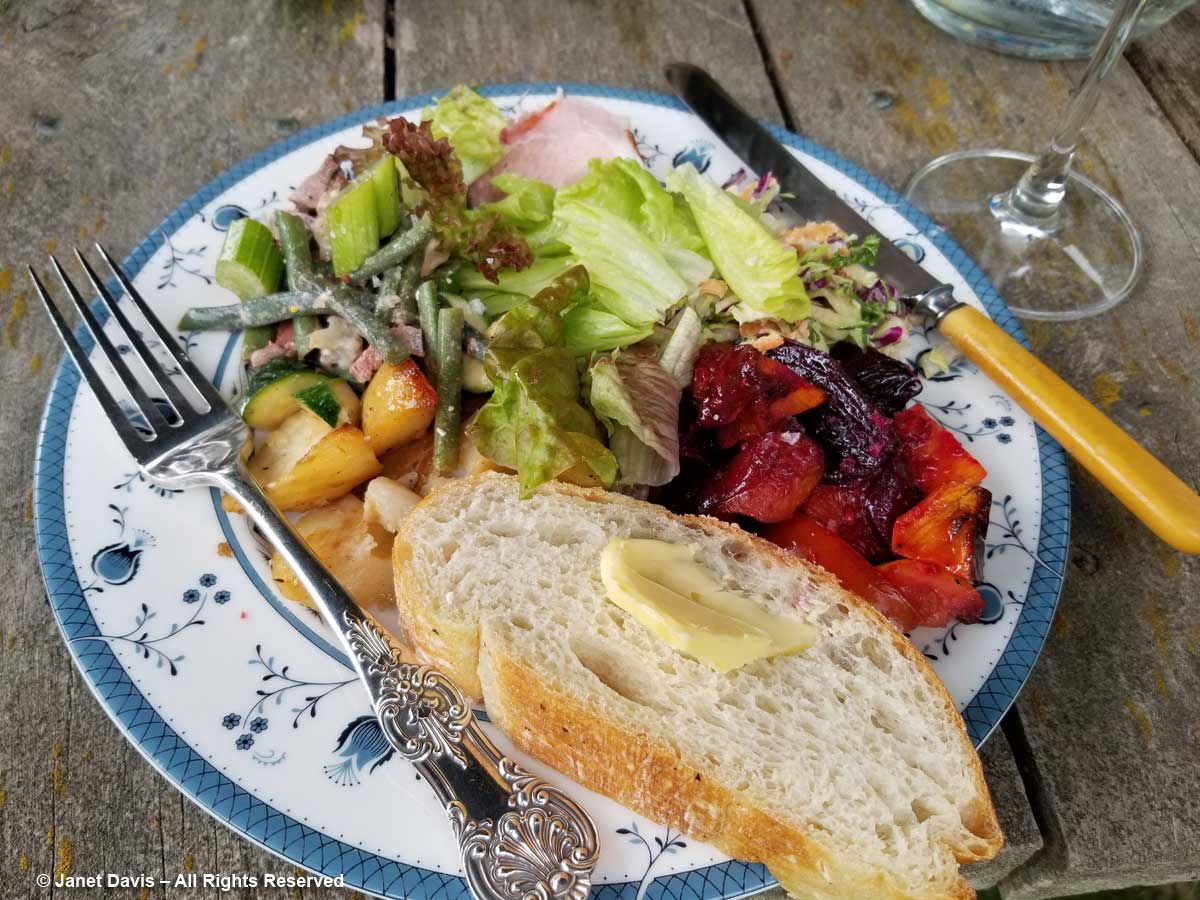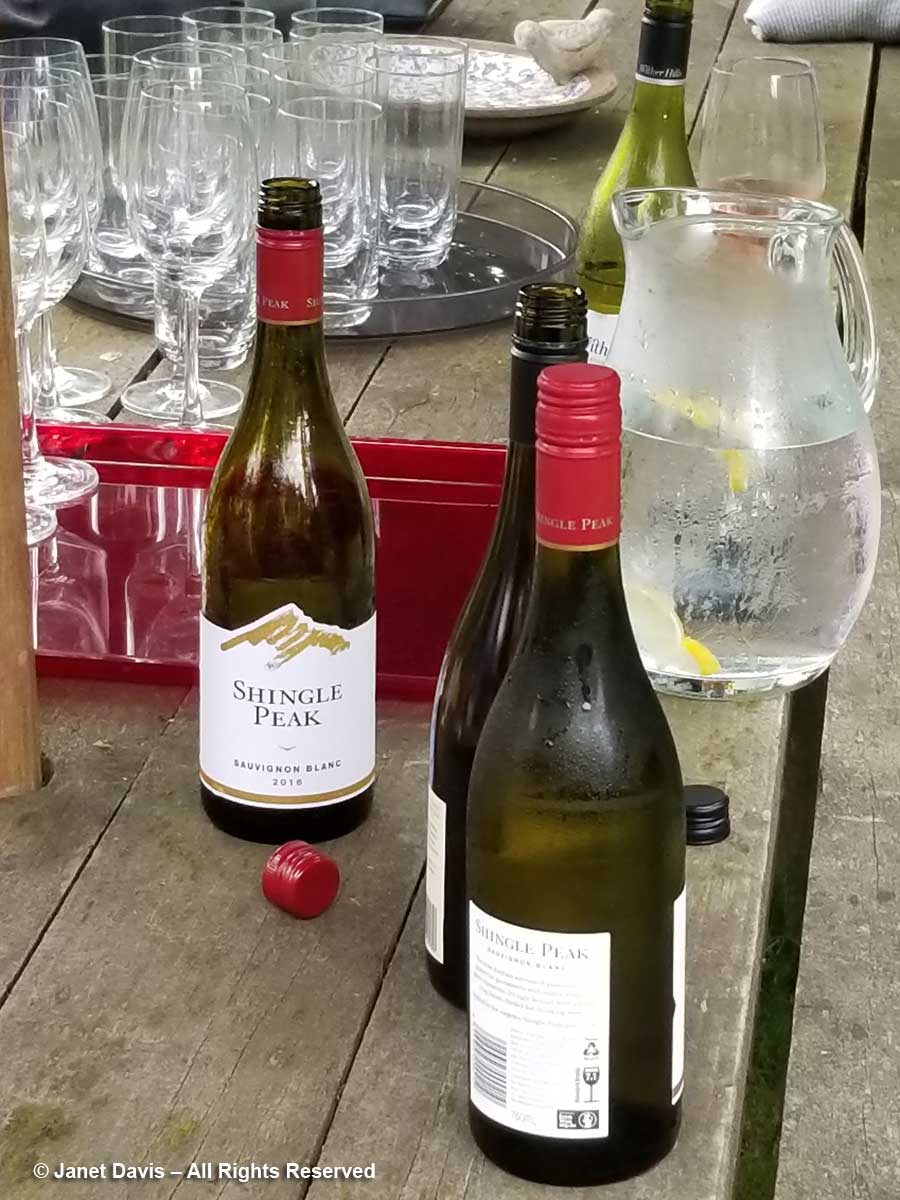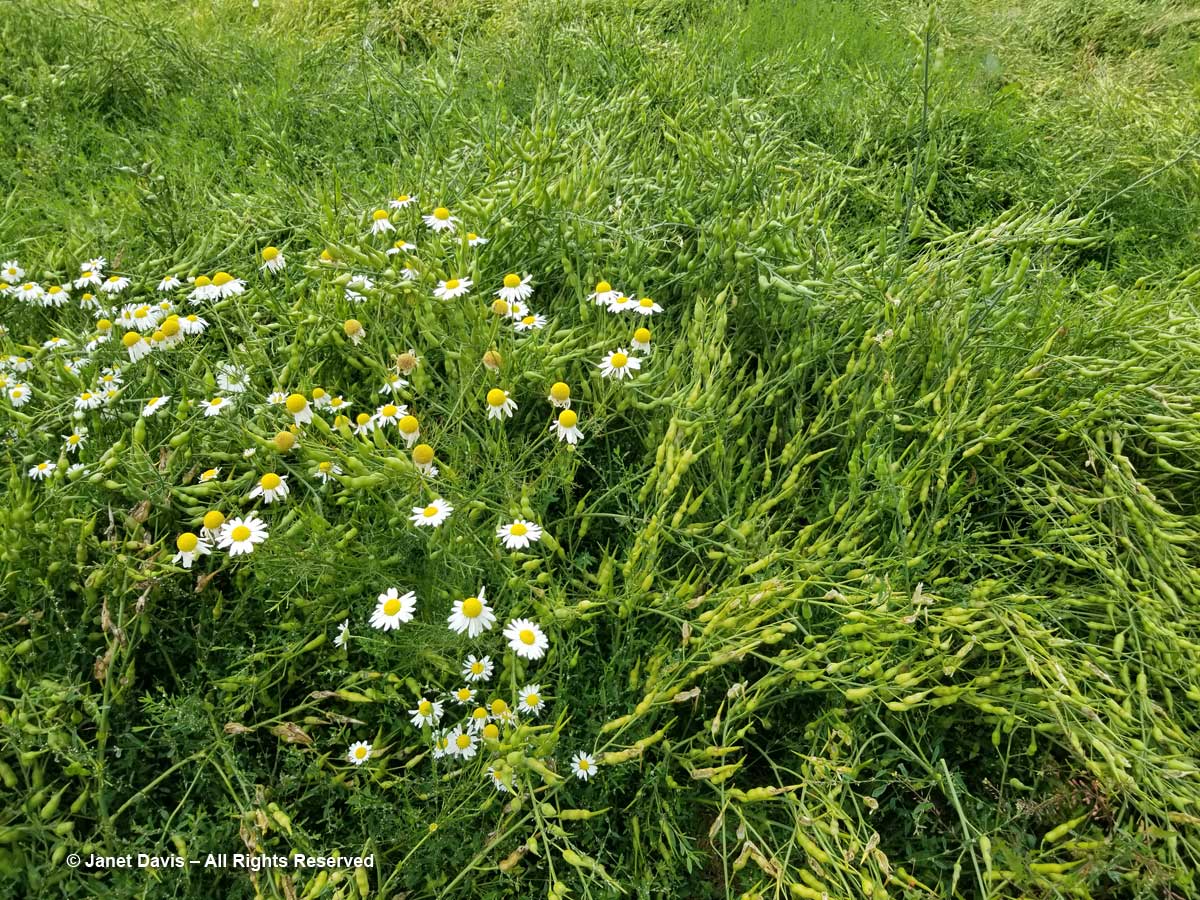It’s a year since we did our New Zealand garden tour with the American Horticultural Society, and though I almost completed blogging about the beautiful gardens last winter, I didn’t quite finish before spring gardening began and more travel to Denver and Texas interrupted my focus. So today’s blog takes us back to the Marlborough region on the South Island. Pretend you just finished reading my last NZ blog, mosaic artist Josie Martin’s fabulous Giant’s House Garden at Akaroa, on the tip of the Banks Peninsula south of Christchurch. Now we’re going to head north via an overnight in Christchurch into Marlborough’s Awatere Valley south of Blenheim to Joe and Carolyn Ferraby’s beautiful Barewood Garden Farm, their 690 hectare (1705 acre) property. We gathered together at the bottom of a hill to watch a shepherd…..
….. guide his sheep dogs as they herded a large flock.
Then we went inside the shearing shed, where we watched the shepherd shear a big ewe……
….. after which the wool from this Merino cross…..
…. was heaped upon a table, where it would be braided and taken to auction. Ten percent of the farm’s production is wool; the remainder is from lamb export sales.
I made a short video that shows the shepherd’s skill at herding the sheep and also shearing them. As Joe says in the video, the farm has a number of shearers who would normally do this work, leaving the shepherd to handle the flock outdoors.
Then it was time to see the garden. Alas, sometimes it’s necessary to visit beautiful gardens in brilliant midday sun, which creates very difficult light conditions and extreme contrast, so I didn’t do a lot of photography in Carolyn’s beautiful, colour-themed borders. (Added to which, I somehow had my new phone stuck on square format…..) But let’s take a little tour anyway. In this climate, one of the best defences from the heat is a shady pergola, and this was a lovely one, wreathed in white roses.
It’s where Carolyn served us lemonade……
….. and a delicious cake with cherries from the garden. We were so lucky to dine and snack in most of the gardens on this fantastic tour.
I noticed that the garden featured lovely summerhouses and patios for lounging with a book ……
….. or al fresco dining……
….. or simply sitting in a kiwi-green chair to relax.
But it was time to leave the shade of the wrap-around verandah, where Carolyn’s background as a florist is in beautiful evidence……
….. and walk down the sunny lawn…..
…. where we found a long, cool allée, the hawthorn walk………
…. and hedge-enclosed borders, which featured perennials and perfumed roses….
…. and tall, fragrant lilies.
There was a blue, yellow and white border. Oh, what I would have given to be there in early morning or on an overcast day to see all these treasures…..
…. like the azure agapanathus.
Speaking of agapanthus, Carolyn grew a paler variety overlooking the pond…..
…. and beside the fenced orchard….
…. where apples and peaches were ripening in mid-summer. This fruitful part of the country, after all, is where most of New Zealand’s wine industry is located.
A cobble path led through the enclosed potager, which featured Tuscan kale……
…. and lavender, and lots of unusual edibles….
…. like New Zealand cranberries (Ugni molinae).
Beside the wall of the house was a pretty blue-and-purple garden, with cranesbills (Geranium ‘Rozanne’), plumbago and more agapanthus. You can see below what a difference a little shade makes in photography.
Then we had just enough time to greet Joe and Carolyn Ferraby outside their….
….little gift shop, where we shopped for souvenirs. Among the many lovely items, we found sheep-themed tea-towels and…..
….. bars of fragrant New Zealand floral soap. Then it was time to say farewell, and head out on the road in Marlborough.

